Travel Photography Lighting: 4 Essential Tips
A Post By: Karthika Gupta

Want to capture stunning travel photos ? Then you must learn to master lighting.
You see, while camera gear , composition , and post-processing are all essential parts of travel photography, lighting is often the make-or-break factor. If you get the lighting right, your images will look eye-catching and even dramatic – but if you get the lighting wrong, then your images will turn out boring, flat, and otherwise unpleasant.
(I’m not talking about artificial lighting. I like to use natural light in my travel photos, and I very rarely travel with an external flash because of the extra weight. I’m also not a huge fan of the flashed look.)
Therefore, in this article, I share four fundamental tips for travel photography lighting, including:
- The best times of day to shoot travel photos
- How to think about the weather and its effect on lighting
- How to adjust your position in relation to the light for amazing results
So if you’re ready to become a travel lighting master, then let’s dive right in!
- 1. Start by shooting at the right time of day
Natural light changes constantly .
Depending on the time of day, you’ll get very different types of lighting – and very different results. That’s why you should always pay attention to the time when planning your travel photography outings.

You see, while there is no best time of day for travel photography, different types of lighting work well for different scenes, so you should always tailor your lighting to your subject (or vice versa).
Specifically:
- If you want to create beautiful silhouettes or soft, golden-lit travel photos, schedule your outing during the golden hours (the hour or two after sunrise and the hour or two before sunset). Golden-hour lighting is great for dramatic architectural photography, it’s great for landscapes, and it’s great for portraits, too.
- If you want to highlight color and detail, schedule your outing for a heavily overcast day. Obviously, it’s not always possible to predict this in advance, but do the best you can, and don’t be afraid to change your plans as required. Overcast light is wonderfully diffused, and it’ll allow you to capture intimate portraits, architectural details, and landscapes that focus on the subject (not the sky!).
- If you want to create street-style shots, then plan to shoot when the sun is bright and high overhead. Look for interesting shadows, embrace the high-contrast effect, and experiment constantly.
- If you want to create magical, ethereal landscape or cityscape photos, plan your photoshoot for just after the sun sets. This time is known as the blue hour , and it’ll give you stunning skies as well as enough light for some foreground detail.

Bottom line: When planning a travel photography photoshoot, check the weather. Then, just before you leave, check it again. And always have a backup plan in place, just in case!
- 2. Carefully analyze the location when you arrive
Once you arrive on location, before you take out your camera, spend some time looking around and evaluating the light.
In particular, pay attention to the lighting quality and the lighting direction .
The lighting quality primarily depends on the time of day and weather factors discussed above, but these can change rapidly, so it always pays to take one more look before you shoot. Also, if you’re shooting indoors, the light may be diffused or blocked by walls and windows, so it’s a good idea to really look at the light and see how it falls.
The lighting direction is determined by the position of the sun (if you’re outside) or the position of the windows (if you’re inside). And by working deliberately with different lighting directions, you can radically improve your photos.
Front light , for instance, is great for illuminating subjects evenly. It’ll get you highly detailed photos, but it tends to lack drama. (A lack of drama isn’t necessarily a bad thing; it’s just an effect you should be aware of.)
Backlight , on the other hand, is full of drama. It creates silhouettes, it creates lens flare, and it creates rim effects that look incredibly artistic. On the other hand, backlight isn’t great if you want to create detailed and/or documentary images.

Finally, sidelight is a great way to produce dramatic-yet-detailed images. Because sidelight falls on the subject from an oblique angle, you get beautiful shadows, plenty of texture, and a well-lit subject. It’s a great way to create captivating landscape and architectural images, especially when the sun is low in the sky.

Of course, the lighting direction is often fixed – you can’t ask landscape or architectural subjects to move, after all! – but by selecting subjects based on the light, you can maximize the quality of your shots.
- 3. Select gear based on the lighting situation
Before you head out on a travel photoshoot, make sure that you bring the right gear for the job.
If you plan to be shooting in bright, midday light, you can often take only your standard camera and lens. You won’t need a travel tripod, you won’t need a special lens, and you won’t need a remote shutter release .
If the sky is overcast or you’re working indoors, I’d recommend bringing a good travel tripod , especially if you plan to shoot landscape or architectural scenes. You’ll want to narrow your aperture for sufficient depth of field , but that will require a slow shutter speed – and if you don’t have a tripod, you’ll end up creating blurry shots.
If you’re shooting around sunrise or sunset, a tripod will again come in handy. The light will be too dim to allow for a deep depth of field at handholdable shutter speeds (plus you can use the tripod to create beautiful long-exposure images). A remote shutter release is a good idea, too; it’ll let you fire the shutter without generating camera shake.

And if you’re shooting after dark, a tripod and a remote shutter release are absolutely essential. The exception is if you plan to do travel street shots – and if you do, I’d recommend using your largest-aperture lens and a camera with impressive high-ISO capabilities .
By the way, if you plan to do nighttime astrophotography, a wide-aperture lens and a high-ISO camera are also important. You’ll need to shoot at f/2.8 or wider to prevent movement in the stars, plus you’ll often need to crank your ISO up to 1600 and beyond.
- 4. Don’t be afraid to photograph in bad weather
I’ve talked all about the value of golden-hour lighting, blue-hour lighting, and bright sunny days…
…but sometimes you’ll get stuck with bad weather, and you’ll wonder whether it’s worth going out at all.
You want to know what I think? Bad-weather days are amazing for travel photography .
You see, while bad-weather lighting is often dim, it’s also very soft, which helps bring out colors and emphasize details.
Plus, bad weather can also produce dramatic lighting, especially when the sun breaks through the clouds before, after, or during a rainstorm.
And rain, snow, or sleet can add that extra bit of oomph that’ll make for award-winning shots.
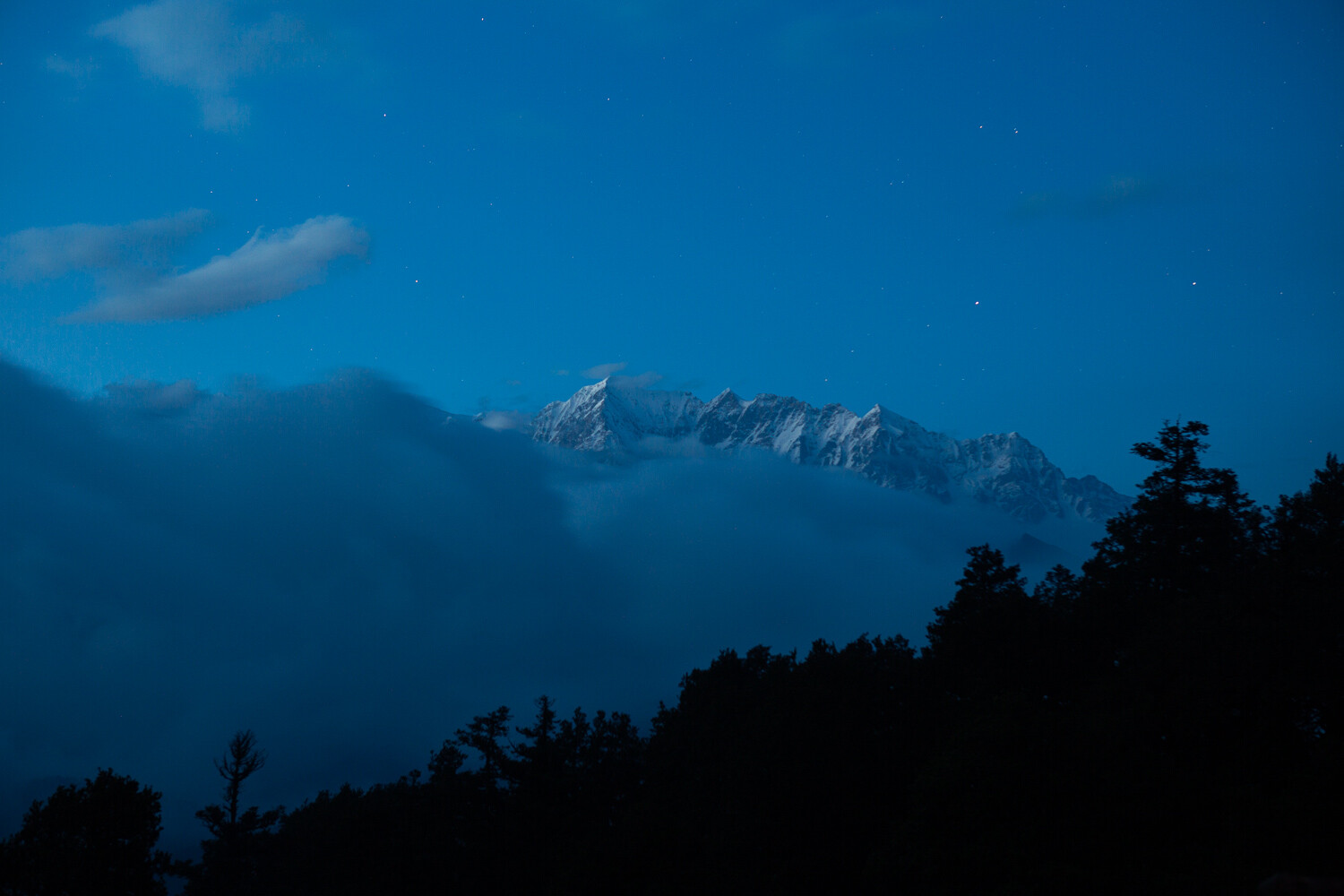
Of course, you will need to protect your gear – I’d recommend carrying a waterproof rain cover at all times – and you’ll need to keep yourself safe, too. But if you’re adequately prepared, bad-weather photography can be incredible!
- Travel photography lighting: final words
Now that you’ve finished this article, you know all about lighting in travel photos – and you’re ready to head out and capture some beautiful images!
So think about the weather. Think about the time of day. Think about the light direction.
And enjoy your travel adventures!
Now over to you:
Do you have a favorite type of light for travel photography? How do you plan to adjust your travel photoshoots in the future? Share your thoughts in the comments below!

Table of contents
Travel photography.
- 8 Ideas of What To Do With Your Vacation Photos
- What Skills do You Need to be a Travel Photographer?
- How to Capture the Essence of a Place – Travel Photography Tips
- 7 Tips to Make Travel Photography Interesting Again
- Avoid These 5 Major Mistakes Made By Travel Photographers
- Travel Photography – Do You Ask Permission Before, After Or Not At All?
- Travel Photographers Workflow – At Home and on the Road
- The Photo Critique: Travel Photo Edition
- 6 Reasons Why Your Travel Photos Don’t Look Like the Ones in Magazines
- The Fine Line Between Travel Photography and Having a family Vacation
- 10 Ways to Improve your Vacation Photos
- What is Your Biggest Travel Photography Challenge?
- 7 Travel Photography Hacks to Get You Going Places
- How to Use a Travel Photography Shot List to Come Home with Better Photos
- Why You Need To Be A Guerrilla Travel Photographer – And How To Become One
- How to Get the Most Out of a Travel Photography Location
- Travel Photography, Backpacking and Packing Light
- 6 of the Best Smartphone Apps for Travel and Landscape Photography
- How To Keep Camera Gear Safe While Traveling
- 5 Ways to Find Great Locations for Travel Photography
- 15 Tips for Protecting Your Images While Traveling
- Safety Tips for Travel Photographers (Particularly Women)
- Off Camera Flash for Your Travel Photography
- Photo Composition Tips from Bob Holmes – Composition in Travel Photos
- The Importance of People in your Travel Photos
- Create More Unique Travel Photos by Adding a Model
- 5 Lessons Learned Switching from DSLR to Mirrorless for Travel Photography
- How To Keep Your Batteries Charged While Traveling – Remote Location Edition
- 5 Tips For Travel With Only One Lens
- 5 Lessons Learned While Using a Kit Lens for Travel Photography
- 7 Tips for Using a Tripod in Landscape and Travel Photography
- The Best Fujifilm X-Series Kits for Travel Photography
- The First 10 Things You Need to Buy After Your Camera for Travel Photography
- Tiniest Interchangable Lens Micro Four Thirds Cameras for Travel with Amazing Quality
- The Only Three Lenses You Need for Travel Photography
- Must Have Gear for Travel Photography Newbies
- Why Olympus Mirrorless Cameras are Top Notch for Travel Photography
- The Best Travel Photography Lenses: Our Top 12 Picks
- 5 Camera Bags That Every Travel Photographer Needs At Some Point
- A Travel Tripod that can Also Act as a Light Stand
- The iPad as a Photographer’s Travel Helper [a Review]
- 7 Non-Photography Items Which No Travel Photographer Should Leave Home Without
- 7 Reasons Why a Tripod is a Travel Photographer’s Best Friend
- Travel Photography Equipment – What To Pack?
- 10 Ways to Improve Your Travel Photography Portraits
- How to Plan and Take Killer Sunset Photos on Your Next Vacation
- Tips for Photographing Local Parks
- How to Find the Best Kinds of People to Photograph While Traveling
- 4 Ways To Make Better Street Portraits While Traveling
- How to Photograph People When Traveling
- How To Take More Creative Environmental Travel Portraits
- Photographing Signs – Travel Photography Tip
- Tips for Creating Better Documentary Travel Photos
- 6 Tips for How to be a Culturally Sensitive Travel Photographer
- Travel Photography Subjects: Old People
- How to Put the Fine Art into Travel Photography
- Travel Photography without the Travel – Going Local
- How to Tell Better Visual Stories with Travel Photography
- Create a Theme to Step Up Your Travel Photography
- Travel Photography ~ Think Outside The Postcard When Photographing Famous Landmarks
- Photographing Festivals and Events – Tips for Travel Photographers
- Video: Travel Photography Tips – Shoot with a Purpose
- 7 Reasons Why You Should Art Direct Your Travel Photography
- Buy Less Gear: Travel and Experience More
- Editorial Travel Photography – Telling the Story of a Location
- Travel Photography Subjects: Religion
- Travel Photography Subjects: Views
- Travel Photography Tips – Photographing the Coast
- Taking Photos in Busy Tourist Destinations with no People in the Shot
- How to Backup and Manage Your Photos When Traveling Without a Computer
- Tips for Creating a Killer Vacation Photo Book
- Photo Editing Workflow for Travel Photography
- How to Build a Travel Photography Portfolio
- How to Become a Professional Travel Photographer – Two Paths
- 11 Tips for Shooting Travel Stock Photography to Make Money
- How to Sell a Travel Story to a Magazine and Help Fund Your Travels
- 7 Realities That Hit Once You Become a Professional Travel Photographer
- Is a Career in Travel Photography Right for You?
- Travel Inspiration: Bali
- Canadian Travelogue – Introduction
- Travel Photography Inspiration Project: South Africa
- Travel Photography Inspiration Project: Thailand
- Canadian Travelogue – Newfoundland – Gros Morne National Park
- Travel Photography Inspiration Project: India
- Travel Photography Inspiration Project: Japan
- Travel Photography Inspiration Project: Kenya
- Travel Photography Inspiration Project: Morocco
- Travel Photography Inspiration Project: Vietnam
- An Interview With World Traveler Gary Arndt
- Interview: Oded Wagenstein – Author of Snapn Travel Guide and dPS Writer

Read more from our Tips & Tutorials category
is a culture, people and travel photographer, based in the Chicago area. Her images are fun, fresh and natural, and her love for nature makes it way into most of her images. She also has a Free Travel Photography Demystified E-Course , a 5-Day video series to help you improve your travel photography.

- Guaranteed for 2 full months
- Pay by PayPal or Credit Card
- Instant Digital Download

- All our best articles for the week
- Fun photographic challenges
- Special offers and discounts

- Student Successes
- My Learning
7 Best Photography Lighting Kits in 2024 (Pro & Beginner)
You can also select your interests for free access to our premium training:
The best photography lighting kits can lift your photos to another level. Of course, there’s a cost to this. No studio lighting set is cheap. There are some more affordable ones. And there are some expensive ones with eye-watering price tags!
We’ve come up with a selection for you at a number of price points. But our overall winner is the Godox AD200 Pro . It’s versatile, offers TTL and HSS , and has interchangeable heads.
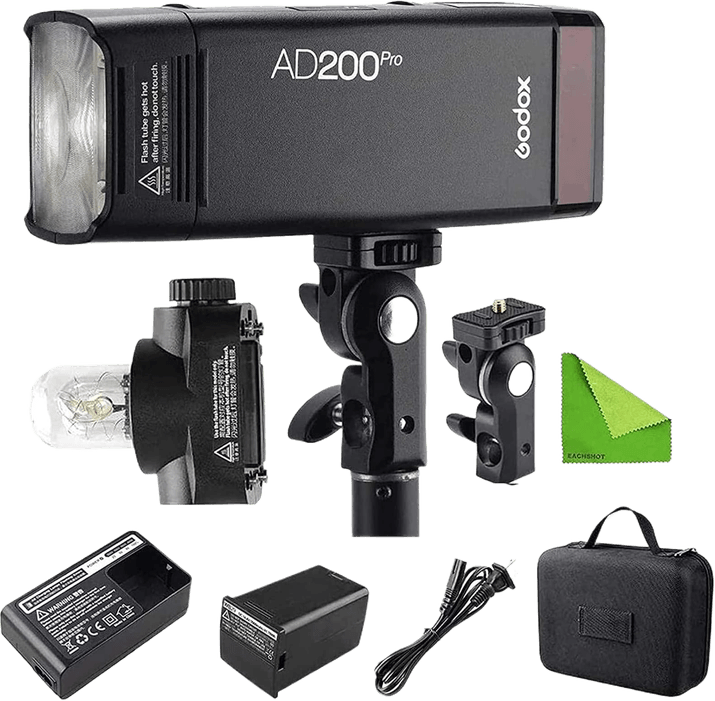
If you buy a product through one of our referral links we will earn a commission (without costing you anything). Prices last updated on .
As an Amazon Associate, I earn from qualifying purchases. Product prices and availability are accurate as of the date/time indicated and are subject to change. Any price and availability information displayed on Amazon at the time of purchase will apply to the purchase of this product.

What Is the Best Photography Lighting Kit?
In many situations, natural light is the ideal. But it is fickle, limited in time, and very difficult to control.
In many areas of photography, consistency is needed. Whether you’re shooting products or people, you often don’t have time to wait for the light to be right.
So studio lights offer consistency and control. And with the right accessories and careful use, you can get very natural-looking results. (Not everyone wants pictures looking like an American Apparel ad.)
A range of photography lighting kits is available with a huge variety of features. So before we look at our recommendations in detail, here is a summary of all the lighting kits in our review.
- Maximum power output of 200 W
- A standalone flash or can be used with other Godox flashes
- High-quality materials and designed for rigors of professional use
- Relatively lightweight and portable
- Powerful and durable lights
- Wide range of adjustments
- Variety of modifiers included
- Wireless triggering
- Powerful output for a battery-operated light
- Backed by a 5-year warranty
- Easy to transport in its carrying bag
- Simple control via the Elinchrom app
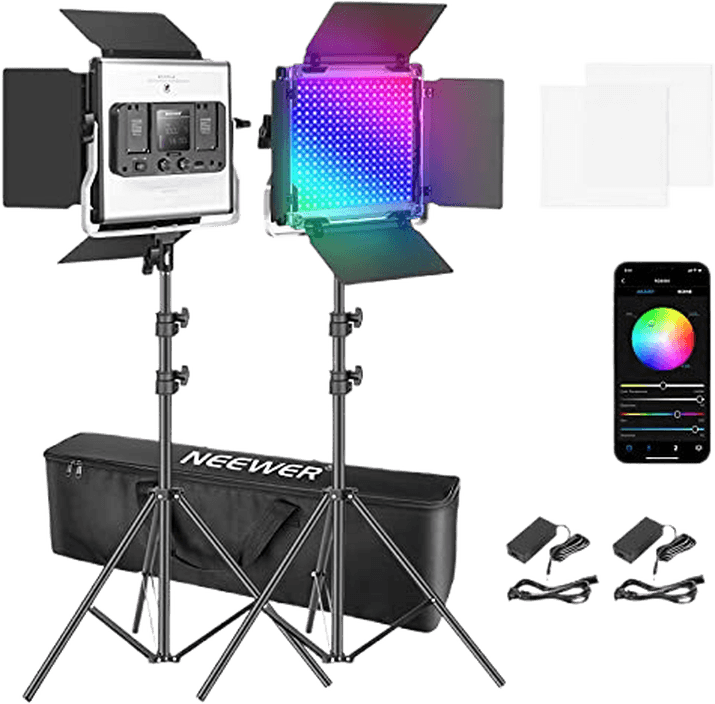
- Affordable for the budget-minded photographers
- Versatility due to the RGB continuous lights
- Lightweight and portable
- Easy control via the Neewer app

- Useful 700 W output
- Simple to operate via the interface
- Quality, durable materials
- Wireless inter-connectivity
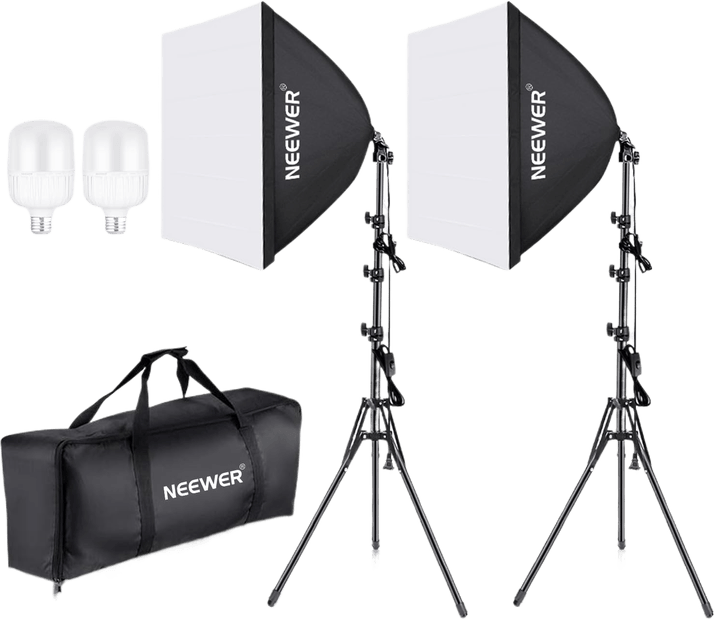
- Very good value
- 700 W lights are good for many applications
- Simple to set up and use
- Lightweight and easily portable
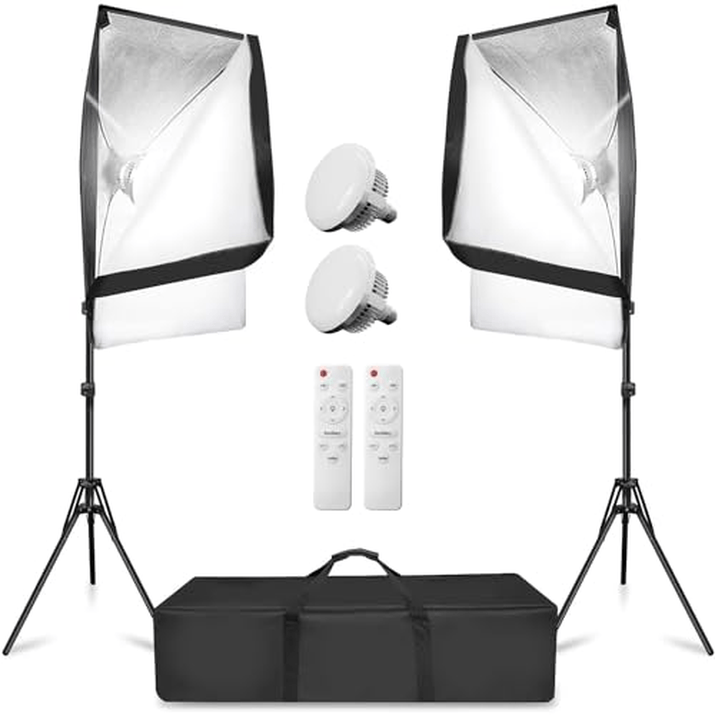
- 60 W continuous power suitable for video work
- Standalone or combines with other Godox lights
- Simple-to-use interface
- Very lightweight and easily portable

7 Best Photography Lighting Kits
Once you decide whether you want strobes or continuous lighting , you’ll want to see what else the kits offer. Here are our recommendations in detail.
1. Godox AD200 Pro
The Godox AD200 Pro is a powerful and versatile flash kit. It is perfect for a variety of photo and video applications. It includes an AD200 Pro flash head, a rechargeable battery, and a variety of modifiers.
The flash head offers a maximum power output of 200 W (watts). And it has a GN ( guide number ) of 60 (ISO 100, two meters). It is also equipped with a variety of features.
It has HSS up to 1/8000 s, TTL metering, and a built-in radio receiver. And its battery power opens up possibilities for location shooting and studio work.
The flash head is compatible with a wide range of modifiers, like softboxes, snoots, and umbrellas (bought separately). So it’s a versatile lighting tool for a variety of creative effects.
It is also a relatively lightweight and portable flash kit. This makes it a good option for photographers who need a powerful and versatile flash kit that they can easily transport.
The kit is perfect for a variety of applications, including event, portrait, and product photography . It is also a good option for videographers who need a powerful flash kit for interviews or weddings.
The main strengths of the AD200 Pro are its power output, versatility, and portability. The kit is also well-made and easy to use.
The AD200 Pro isn’t cheap, however. And you’ll want to buy at least two for most photoshoots. So it may not be a good option for budget-minded photographers.
2. Profoto D1 Air Studio Kit
The D2 Air Studio is a professional-grade lighting kit offering top-of-the-line performance. It includes two D1 Air flash heads, a Profoto Air Remote TTL -C trigger, and a Profoto D1 Air Power Pack.
The D1 Air flash heads offer a maximum power output of 500 W. They have a guide number of 90 (ISO 100, 2 meters). They are also equipped with a variety of top-notch features.
The flash heads have HSS up to 1/8000 s, TTL metering, and a built-in radio receiver. And the Power Pack provides up to 400 full-power flashes and can be charged in just two hours.
The kit is great for professional photographers looking for the best possible performance. It is also a good option for photographers who need a versatile and portable lighting kit.
Like the Godox, this kit is relatively expensive. But it is worth the investment for serious photographers looking for serious gear. Plus, it’s a great choice for a variety of applications.
It’s a great fit for fashion, product, and portrait photography . It is also a good option for photographers needing a powerful flash kit to shoot weddings or events.
The main strengths of the kit are its power output, versatility, and portability. The Profoto D1 Air Studio Kit is a professional-grade lighting kit that offers a wide range of features and accessories.
3. Elinchrom ELB 1200 To Go
The Elinchrom ELB 1200 To Go lighting kit is powerful and portable, perfect for on-location shoots. It includes an ELB 1200 battery pack, two ELC 1200 flash heads, and a variety of modifiers.
The battery pack provides up to 200 full-power flashes and can be charged in just two hours. The flash heads offer a maximum power output of 1200 W and a guide number of 160 (ISO 100, 2 meters).
The flash heads are also equipped with a variety of features. This includes HSS up to 1/8000 s, TTL metering, and a built-in radio receiver.
The kit is compatible with a wide range of modifiers , including softboxes, umbrellas, and snoots. This makes it a versatile lighting tool. So it can be used for a variety of creative effects and purposes.
If you need a powerful and portable lighting kit for on-location shoots, this lighting kit is a great choice. But it is another expensive, serious kit for those needing its power, flexibility, and reliability.
The Elinchrom ELB 1200 To Go kit is perfect for a variety of photo applications. It is well-made and easy to use. And it offers a wide range of features and accessories.
4. Neewer 660 RGB Led Video Light
The Neewer 660 RGB LED video light is an affordable yet feature-packed kit. It includes three adjustable LED lights with RGB color options for creative lighting effects.
The lights are continuous lights, which means they emit a constant stream of light when turned on. And they offer a maximum power output of 200 W each.
The video lights have a color temperature range of 2700 to 6500K. This is the standard range for studio lighting.
They also have a variety of features, like HSS up to 1/8000 s, HSL mode, and a built-in LED display. Plus, the built-in HSL mode allows you to create custom colors.
It is a great choice for photographers and videographers. It’s a versatile and affordable lighting kit for creative lighting effects. It is also a good portable option for on-location shoots.
The kit includes a variety of accessories, like softboxes, umbrellas, and barn doors. This makes it a versatile lighting tool that can be used for various creative photoshoots.
Neewer makes a range of photography accessories with a reputation for being good value for money. The 660 RGB LED follows that tradition and is a solid choice for a mixed photo and video lighting set.
5. Neewer 700W Professional Lighting Kit
The Neewer 700W professional lighting kit is budget-friendly and offers two 350 W permanent lights, light stands, and softboxes. The kit is a great option for a basic studio lighting setup.
The lights offer a maximum power output of 350 W each and a color temperature temperature of 5600K. They are also equipped with a variety of features, like a modeling lamp and a built-in reflector .
The kit includes two sturdy stands and two softboxes. This makes it a really good lighting kit for learning your craft and experimenting with studio lighting. Its main strengths are its affordability, versatility, and ease of use.
And although it’s not the most powerful setup, this can be an advantage in a small studio, where sometimes strobes can be too bright. It’s also helpful if you’re trying to avoid using small apertures .
The Neewer 700W professional lighting kit is versatile and affordable. It is perfect for a variety of photoshoots. And it is a good option for budget-minded photographers.
6. LimoStudio 700W Photography Softbox Lighting Kit
The LimoStudio 700W photography softbox lighting kit is simple and affordable. It offers two softboxes, two light stands, and two 125 W photo lights. It is a great, basic studio lighting setup.
The lights offer a maximum power output of 160 W each and a color temperature of 6500K. Taking into account the two included softboxes, you’re getting a decent kit for the money.
This is a no-frills, basic kit. So you might find the power a little limited for portrait work, as it might need slower speeds. But it would be ideal for product photography with a tripod .
This 700W softbox lighting kit is a good choice if you’re looking for a basic studio lighting setup. It is also a good option for photographers who are on a budget. It’s hard to argue with the price!
7. Godox SL-60W LED Video Light
The Godox SL-60W LED video light is a powerful and versatile continuous light. It’s perfect for a variety of photography and videography applications.
The light offers a max power output of 60 W and a color temperature range of 3200 to 5600K. The 5600K setting is pleasant and standard for studio lighting .
It is also equipped with a variety of features. They include HSS up to 1/8000 s, HSL mode, and a built-in LED display.
The SL-60W is a continuous light. This means it emits a constant stream of light when turned on, making it a good choice for videography.
And it can be used with a variety of modifiers, like barn doors, softboxes, and umbrellas. This makes it a great choice for a variety of creative lighting effects.
What we like about the SL-60W LED video light are its power output, versatility, and price. But some might find the size off-putting. It’s relatively large and heavy, which can make it difficult to transport.
And the fan-cooled head will ensure you get max performance. But it might be a concern for video work. However, it still works well in several photo and video applications.
Continuous lights are increasingly attractive as LED technology improves. And the SL-60W LED video light is a case in point. It is well-made, durable, and offers a wide range of features and accessories.
Photography Lighting Kit Buyers Guide
Lighting kits are a great way to improve the quality of your photos. They can help you to create professional-looking images, even in low-light conditions.
But there are many different photo lighting kits on the market. So it can be difficult to know which one is right for you.
This buyer’s guide will help you to choose the best lighting kit for your needs. We’ll look at different types of kits and answer some of the most common questions about them.
Types of Lighting Kits
There are two main types of photography lighting kits. There are continuous lighting kits and strobe lighting kits:
- Continuous Lighting Kits : These emit a constant stream of light . And they are a good choice for photographers who want to see the results of their lighting changes in real-time. They are also good for videography. This is because they let you see the results of your lighting changes as you record.
- Strobe Lighting Kits : These emit a brief burst of light. They are basically an oversized flashgun . Strobe lighting kits are good for photographers who want to create dramatic lighting effects. They are also good for photographers who need to freeze fast-moving subjects.
Kit Features to Look For
When choosing a photography lighting kit, there are a few features you should look for. These include the following:
- Power Output : The output power of a lighting kit determines how bright the lights will be.
- Color Temperature : A lighting kit’s color temperature determines the color of the light.
- Modifiers : These are accessories used to control the light from a kit. They include softboxes, umbrellas, and barn doors.
- Portability : If you plan on transporting your lighting kit, you must ensure it is easy to pack and carry.
Photography Lighting Kit FAQs
Here are answers to the most frequently asked questions about photo lighting kits.
What’s the Difference Between Continuous Lighting and Strobe Lighting?
Continuous lighting emits a constant stream of light. Strobe lighting emits a brief burst of light.
Continuous lighting is a good choice for photographers who want to see the results of their lighting changes in real-time. Strobe lighting is good for those who want to create dramatic lighting effects .
What Is the Best Type of Lighting Kit for Me?
The best type of photography lighting kit for you depends on your needs and budget. Consider a basic, entry-level lighting kit if you’re a beginner or looking for a portable, affordable option.
For professional or studio-level setups? A high-quality strobe or continuous lighting kit with adjustable settings and modifiers may be best.
What Are the Most Common Mistakes When Choosing a Lighting Kit?
These are some of the most common mistakes that people make when choosing a photography lighting kit:
- Not Considering Your Needs : It is important to consider your needs before choosing a lighting kit. If you are a portrait photographer, you will need a different lighting kit than a landscape photographer.
- Not Considering Your Budget : Lighting kits can range in price from a few hundred dollars to several thousand. It is important to set a budget before you start shopping.
- Not Buying Enough Lights : It is better to have too many lights than not enough. This will give you more flexibility in your lighting setups.
Conclusion: The Best Photography Lighting Kit
Choosing the best photography lighting kit for your needs can be tricky. But you’ll find the one you need among the ones reviewed here. And with the right kit, your photography will be transformed.
Our top choice is the Godox AD200 Pro . It has a compact, powerful design and is compatible with a range of modifiers. Plus, it is suitable for both on-location and studio shoots. And it provides photographers with flexible and creative lighting control.
Father's Day Sale | 15% Off Sitewide - Use Code: DAD15 More Details
Father's Day Sale
Show appreciation for his dedication to his craft with a gift that ignites his passion. Our premium lighting solutions will help complete any setup.
Enjoy 15% off sitewide on LumeCube.com.
Use Code: DAD15
Expires 06/16/24 @ 9pm PST - Excludes Open Box and Lume Care Protection Plans

- Cordless Ring Light Pro
- Ring Light 18"
- Ring Light Mini
- Mobile Creator Kit 2.0
- Smartphone Lights
- Mobile Mounts & Accessories
- YouTube Lights
- TikTok Lights
- Instagram Lights
- Gaming Lights
- Podcast Lights
- Selfie / Vlogging Lights
- On Camera Lights
- Behind The Camera Lights
- Backdrop Lights
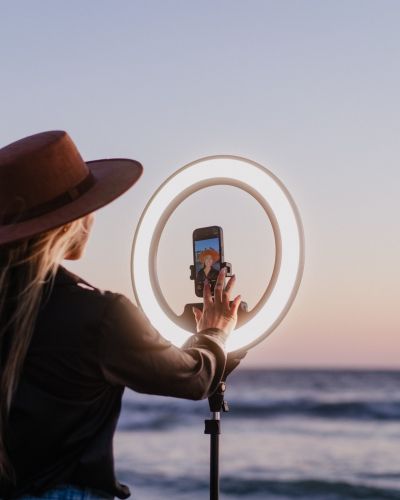
Ring Light Pro

Mobile Creator Kit
- Camera Panel Lights
- Photography Ring Lights
- Photography Tube Lights
- Camera Mounts & Accessories
- Video Panel Lights
- Video Ring Lights
- Video Tube Lights
- Video Light Mounts & Accessories
- Portrait Photography
- Product Photography
- Macro Photography
- Travel Photography
- Wedding Photography
- Continuous LED Lights
- Bi-Color Lights
- Remote / App Controlled Lights
- Waterproof Lights
- Travel / Portable
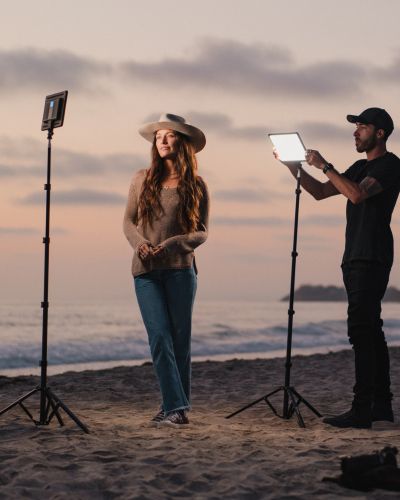
Studio Panel Kit

RGB Tube Lights
- Webcam Lights
- Laptop Lights
- Adjustable Desk Lamps
- Clamp On Desk Lamps
- Dimmable Desk Lamps
- USB Port Desk Lamps
- Office Lights
- Home Office Lights
- Travel & Remote Work Lights
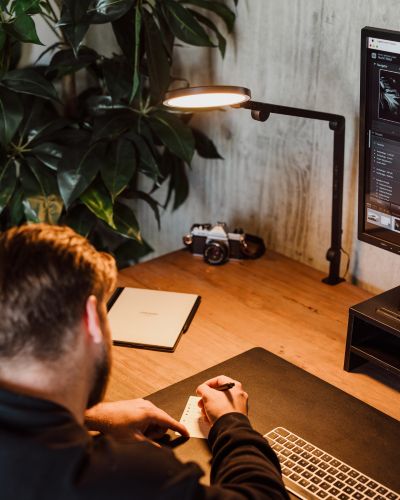
Edge Light 2.0
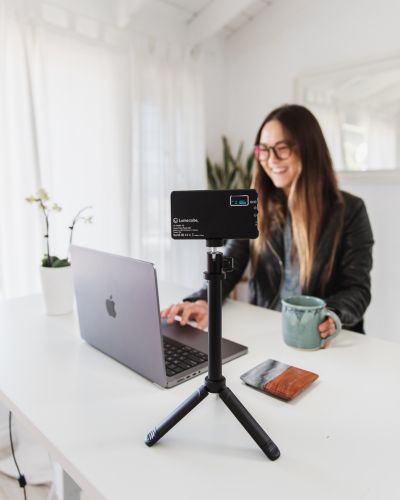
Video Conference Lights
Tattoo Lights
- Architect Lights
- Light Painting
- Art Studio Lighting
- Hair & Makeup Lights
- Esthetician Lights
- Salon Lights
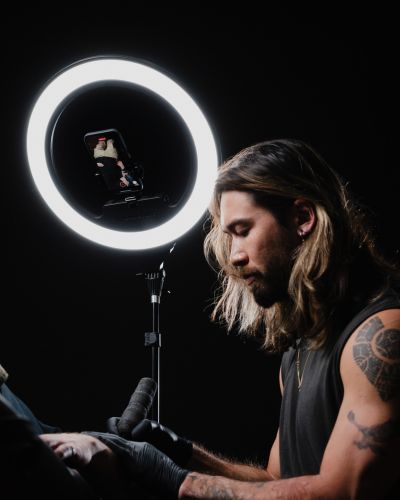
Flex Light Pro
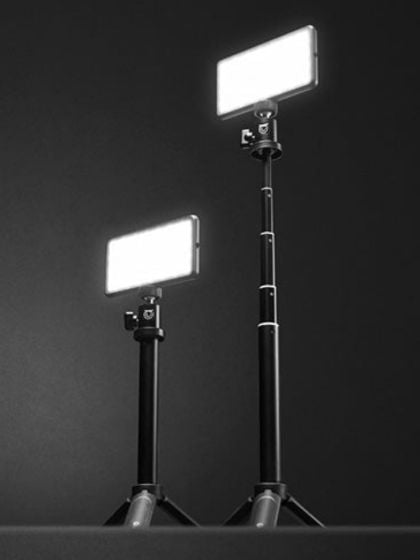
Bundle & Save
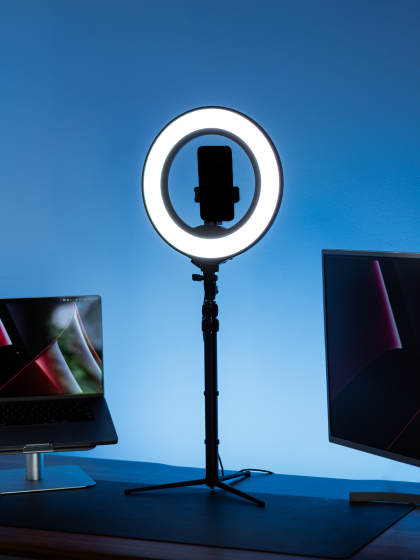
Overstock Deals
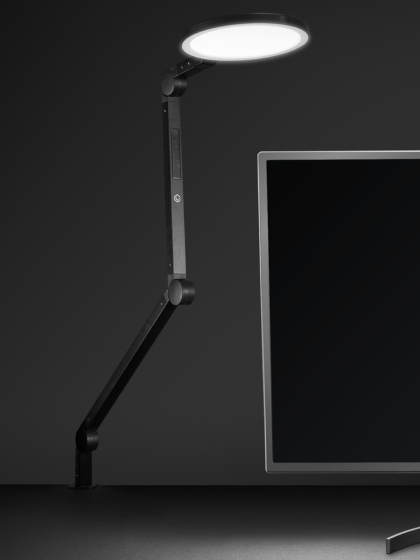
Behind The Light

Featured Artists
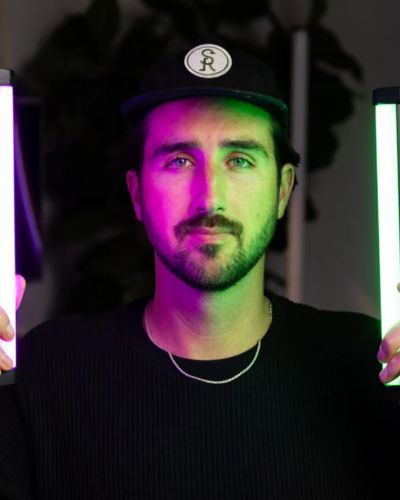
Light Tips & Tricks

Travel Photography Lighting
Lume Cube's range of lights for travel photography is designed for photographers and videographers who are always on the move and need reliable, compact, and portable lighting solutions. Whether capturing breathtaking landscapes, vibrant street scenes, or thrilling adventures, our lights are engineered to meet the demands of outdoor and travel photographers.
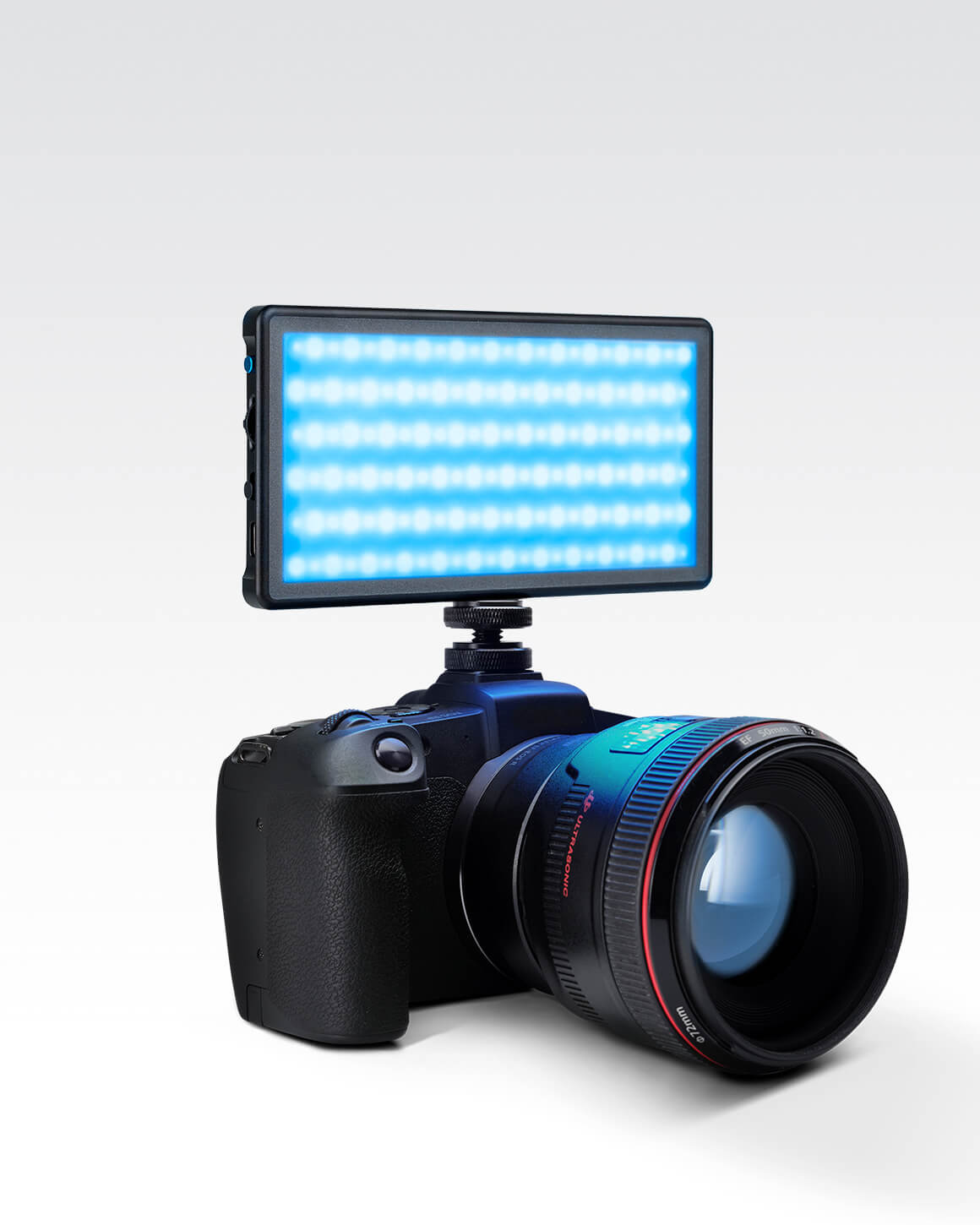
2 colors available
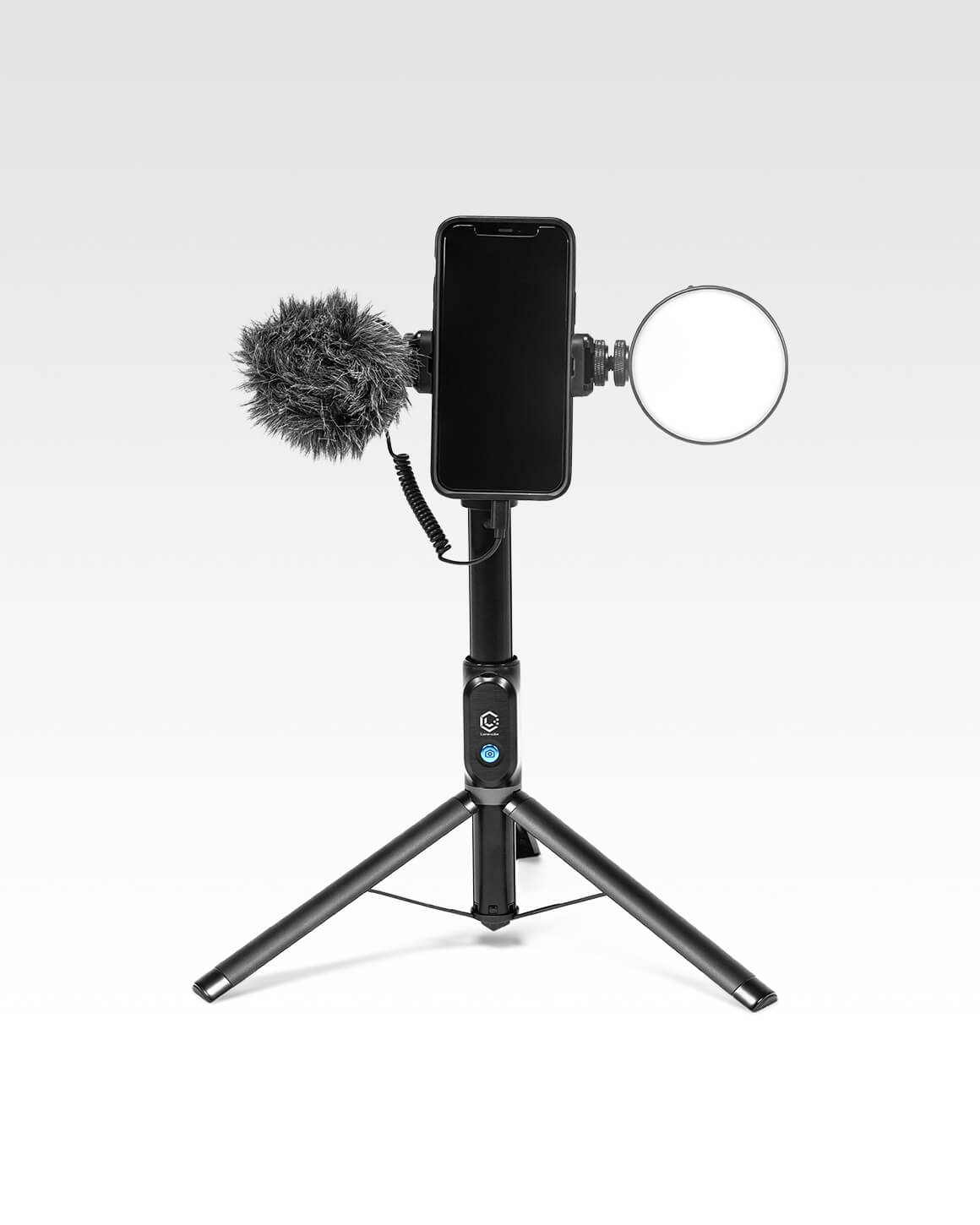
Light Features Travel Photographers Should Consider:
Lume Cube lights for travel photography are essential tools for any professional capturing high-quality images and videos while exploring the world. Our blend of durability, portability, and powerful LED lighting capabilities makes our lighting collection ideal for adventurers, landscape photographers, and any creator in the field. With Lume Cube's lighting solutions, travel photographers can overcome the challenges of on-the-go shooting to produce stunning, professional-level content, no matter where your journey takes you.
- Portability : Compact and lightweight designs make our LED lights easy to pack and carry, fitting seamlessly into camera bags or backpacks without adding significant weight or bulk. Select lights also include travel cases.
- Durability : Built to endure the rigors of travel, our travel lights are made from sturdy materials that can withstand various weather conditions and rough handling, ensuring they remain reliable across countless trips.
- Flexibility : Adjustable settings, including brightness and color temperature, allow travel photographers and videographers to adapt quickly to the changing light conditions typical of outdoor environments.
- Ease of Use : Simple controls and quick setup times make it easy to capture the perfect shot even when time and conditions are not ideal. This is essential for travel photography, where opportunities can be fleeting.
- High-Quality LED Lighting : Despite their small size, these lights provide powerful illumination that can dramatically enhance the quality of images and videos, bringing clarity and vibrancy to shots that would otherwise be compromised by poor natural lighting.
Cookie policy
I agree to the processing of my data in accordance with the conditions set out in the policy of Privacy.
The Best Portable Lighting Kit for Photography (7 Picks in 2024)

While natural light can be great, a lighting kit can help you in a slew of situations. From indoor studio shoots with frustratingly dim lighting to outdoor sessions where your client doesn’t want to be silhouetted against the sunset, there are plenty of times when flashes and continuous lights come in handy.
Here is our selection of the best portable lighting kits you can buy in 2024. We include options for different budgets and experience levels, so whether you need a cheap continuous light, a high-end strobe , or anything in between, we’ve got you covered.
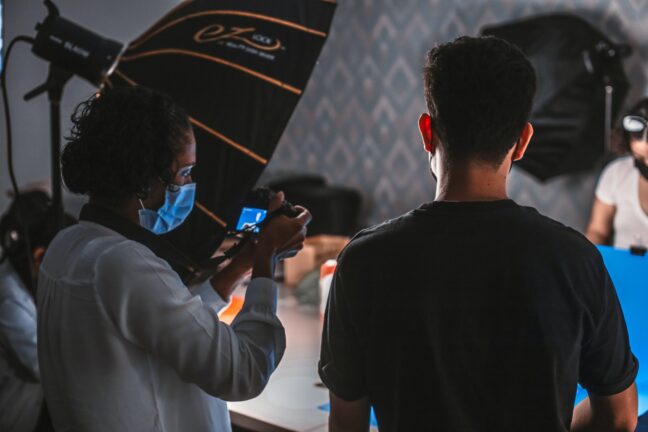
Best Portable Lighting Kit:
Strobe Flashes
When you buy through links on our site, we may earn a commission at no cost to you. We evaluate products independently . Commissions do not affect our evaluations. As an Amazon Associate, we earn from qualifying purchases.
1. Westcott FJ400 Strobe Backpack Kit

This strobe has super-fast recycle times and a long-lasting battery contained in a highly portable backpack.
The Westcott FJ400 Strobe Backpack kit makes it to the top of our best portable lighting kit list for several reasons.
This strobe kit is an all-around gem made by one of the most respected lighting brands around. It’s not cheap, but it’s also not the most expensive portable strobe out there (it’s much cheaper than Profoto lights, for example), and it comes with a collapsible Rapid Box Switch Octa-S softbox light modifier. And everything fits nicely in the backpack for easy, hands-free transportation.

An FJ-X2m universal wireless trigger comes with the kit and is compatible with most camera brands such as Canon, Nikon, Sony (with an optional adapter), Fujifilm, Panasonic, and Olympus. The universal trigger is a great idea, and Westcott is one of the few manufacturers that offers this. Universal triggers save you from having to buy a separate trigger for your specific camera brand.
The high-speed sync (HSS) function allows you to shoot in bright sunlight even at f/1.4, something that traditional flash sync speeds can’t do. It also makes freezing movement a breeze. Recycle times range from 0.5-0.9 seconds, which is impressively fast. This flash can also do continuous capture of up to 20 frames per second, so you can really get creative with your shooting.
The FJ400 comes with an AC/DC power supply, meaning you can use the battery on location or plug it into a wall outlet with the AC power adapter and cord. The battery itself is rated for over 480 full-power flashes on one charge, and that makes this strobe a great choice for weddings, events, and other location shoots.
2. Neewer Vision 4 Strobe Kit

This kit contains two Vision 4 strobes, umbrellas, and softboxes for a budget price.
For those looking for the best portable lighting kit on a budget, the Neewer Vision 4 Strobe kit may be just what you want.
The kit comes with two 300W strobes featuring lithium-ion rechargeable batteries, wireless triggers, rectangular softboxes, and shoot-through white umbrellas. The only things you don’t get are light stands; you’ll have to buy them separately if you don’t already own some.

The Neewer Vision 4 Strobe kit is amazing value for money considering that a single battery-powered strobe can cost much, much more. The fact that the kit comes with wireless triggers and lighting modifiers means it’s basically a photo studio in a bag.
For anyone just getting started with manual flash strobes, this kit is ideal. With around 700 full-powered flashes per battery charge, you can shoot all day with ease, and having two strobes gives you much more versatility when it comes to lighting. Recycle times can be a little on the slow side, though.
The Vision 4 is a manual flash, so you will have to work out the power settings on your own, but it does have a Multi mode that lets you sequentially fire up to 15 flashes in a row.
3. Godox AD600BM Strobe

This manual strobe isn’t super cheap, but it’s built well and does a great job.
Our selection of the best portable lighting kits for photography wouldn’t be complete without a Godox strobe in the mix! In this case, the Godox AD600BM is a top contender.
This strobe packs a decent amount of power for a reasonable price. While it doesn’t come with TTL capabilities – you’ll have to control the power output yourself – it’s still a great option for those who want something a little more premium.

It comes with high-speed sync capabilities so you can freeze movement and shoot in bright sunlight without having to use a narrow aperture (as you would with traditional flash sync speeds). The Godox wireless trigger is easy to use and reliable, while the battery will provide over 500 full-power flashes between charges.
The AD600BM offers excellent value for money, and it’s a good all-around manual strobe that will suit a range of photographers.
4. Flashpoint XPLOR 600PRO TTL Monolight

If you want professional features at a decent price, the Flashpoint XPLOR 600PRO TTL is certainly worth a look.
Flashpoint (sometimes called Godox) is an off-brand option for photographers. The company attempts to mimic and utilize a lot of features from much more expensive strobes, such as those produced by Profoto and Westcott, and many photographers have been very happy with the results. The Flashpoint XPLOR 600PRO TTL monolight is a perfect example; it offers power at a more user-friendly price (when compared to high-end options).

The Flashpoint XPLOR 600PRO TTL is packed with great features. It has a Bowens mount, so pretty much any flash accessory will easily fit. The built-in wireless system has a pretty decent range, so you can be a good distance away and still trigger the flash, which is great for weddings. The battery life is superb and the recycle time is nearly instant, so you won’t have to worry about missing key moments.
You don’t need to find a brand-specific product; Canon, Nikon, Sony, and Fujifilm cameras are all able to use this unit. That will certainly come in handy if you decide to change your equipment brand!
5. LimoStudio 160W Monolight

The LimoStudio 160W monolight may not be the most powerful option on this list, but it’s easy to use and a wonderful beginner pick.
The LimoStudio 160W monolight has a funky-looking design compared to other monolights in this range, but that shouldn’t be a problem for most shooters. And although the wattage is on the lower side, for the photographer who just wants to get started in the studio, it’s an excellent option.

The LED indicators make it very easy to know what your monolight is doing, and the recharge time is decent. Really, there aren’t a lot of downsides to this light (so long as you remember that you get what you pay for).
Another fantastic benefit is the readily adjustable angle, which enables you to illuminate your subjects in a wide variety of ways. The recharge duration, which ranges from 0.01 to 1.5 seconds, is also fantastic! However, the LimoStudio 160W needs a cable and is not battery-operated. The cord is fairly lengthy, though, so you can generally find a power source without too much trouble!
Continuous Lights
6. Aputure LS 60X Bi-Color Light

This continuous LED light is highly versatile. It’s also durable, so it works great for outdoor shoots.
If you’re looking for the best portable continuous lights for photography or videography, then the Aputure LS 60X Bi-Color light is an excellent pick.
The bi-color 2700-6500 K LED light comes with adjustable focusing, which means you can internally adjust the spot or beam angle between 15 and 45 degrees.
The kit comes with an eight-leaf barn-door modifier, but it also includes a custom Bowens-mount adapter that attaches to the accessory mount. This makes it a good choice for photographers who already have Bowens or Godox modifiers.
One of the big selling points of this light is the weatherproofing. The strobe is great to use for a variety of outdoor shoots as it’s dustproof and waterproof. It also has metal casing for extra durability. The power comes from a wall socket or a couple of V-mount batteries (not included) that fit on the receiver.
The Sidus Link mobile app gives you another method of controlling the light, and the 60X features a range of special effects, including Paparazzi, Fireworks, Lightning, Faulty Bulb, TV, Pulsing, Strobe, Explosion, and Fire (all with adjustable color temperature control).
This light (as with all continuous lighting systems) can be used with your smartphone camera to shoot photos or videos, and it’s also completely compatible with DSLR and mirrorless setups.
7. Neewer Dimmable Bi-Color LED Light Kit

This pack of dimmable bi-colored LED lights is great for those looking for budget continuous lighting.
The Neewer Dimmable Bi-Color LED Light kit is a robust and durable choice for both photo and video setups. The bi-color dimmable lights range from 3200-5600 K, and you can mix the light from the white and yellow LED bulbs to create a customized hotter or cooler light temperature.

The U-shaped brackets make positioning the angle of these lights easy, and they are a good choice for shooting in smaller spaces. The included light stands will work in a pinch, but they aren’t very strong, so you may want to use sturdier ones instead.
Having said that, this two-light kit is excellent for the price and will satisfy many photographers and filmmakers!
Grab an Excellent Portable Lighting Kit
The best portable lighting kit for photography will depend on both your budget and your needs.
The absolute best choice is the Westcott FJ400 Strobe Backpack kit . If you’re looking for the best value for money, the Neewer Vision 4 Strobe kit is also a great pick.
Disclosure/Disclaimer : As an Amazon Associate, we earn from qualifying purchases. Certain content was provided "as is" from Amazon and is subject to change or removal at any time. Product prices and availability: Amazon prices are updated daily or are accurate as of the date/time indicated and are subject to change. Any price and availability information displayed on Amazon.com at the time of purchase will apply to the purchase of this product.
We are a team of enthusiast photographers crafting every piece of content to help you become a better photographer. The PhotoWorkout Team is always curious about the latest photography gear, post-processing software, up & coming photographers, and innovative ways to print your photos.
Leave a Comment Cancel Reply
Your email address will not be published. Required fields are marked *
Save my name and email in this browser to see the comment immediatley and edit it if needed. You can clear your browser data at any time.
Notify me via e-mail if anyone answers my comment.
Subscribe to our weekly newsletter. We won't send you spam. Unsubscribe at any time.
How-To Geek
The best photography lighting kits of 2024.
Just starting out or looking to upgrade? Check out these kits.
Read update
We've reviewed our recommendations and updated our picks for the best kit overallt.
With all the options out there, choosing a lighting setup for photography can be intimidating. Whether you need a flash kit, a studio setup, or something you can take on the go, we have the best lighting kits for you.
UPDATE: 05/03/2024
Godox sl60iid led light kit, neewer 600w battery powered outdoor studio flash strobe lighting kit, elinchrom lighting kit d-lite rx 4/4 softbox, westcott fj400 strobe 1-light backpack kit, broncolor siros 800 l kit 2, how to choose a photography lighting kit.
The lighting kit you choose will depend on how you work and what you shoot, so start by narrowing down those criteria. If you need something small you can take with you on location, for example, you won't want to carry around a massive multi-light kit. If, on the other hand, you shoot mostly studio fashion work, a bulkier setup with accessories like gels and modifiers might be perfect.
Your level of experience with photographic lighting is another factor to consider. If you're starting out, avoid dropping thousands on a massive kit—you'd be better served to buy something simpler while you learn the basics. You can always upgrade later, and too much gear can be so overwhelming you never use it to its fullest potential.
It's also important to consider whether you shoot stills, video, or both. Strobes work great for still photography, but you'll need a continuous light if you're looking to shoot video. This list will focus on strobe lighting for still photography, but it's something to bear in mind.
When shopping for lighting equipment, you want something powerful enough to get the desired result. Some cheaper kits look like a good deal on paper, but the continuous LED lights they often come with won't put out enough light to get you a good still image. Check the wattage and read reviews for the kit you have in mind before you buy.
Speaking of purchasing—cost is also a factor. There are innumerable cheap options for lighting kits you can find online, some for less than $100. You won't see them on this list. That's because while they may work all right as a stopgap, they usually don't have the necessary power for professional work and are not built to last.
With all that in mind, here's our list of the best photography lighting kits. From beginner to pro, there's something here for everyone.
How-To Geek's product recommendations come from the same team of experts that have helped people fix their gadgets over one billion times. We only recommend the best products based on our research and expertise. We never accept payment to endorse or review a product. Read More »
Best Photography Lighting Kit Overall: Godox SL60IID LED Light Kit
If you're willing to shell out well over $1000 for your lighting kit, you'll find no end of excellent options from big brands. However, you don't need to buy such an expensive kit to hit the ground running, and the Godox SL60IID LED Light Kit offers a great balance between features, build quality, and price.
The first thing you should know is that this kit uses the Godox SL60IID model of light, which is locked to 5600K to simulate daylight. You can adjust pretty much everything else, but that's the color temperature you're working with. If you need variable color temps, you should look elsewhere. Godox sells a kit with the adjustable SL60lIlBi light instead, but as of the time of writing, we couldn't find it in stock.
This kit comes with three lights, adding up to 210W of lighting. The lights have remotes, but you can adjust them using a smartphone app via Bluetooth. Interestingly, there are also several built-in effects to simulate lighting sources such as a broken bulb, a TV, or a thunderstorm. These might be useful for some projects, but it's not a make-or-break feature.
The rest of the kit offers all the practical stuff you need to mount, adjust, and transport your lights. So, when you add all of these utilities together, the price is truly great. Build quality may usually be a concern at this price, but some How-To Geek staff members use Godox lights for photo and video studio setups for hours a week, and they have yet to let us down.

Coming in at a sensible price with quality and features that don't disappoint, this Godox lighting kit is exactly enough to hit the ground running with your photography projects.
Best Budget Photography Lighting Kit: Neewer 600W Battery Powered Lighting Kit
At over $500, Neewer's Vision 4 Double Strobe Kit doesn't look like a budget option at first glance. It isn't the cheapest lighting kit, but it does offer great value for the money.
The Vision 4 has almost everything you need to set up a basic photo studio at home, outdoors, or in a small studio space. That means flash heads, remote triggers, carrying cases, and modifiers to get you started.
The strobes put out a respectable 300W of power, strong enough for studio work. They're also compatible with any modifier that uses a Bowens mount, so you've got more options for attachments like umbrellas, softboxes, beauty dishes, and more to help shape your light. The strobes are lighter and easier to pick up and take with you than other options on the market.
But, you do have to make a couple of sacrifices for the budget price if you go this route. The recycle time (how long it takes the flash to recharge and be ready to fire again) is a little longer than more expensive strobes. These Neewer strobes also don't let you use through-the-lens (TTL) metering, which is important for some shots. You'll have to adjust exposure by shooting and checking your exposure manually. Light stands aren't included in the kit but can be bought for not much additional money.
Overall, though, the Neewer Vision 4 is a solid budget or beginner kit despite its limitations.
If you need lighting but don't have a big budget, Newer offers a solid, inexpensive option for your first photo studio setup.
Best Flash Kit: Elinchrom Lighting Kit D-LITE RX 4/4 SOFTBOX
Elinchrom's D-LITE RX 4/4 SOFTBOX TO GO kit is a fantastic balance of cost and quality. It includes two 400W flash heads, a wireless trigger, softboxes, stands, and a deflector for a beauty dish effect—everything you need to get started.
As with the other Elinchrom pick in our buying guide, buying into the company's ecosystem lets you pair its wide range of modifiers with these strobes. Unlike many other kits, you get a few modifiers to start you off.
Since it's fairly compact, you can also take this kit with you without too much trouble. The included flash trigger also gives you precise control of your power output remotely, so you can adjust the lights from your camera when shooting. If super-high speed shooting with flash is important to you, you'll need to upgrade your remote trigger to take advantage of that fully.
While not as nice as higher-end strobes, the D-LITE flash heads included with this kit are still high quality. Cooling fans are built-in, and the controls are simple to use—a plus if this will be your first lighting kit.
This flash kit is a great entry point into the world of pro flash photography at a good price.
Best Location Photography Lighting Kit: Westcott FJ400 Strobe 1-Light Backpack Kit
Whether you're a photojournalist on assignment or a fashion photographer that needs an extra pop of light on location, this kit is worth a look. The Westcott FJ400 Strobe Kit fits a high-end strobe and modifier in a backpack that's easy to take with you on remote shoots, or if you're just looking for a portable lighting kit.
The strobe included with this kit is 400W and has a superfast recycle time—ready to fire again in as little as half a second. It's powerful enough to out-flash direct sunlight and would be just as much at home in a studio attached to a light stand as out in the wild.
Westcott's kit includes a few colored gels for changing the color of the strobe's light and a universal flash trigger that works with most major camera brands, eliminating the need to buy something brand-specific.
This kit is a bit pricey, but it's not the most expensive travel flash. If the $880 price tag is more than you can afford, though, the Flashpoint eVOLV 200 Pro TTL Pocket Flash Kit is about half the price and holds its own pretty well.
Westcott has a high-quality pro lighting option that's easy to take with you.
Best Photography Lighting Kit for Outdoors: Broncolor Siros 800 2-Monolight Kit
A super high-end setup with impressive features, the Broncolor Siros 800 L Battery Powered Outdoor 2-Monolight Kit is best suited to professional photographers who need to take their studio with them. This kit provides two flash heads with all the accessories, and it can all be battery-powered, so you can shoot pretty much anywhere you can set it up.
Broncolor's strobes have a flash sync speed of up to 1/19,000 of a second, so no matter how fast the action you're shooting is, you can catch it. At the fastest setting, these flash heads will fire around 50 times a second.
Several accessories, like umbrellas and flash tubes, are included in this kit, and you can control the strobes via Broncolor's BronControl app for Android and iPhone . You'll also get accessories for extra portability, like stands and a rolling backpack.
Because of all its high-end features, this kit is extremely expensive—like, "down payment on a car" expensive. If you aren't ready to shell out around $6K, the Neewer kit listed above provides a serviceable degree of studio lighting and portability. It won't be the same but it will get the job done.
This lighting kit from Broncolor has everything you need to set up a pro studio pretty much anywhere.
How do I set up photography lighting?
The setup process for your photography lighting ultimately depends on the kind of lights you have, what you're trying to shoot, and where you're shooting it. For instance, if you have a softbox, you may want to place it close to your subject for lighter shadows---perfect for a head and shoulders portrait. For a full picture, it's best to consult user manuals and tips for the specific type of equipment you're using.
Do I want to use light reflectors with my photography lighting?
Reflectors are useful for balancing and redirecting light sources in your environment. If you want to reduce the shadows that result from a single, prominent light source, reflectors are a solid go-to option. If you're after hard lighting and strong shadows to create contrasting elements, you can probably do without reflectors.
Why is lighting important in photography?
Lighting is important in photography for a number of reasons; it changes how we view colors, creates or snuffs shadows, sets moods, and reveals details otherwise muddled by darkened edges and shaded crevices. Light is one of the most versatile tools in all of photography, and learning its ins and outs will improve every shot you take.
Can I use photography lighting to fake natural light?
Absolutely. It may not look 100% accurate, but mimicking natural light for a photo is easy enough with the right tools. You'll want umbrellas and softboxes to create the largest well-lit area you can (this will also help eliminate hard shadows).

- Electronics
- Camera & Photo
- Lighting & Studio
- Booms & Stands

Enjoy fast, free delivery, exclusive deals, and award-winning movies & TV shows with Prime Try Prime and start saving today with fast, free delivery
Amazon Prime includes:
Fast, FREE Delivery is available to Prime members. To join, select "Try Amazon Prime and start saving today with Fast, FREE Delivery" below the Add to Cart button.
- Cardmembers earn 5% Back at Amazon.com with a Prime Credit Card.
- Unlimited Free Two-Day Delivery
- Streaming of thousands of movies and TV shows with limited ads on Prime Video.
- A Kindle book to borrow for free each month - with no due dates
- Listen to over 2 million songs and hundreds of playlists
- Unlimited photo storage with anywhere access
Important: Your credit card will NOT be charged when you start your free trial or if you cancel during the trial period. If you're happy with Amazon Prime, do nothing. At the end of the free trial, your membership will automatically upgrade to a monthly membership.
Buy new: #buybox .a-accordion .a-accordion-active .a-price[data-a-size=l].reinventPriceAccordionT2 .a-price-whole { font-size: 28px !important; } #buybox .a-accordion .a-accordion-active .a-price[data-a-size=l].reinventPriceAccordionT2 .a-price-fraction, #buybox .a-accordion .a-accordion-active .a-price[data-a-size=l].reinventPriceAccordionT2 .a-price-symbol { top: -0.75em; font-size: 13px; } $24.99 $ 24 . 99 FREE delivery Saturday, June 15 on orders shipped by Amazon over $35 Ships from: Amazon Sold by: EMARTUS
Return this item for free.
Free returns are available for the shipping address you chose. You can return the item for any reason in new and unused condition: no shipping charges
- Go to your orders and start the return
- Select your preferred free shipping option
- Drop off and leave!
This item has been tested to certify it can ship safely in its original box or bag to avoid unnecessary packaging. Since 2015, we have reduced the weight of outbound packaging per shipment by 41% on average, that’s over 2 million tons of packaging material.
Save with Used - Very Good #buybox .a-accordion .a-accordion-active .a-price[data-a-size=l].reinventPriceAccordionT2 .a-price-whole { font-size: 28px !important; } #buybox .a-accordion .a-accordion-active .a-price[data-a-size=l].reinventPriceAccordionT2 .a-price-fraction, #buybox .a-accordion .a-accordion-active .a-price[data-a-size=l].reinventPriceAccordionT2 .a-price-symbol { top: -0.75em; font-size: 13px; } $19.99 $ 19 . 99 FREE delivery Saturday, June 15 on orders shipped by Amazon over $35 Ships from: Amazon Sold by: EMARTUS

Image Unavailable

- To view this video download Flash Player
EMART Travel Light Stand for Photography, 6' Compact Portable Reverse Folding Tripod Lighting Stand Lightweight Suitable for Camera Flash, Ringlight, Photo Reflector, Umbrella, Studio Video Lightstand
Purchase options and add-ons.
- Stable and Solid: The light stand consists of four tubes, the diameter is 1.1’’/1’’/0.9’’/0.78’’. Protecting your photography equipment more stable.
- Adjustable Light Stand: Folded height:22 inch; Maximum height:70 inch; Min height: 33 inch; Max load capacity: 7lbs. The 3 sections on the center lever allowing for customization over the height(2.7ft to 6ft).
- Portable and Sturdy: Aluminum alloy constructed and unexpectedly sturdy. Folding stand, reverse Legs are designed to collapse inwards (only 20inch long folded!)
- Standard Tripod Mount: It is more suitable for lightweight photographic equipment. 1/4" screw tip on the stem and plastic screw protection are suitable for most ring lights and also for most photographic equipment on the market, such as cameras, reflectors, umbrellas, small or lightweight camera flashes, small or Lightweight softbox.
- EMART WARRANTY: 6ft Photography Light Stand. WARRANTY: 24-hour friendly customer service, 12 months after-sales quality assurance.
Similar item to consider

Frequently bought together

Videos for similar products

From the brand

EMART was established in Los Angeles in 2013. Over the years, we have continued to upgrade and develop our product line.

EMART is the top company to make photographic equipment. Based on detailed research and specialized development team, we bring unique design and technology to photography industry, so we have more professional technical team and quality of products than others.
Our products especially apply for family dinners, parties, baby showers, live streaming, studios, etc.
We hope EMART can be with you at any memorable moment.

EMART Backdrop Stand
Visit the Store

Background Cloth

Green Screen Kit

Live Streaming Light

Photo Studio Lighting Kit

Photography Accessories
Product description.

Emart 6ft Photography Compact Reverse Folding Leg Light Stand
You can easily put these photographic equipment together with their connectors for easy transportation and storage.
Easy to install, lightweight and compact, make it convenient storage.
There are 3 sections on the center lever allowing for customization over the height.
Reverse folding leg light stand can take up small room at all for travelling.
Specifications:
- Material: Aluminum alloy
- Segments: 3
- Maximum height: 70 inches
- Minimum height: 33 inches
- Fold height: 22 inches
- Max load capacity: 7lbs (3.2 kg)
- Slip Resistant Rubber Tipped Legs

This light tripod stand for holding light, camera, HTC Vive, softbox, umbrella, flash, reflector, backdrop and more photography accessories.
Videos for this product.

Click to play video

A nice compact lightstand and softbox
Zulf - TrustedCreators

portable light stands and softboxes for flash
Looking for specific info, product information, warranty & support, customer reviews.
Customer Reviews, including Product Star Ratings help customers to learn more about the product and decide whether it is the right product for them.
To calculate the overall star rating and percentage breakdown by star, we don’t use a simple average. Instead, our system considers things like how recent a review is and if the reviewer bought the item on Amazon. It also analyzed reviews to verify trustworthiness.
Customers say
Customers like the weight, performance, quality and value of the camera other accessories. They mention that it fits easy in their carry on bag, works great for a camera or light source, and is well worth the money. They appreciate the adjustability. That said, opinions are mixed on stability.
AI-generated from the text of customer reviews
Customers find the weight of the camera stand to be light. They say it fits easily in their carry-on bag, is portable, and affordable for filmmakers on a budget. They also say it's perfect for traveling, and folds up pretty small. They mention that the top with 1/4" male thread is perfect for their small travel LED light.
"...I bought it for travel work since it is light weight, folds down smaller than my studio stands and had a good spud at the top with 1/4" male thread,..." Read more
"...light stand, but really I just wanted something easy and light weight to do the job ." Read more
"... Folds up pretty small too." Read more
"...one initially for travel because it looked like the perfect size to fit in my suitcase ...." Read more
Customers are satisfied with the performance of the extension cord. They mention that it is durable, works great for a camera or light source, and is easy to assemble and use. Some say that the cord is long enough to reach from 12 inches to over 5 feet.
"Easy to assemble and use. Works perfectly with my Alien B ." Read more
" Works great for a camera or light source!" Read more
"Light weight and functional !..." Read more
"Durable and works great ..." Read more
Customers are satisfied with the quality of the light stand. For example, they mention it's a great product, easy to use, and perfect for photography lighting.
"Sturdy tripod with great adjustability, perfect for photography lighting ." Read more
"A simple stand . Good for holding a light speedlite or other smallish strobe. Once you put a soft box or umbrella on it it bends...." Read more
" Great light stand . Adjusts to various heights. Very easy to use." Read more
" Great stand " Read more
Customers appreciate the value of the camera stand. They say it's well worth the money, has the best value to quality ratio, and is a good product.
"...But it is sturdy, stable and has good knobs. Well worth the money ...." Read more
"...Compared to several other stands I’ve tested these have had best value to quality ratio ." Read more
"Light Weight, Portable and Affordable for the filmmaker on a budget...." Read more
" good product ..." Read more
Customers like the adjustability of the tripod. They mention that it is sturdy, easy to use, and adjusts to various heights. Some say that the folded length fits nicely into a tough duffle.
"...Its folded length fits nicely into the tough duffle I am taking my stands, travel tripods and mini tripods in that can have a padlock attached...." Read more
"Sturdy tripod with great adjustability , perfect for photography lighting." Read more
"Great light stand. Adjusts to various heights . Very easy to use." Read more
Customers find the camera stand easy to use and assemble. They say it adjusts to various heights and works perfectly with their Alien B.
" Easy to assemble and use . Works perfectly with my Alien B." Read more
"I was impressed by how light and easy to use this light stand is and I'm buying another...." Read more
"Great light stand. Adjusts to various heights. Very easy to use ." Read more
Customers are mixed about the stability of the camera stand. Some mention it's sturdy yet light, and has good knobs. Others say that it'd not feel stable at all, and the legs broke after 2 months of use.
"...Lots of tubes so very suspicious. But it is sturdy , stable and has good knobs. Well worth the money...." Read more
" Definitely a lot more wobbly than i expected . Toss is for speedlights and that's pretty much it." Read more
" Sturdy tripod with great adjustability, perfect for photography lighting." Read more
"...The stand is a little shaky when opened all the way up, but other than that it does what needs to be done...." Read more
Reviews with images

- Sort reviews by Top reviews Most recent Top reviews
Top reviews from the United States
There was a problem filtering reviews right now. please try again later..
Top reviews from other countries
- Amazon Newsletter
- About Amazon
- Accessibility
- Sustainability
- Press Center
- Investor Relations
- Amazon Devices
- Amazon Science
- Sell on Amazon
- Sell apps on Amazon
- Supply to Amazon
- Protect & Build Your Brand
- Become an Affiliate
- Become a Delivery Driver
- Start a Package Delivery Business
- Advertise Your Products
- Self-Publish with Us
- Become an Amazon Hub Partner
- › See More Ways to Make Money
- Amazon Visa
- Amazon Store Card
- Amazon Secured Card
- Amazon Business Card
- Shop with Points
- Credit Card Marketplace
- Reload Your Balance
- Amazon Currency Converter
- Your Account
- Your Orders
- Shipping Rates & Policies
- Amazon Prime
- Returns & Replacements
- Manage Your Content and Devices
- Recalls and Product Safety Alerts
- Conditions of Use
- Privacy Notice
- Consumer Health Data Privacy Disclosure
- Your Ads Privacy Choices
- Skip to primary navigation
- Skip to main content
- Skip to primary sidebar
Tom Bol Photography, LLC
Colorado Adventure and Editorial Photographer
The Ultimate Travel Light Stand
July 24, 2020 • Gear Talk
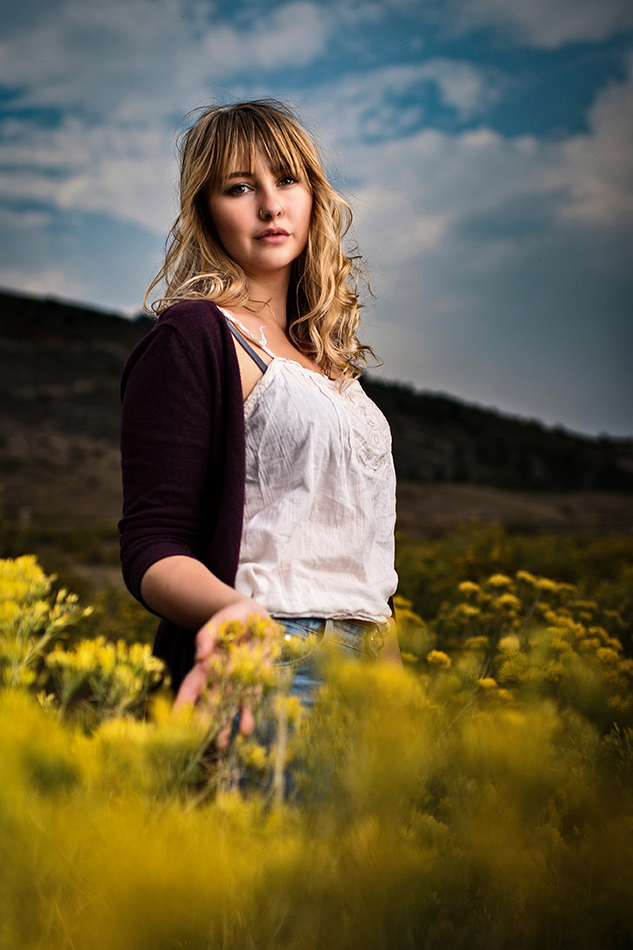
I spend a lot of time traveling with lighting gear. Almost every assignment I get involves lighting, whether it be for portraits, action or travel. That means more gear, which means more weight. So anytime I find a new piece of gear that trims the weight I am carrying, I am happy. With tripods going carbon fiber and becoming much lighter, who would have thought you could do the same thing with light stands. Evidently Nissan did, because I just started using their carbon fiber light stands, and they are amazing.
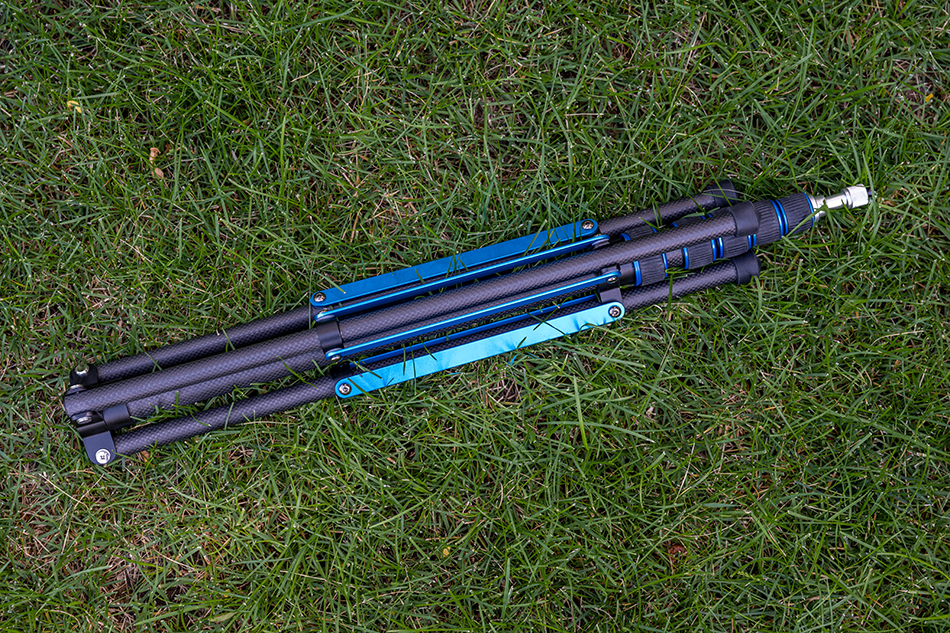
These stands even look like a tripod. They have carbon fiber sections that use twist rings to loosen and tighten, similar to a tripod. When collapsed down the legs fold back onto the stand, resulting in a very compact design. But what is really going to blow you away is just how light they are. The Nissan LS-65C version, the taller of the two, extends to 106 inches (8.8 feet) and weighs 28 oz., or about 1.7 pounds. Incredible!
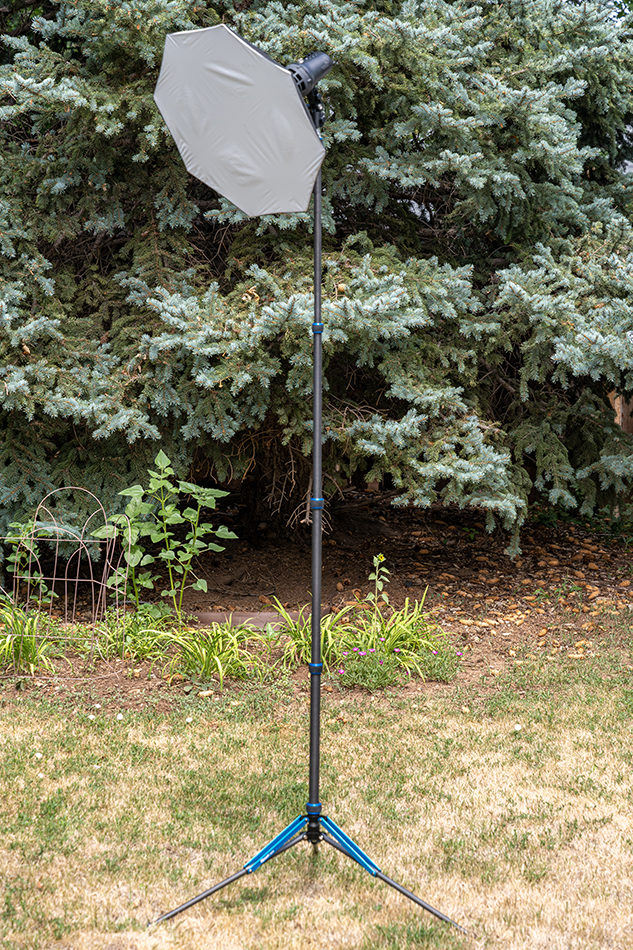
The LS-55C extends to 6.5 feet and weighs about 1.4 pounds. They collapse down to 19.1 inches for the LS-55c and 23.6 inches LS-65C version.
With the pandemic postponing many of my trips and assignments until next year, I’m going to be traveling a lot. But at least I know my bags will be a little lighter. The cost is $170 (LS-55C) and $200(LS-65C) for the stands.
What is the speed of light?
The speed of light is the speed limit of the universe. Or is it?

What is a light-year?
- Speed of light FAQs
- Special relativity
- Faster than light
- Slowing down light
- Faster-than-light travel
Bibliography
The speed of light traveling through a vacuum is exactly 299,792,458 meters (983,571,056 feet) per second. That's about 186,282 miles per second — a universal constant known in equations as "c," or light speed.
According to physicist Albert Einstein 's theory of special relativity , on which much of modern physics is based, nothing in the universe can travel faster than light. The theory states that as matter approaches the speed of light, the matter's mass becomes infinite. That means the speed of light functions as a speed limit on the whole universe . The speed of light is so immutable that, according to the U.S. National Institute of Standards and Technology , it is used to define international standard measurements like the meter (and by extension, the mile, the foot and the inch). Through some crafty equations, it also helps define the kilogram and the temperature unit Kelvin .
But despite the speed of light's reputation as a universal constant, scientists and science fiction writers alike spend time contemplating faster-than-light travel. So far no one's been able to demonstrate a real warp drive, but that hasn't slowed our collective hurtle toward new stories, new inventions and new realms of physics.
Related: Special relativity holds up to a high-energy test
A l ight-year is the distance that light can travel in one year — about 6 trillion miles (10 trillion kilometers). It's one way that astronomers and physicists measure immense distances across our universe.
Light travels from the moon to our eyes in about 1 second, which means the moon is about 1 light-second away. Sunlight takes about 8 minutes to reach our eyes, so the sun is about 8 light minutes away. Light from Alpha Centauri , which is the nearest star system to our own, requires roughly 4.3 years to get here, so Alpha Centauri is 4.3 light-years away.
"To obtain an idea of the size of a light-year, take the circumference of the Earth (24,900 miles), lay it out in a straight line, multiply the length of the line by 7.5 (the corresponding distance is one light-second), then place 31.6 million similar lines end to end," NASA's Glenn Research Center says on its website . "The resulting distance is almost 6 trillion (6,000,000,000,000) miles!"
Stars and other objects beyond our solar system lie anywhere from a few light-years to a few billion light-years away. And everything astronomers "see" in the distant universe is literally history. When astronomers study objects that are far away, they are seeing light that shows the objects as they existed at the time that light left them.
This principle allows astronomers to see the universe as it looked after the Big Bang , which took place about 13.8 billion years ago. Objects that are 10 billion light-years away from us appear to astronomers as they looked 10 billion years ago — relatively soon after the beginning of the universe — rather than how they appear today.
Related: Why the universe is all history
Speed of light FAQs answered by an expert
We asked Rob Zellem, exoplanet-hunter and staff scientist at NASA's Jet Propulsion Lab, a few frequently asked questions about the speed of light.
Dr. Rob Zellem is a staff scientist at NASA's Jet Propulsion Laboratory, a federally funded research and development center operated by the California Institute of Technology. Rob is the project lead for Exoplanet Watch, a citizen science project to observe exoplanets, planets outside of our own solar system, with small telescopes. He is also the Science Calibration lead for the Nancy Grace Roman Space Telescope's Coronagraph Instrument, which will directly image exoplanets.
What is faster than the speed of light?
Nothing! Light is a "universal speed limit" and, according to Einstein's theory of relativity, is the fastest speed in the universe: 300,000 kilometers per second (186,000 miles per second).
Is the speed of light constant?
The speed of light is a universal constant in a vacuum, like the vacuum of space. However, light *can* slow down slightly when it passes through an absorbing medium, like water (225,000 kilometers per second = 140,000 miles per second) or glass (200,000 kilometers per second = 124,000 miles per second).
Who discovered the speed of light?
One of the first measurements of the speed of light was by Rømer in 1676 by observing the moons of Jupiter . The speed of light was first measured to high precision in 1879 by the Michelson-Morley Experiment.
How do we know the speed of light?
Rømer was able to measure the speed of light by observing eclipses of Jupiter's moon Io. When Jupiter was closer to Earth, Rømer noted that eclipses of Io occurred slightly earlier than when Jupiter was farther away. Rømer attributed this effect due the time it takes for light to travel over the longer distance when Jupiter was farther from the Earth.
How did we learn the speed of light?

As early as the 5th century BC, Greek philosophers like Empedocles and Aristotle disagreed on the nature of light speed. Empedocles proposed that light, whatever it was made of, must travel and therefore, must have a rate of travel. Aristotle wrote a rebuttal of Empedocles' view in his own treatise, On Sense and the Sensible , arguing that light, unlike sound and smell, must be instantaneous. Aristotle was wrong, of course, but it would take hundreds of years for anyone to prove it.
In the mid 1600s, the Italian astronomer Galileo Galilei stood two people on hills less than a mile apart. Each person held a shielded lantern. One uncovered his lantern; when the other person saw the flash, he uncovered his too. But Galileo's experimental distance wasn't far enough for his participants to record the speed of light. He could only conclude that light traveled at least 10 times faster than sound.
In the 1670s, Danish astronomer Ole Rømer tried to create a reliable timetable for sailors at sea, and according to NASA , accidentally came up with a new best estimate for the speed of light. To create an astronomical clock, he recorded the precise timing of the eclipses of Jupiter's moon , Io, from Earth . Over time, Rømer observed that Io's eclipses often differed from his calculations. He noticed that the eclipses appeared to lag the most when Jupiter and Earth were moving away from one another, showed up ahead of time when the planets were approaching and occurred on schedule when the planets were at their closest or farthest points. This observation demonstrated what we today know as the Doppler effect, the change in frequency of light or sound emitted by a moving object that in the astronomical world manifests as the so-called redshift , the shift towards "redder", longer wavelengths in objects speeding away from us. In a leap of intuition, Rømer determined that light was taking measurable time to travel from Io to Earth.
Rømer used his observations to estimate the speed of light. Since the size of the solar system and Earth's orbit wasn't yet accurately known, argued a 1998 paper in the American Journal of Physics , he was a bit off. But at last, scientists had a number to work with. Rømer's calculation put the speed of light at about 124,000 miles per second (200,000 km/s).
In 1728, English physicist James Bradley based a new set of calculations on the change in the apparent position of stars caused by Earth's travels around the sun. He estimated the speed of light at 185,000 miles per second (301,000 km/s) — accurate to within about 1% of the real value, according to the American Physical Society .
Two new attempts in the mid-1800s brought the problem back to Earth. French physicist Hippolyte Fizeau set a beam of light on a rapidly rotating toothed wheel, with a mirror set up 5 miles (8 km) away to reflect it back to its source. Varying the speed of the wheel allowed Fizeau to calculate how long it took for the light to travel out of the hole, to the adjacent mirror, and back through the gap. Another French physicist, Leon Foucault, used a rotating mirror rather than a wheel to perform essentially the same experiment. The two independent methods each came within about 1,000 miles per second (1,609 km/s) of the speed of light.

Another scientist who tackled the speed of light mystery was Poland-born Albert A. Michelson, who grew up in California during the state's gold rush period, and honed his interest in physics while attending the U.S. Naval Academy, according to the University of Virginia . In 1879, he attempted to replicate Foucault's method of determining the speed of light, but Michelson increased the distance between mirrors and used extremely high-quality mirrors and lenses. Michelson's result of 186,355 miles per second (299,910 km/s) was accepted as the most accurate measurement of the speed of light for 40 years, until Michelson re-measured it himself. In his second round of experiments, Michelson flashed lights between two mountain tops with carefully measured distances to get a more precise estimate. And in his third attempt just before his death in 1931, according to the Smithsonian's Air and Space magazine, he built a mile-long depressurized tube of corrugated steel pipe. The pipe simulated a near-vacuum that would remove any effect of air on light speed for an even finer measurement, which in the end was just slightly lower than the accepted value of the speed of light today.
Michelson also studied the nature of light itself, wrote astrophysicist Ethan Siegal in the Forbes science blog, Starts With a Bang . The best minds in physics at the time of Michelson's experiments were divided: Was light a wave or a particle?
Michelson, along with his colleague Edward Morley, worked under the assumption that light moved as a wave, just like sound. And just as sound needs particles to move, Michelson and Morley and other physicists of the time reasoned, light must have some kind of medium to move through. This invisible, undetectable stuff was called the "luminiferous aether" (also known as "ether").
Though Michelson and Morley built a sophisticated interferometer (a very basic version of the instrument used today in LIGO facilities), Michelson could not find evidence of any kind of luminiferous aether whatsoever. Light, he determined, can and does travel through a vacuum.
"The experiment — and Michelson's body of work — was so revolutionary that he became the only person in history to have won a Nobel Prize for a very precise non-discovery of anything," Siegal wrote. "The experiment itself may have been a complete failure, but what we learned from it was a greater boon to humanity and our understanding of the universe than any success would have been!"
Special relativity and the speed of light

Einstein's theory of special relativity unified energy, matter and the speed of light in a famous equation: E = mc^2. The equation describes the relationship between mass and energy — small amounts of mass (m) contain, or are made up of, an inherently enormous amount of energy (E). (That's what makes nuclear bombs so powerful: They're converting mass into blasts of energy.) Because energy is equal to mass times the speed of light squared, the speed of light serves as a conversion factor, explaining exactly how much energy must be within matter. And because the speed of light is such a huge number, even small amounts of mass must equate to vast quantities of energy.
In order to accurately describe the universe, Einstein's elegant equation requires the speed of light to be an immutable constant. Einstein asserted that light moved through a vacuum, not any kind of luminiferous aether, and in such a way that it moved at the same speed no matter the speed of the observer.
Think of it like this: Observers sitting on a train could look at a train moving along a parallel track and think of its relative movement to themselves as zero. But observers moving nearly the speed of light would still perceive light as moving away from them at more than 670 million mph. (That's because moving really, really fast is one of the only confirmed methods of time travel — time actually slows down for those observers, who will age slower and perceive fewer moments than an observer moving slowly.)
In other words, Einstein proposed that the speed of light doesn't vary with the time or place that you measure it, or how fast you yourself are moving.
Therefore, objects with mass cannot ever reach the speed of light. If an object ever did reach the speed of light, its mass would become infinite. And as a result, the energy required to move the object would also become infinite: an impossibility.
That means if we base our understanding of physics on special relativity (which most modern physicists do), the speed of light is the immutable speed limit of our universe — the fastest that anything can travel.
What goes faster than the speed of light?
Although the speed of light is often referred to as the universe's speed limit, the universe actually expands even faster. The universe expands at a little more than 42 miles (68 kilometers) per second for each megaparsec of distance from the observer, wrote astrophysicist Paul Sutter in a previous article for Space.com . (A megaparsec is 3.26 million light-years — a really long way.)
In other words, a galaxy 1 megaparsec away appears to be traveling away from the Milky Way at a speed of 42 miles per second (68 km/s), while a galaxy two megaparsecs away recedes at nearly 86 miles per second (136 km/s), and so on.
"At some point, at some obscene distance, the speed tips over the scales and exceeds the speed of light, all from the natural, regular expansion of space," Sutter explained. "It seems like it should be illegal, doesn't it?"
Special relativity provides an absolute speed limit within the universe, according to Sutter, but Einstein's 1915 theory regarding general relativity allows different behavior when the physics you're examining are no longer "local."
"A galaxy on the far side of the universe? That's the domain of general relativity, and general relativity says: Who cares! That galaxy can have any speed it wants, as long as it stays way far away, and not up next to your face," Sutter wrote. "Special relativity doesn't care about the speed — superluminal or otherwise — of a distant galaxy. And neither should you."
Does light ever slow down?

Light in a vacuum is generally held to travel at an absolute speed, but light traveling through any material can be slowed down. The amount that a material slows down light is called its refractive index. Light bends when coming into contact with particles, which results in a decrease in speed.
For example, light traveling through Earth's atmosphere moves almost as fast as light in a vacuum, slowing down by just three ten-thousandths of the speed of light. But light passing through a diamond slows to less than half its typical speed, PBS NOVA reported. Even so, it travels through the gem at over 277 million mph (almost 124,000 km/s) — enough to make a difference, but still incredibly fast.
Light can be trapped — and even stopped — inside ultra-cold clouds of atoms, according to a 2001 study published in the journal Nature . More recently, a 2018 study published in the journal Physical Review Letters proposed a new way to stop light in its tracks at "exceptional points," or places where two separate light emissions intersect and merge into one.
Researchers have also tried to slow down light even when it's traveling through a vacuum. A team of Scottish scientists successfully slowed down a single photon, or particle of light, even as it moved through a vacuum, as described in their 2015 study published in the journal Science . In their measurements, the difference between the slowed photon and a "regular" photon was just a few millionths of a meter, but it demonstrated that light in a vacuum can be slower than the official speed of light.
Can we travel faster than light?
— Spaceship could fly faster than light
— Here's what the speed of light looks like in slow motion
— Why is the speed of light the way it is?
Science fiction loves the idea of "warp speed." Faster-than-light travel makes countless sci-fi franchises possible, condensing the vast expanses of space and letting characters pop back and forth between star systems with ease.
But while faster-than-light travel isn't guaranteed impossible, we'd need to harness some pretty exotic physics to make it work. Luckily for sci-fi enthusiasts and theoretical physicists alike, there are lots of avenues to explore.
All we have to do is figure out how to not move ourselves — since special relativity would ensure we'd be long destroyed before we reached high enough speed — but instead, move the space around us. Easy, right?
One proposed idea involves a spaceship that could fold a space-time bubble around itself. Sounds great, both in theory and in fiction.
"If Captain Kirk were constrained to move at the speed of our fastest rockets, it would take him a hundred thousand years just to get to the next star system," said Seth Shostak, an astronomer at the Search for Extraterrestrial Intelligence (SETI) Institute in Mountain View, California, in a 2010 interview with Space.com's sister site LiveScience . "So science fiction has long postulated a way to beat the speed of light barrier so the story can move a little more quickly."
Without faster-than-light travel, any "Star Trek" (or "Star War," for that matter) would be impossible. If humanity is ever to reach the farthest — and constantly expanding — corners of our universe, it will be up to future physicists to boldly go where no one has gone before.
Additional resources
For more on the speed of light, check out this fun tool from Academo that lets you visualize how fast light can travel from any place on Earth to any other. If you’re more interested in other important numbers, get familiar with the universal constants that define standard systems of measurement around the world with the National Institute of Standards and Technology . And if you’d like more on the history of the speed of light, check out the book " Lightspeed: The Ghostly Aether and the Race to Measure the Speed of Light " (Oxford, 2019) by John C. H. Spence.
Aristotle. “On Sense and the Sensible.” The Internet Classics Archive, 350AD. http://classics.mit.edu/Aristotle/sense.2.2.html .
D’Alto, Nick. “The Pipeline That Measured the Speed of Light.” Smithsonian Magazine, January 2017. https://www.smithsonianmag.com/air-space-magazine/18_fm2017-oo-180961669/ .
Fowler, Michael. “Speed of Light.” Modern Physics. University of Virginia. Accessed January 13, 2022. https://galileo.phys.virginia.edu/classes/252/spedlite.html#Albert%20Abraham%20Michelson .
Giovannini, Daniel, Jacquiline Romero, Václav Potoček, Gergely Ferenczi, Fiona Speirits, Stephen M. Barnett, Daniele Faccio, and Miles J. Padgett. “Spatially Structured Photons That Travel in Free Space Slower than the Speed of Light.” Science, February 20, 2015. https://www.science.org/doi/abs/10.1126/science.aaa3035 .
Goldzak, Tamar, Alexei A. Mailybaev, and Nimrod Moiseyev. “Light Stops at Exceptional Points.” Physical Review Letters 120, no. 1 (January 3, 2018): 013901. https://doi.org/10.1103/PhysRevLett.120.013901 .
Hazen, Robert. “What Makes Diamond Sparkle?” PBS NOVA, January 31, 2000. https://www.pbs.org/wgbh/nova/article/diamond-science/ .
“How Long Is a Light-Year?” Glenn Learning Technologies Project, May 13, 2021. https://www.grc.nasa.gov/www/k-12/Numbers/Math/Mathematical_Thinking/how_long_is_a_light_year.htm .
American Physical Society News. “July 1849: Fizeau Publishes Results of Speed of Light Experiment,” July 2010. http://www.aps.org/publications/apsnews/201007/physicshistory.cfm .
Liu, Chien, Zachary Dutton, Cyrus H. Behroozi, and Lene Vestergaard Hau. “Observation of Coherent Optical Information Storage in an Atomic Medium Using Halted Light Pulses.” Nature 409, no. 6819 (January 2001): 490–93. https://doi.org/10.1038/35054017 .
NIST. “Meet the Constants.” October 12, 2018. https://www.nist.gov/si-redefinition/meet-constants .
Ouellette, Jennifer. “A Brief History of the Speed of Light.” PBS NOVA, February 27, 2015. https://www.pbs.org/wgbh/nova/article/brief-history-speed-light/ .
Shea, James H. “Ole Ro/Mer, the Speed of Light, the Apparent Period of Io, the Doppler Effect, and the Dynamics of Earth and Jupiter.” American Journal of Physics 66, no. 7 (July 1, 1998): 561–69. https://doi.org/10.1119/1.19020 .
Siegel, Ethan. “The Failed Experiment That Changed The World.” Forbes, April 21, 2017. https://www.forbes.com/sites/startswithabang/2017/04/21/the-failed-experiment-that-changed-the-world/ .
Stern, David. “Rømer and the Speed of Light,” October 17, 2016. https://pwg.gsfc.nasa.gov/stargaze/Sun4Adop1.htm .
Join our Space Forums to keep talking space on the latest missions, night sky and more! And if you have a news tip, correction or comment, let us know at: [email protected].
Get the Space.com Newsletter
Breaking space news, the latest updates on rocket launches, skywatching events and more!
Vicky Stein is a science writer based in California. She has a bachelor's degree in ecology and evolutionary biology from Dartmouth College and a graduate certificate in science writing from the University of California, Santa Cruz (2018). Afterwards, she worked as a news assistant for PBS NewsHour, and now works as a freelancer covering anything from asteroids to zebras. Follow her most recent work (and most recent pictures of nudibranchs) on Twitter.
China lands Chang'e 6 sample-return probe on far side of the moon, a lunar success (video)
Science and music festival Starmus VII is about to rock Bratislava with a stellar lineup
Fly over the scarred canyons of Mars in this breathtaking video from European spacecraft
Most Popular
- 2 'Everything's a compromise:' How this NASA astronaut put Boeing's Starliner to the test (exclusive)
- 3 Watch Boeing's Starliner arrive at ISS today on historic 1st astronaut mission
- 4 Watch SpaceX launch 4th test flight of Starship megarocket today
- 5 1st telescope removed from controversial astronomy hub on Hawaiian volcano
Level Up Your Travel Photos This Summer With These Pro Tips
These pro photography tips will help you score some amazing images on your summer travels.

- Shortlisted for British Photography Awards 2022, Commended in Landscape Photographer of the Year 2022
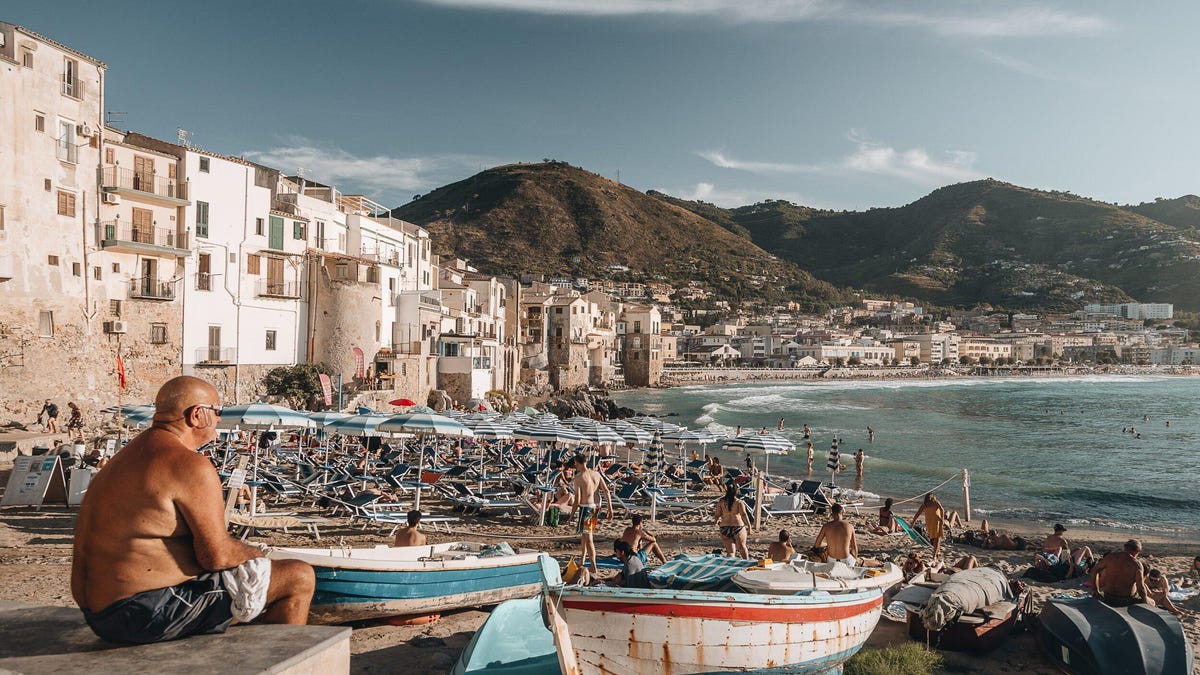
A sunbather takes in the glorious weather on the island of Sicily.
Your summer vacations are the perfect time to capture amazing photos you'll want to look at for years to come. And you don't have to be a professional photographer to preserve all the gorgeous sights and memorable experiences you'll encounter on your trip. Today's cameras make it easier than ever to take good-looking images. But simply pointing your camera at something and pressing the shutter button isn't necessarily going to score you the best results.
Taking photos that you'll want to print for your wall or put in a photo book takes more understanding, but with just a bit of effort you'll be able to turn your everyday vacation snaps into award-worthy pieces of travel photography.
In the first part of my two-part travel photography guide , I took you through the kit you should consider taking with you, whether it's a great phone like the iPhone 15 Pro or Samsung Galaxy S24 Ultra or a dedicated camera like the Canon EOS R5.
Read more: Best Camera to Buy in 2024
Now I'm going to take you through the tips I keep in mind as a professional photographer while traveling the globe.
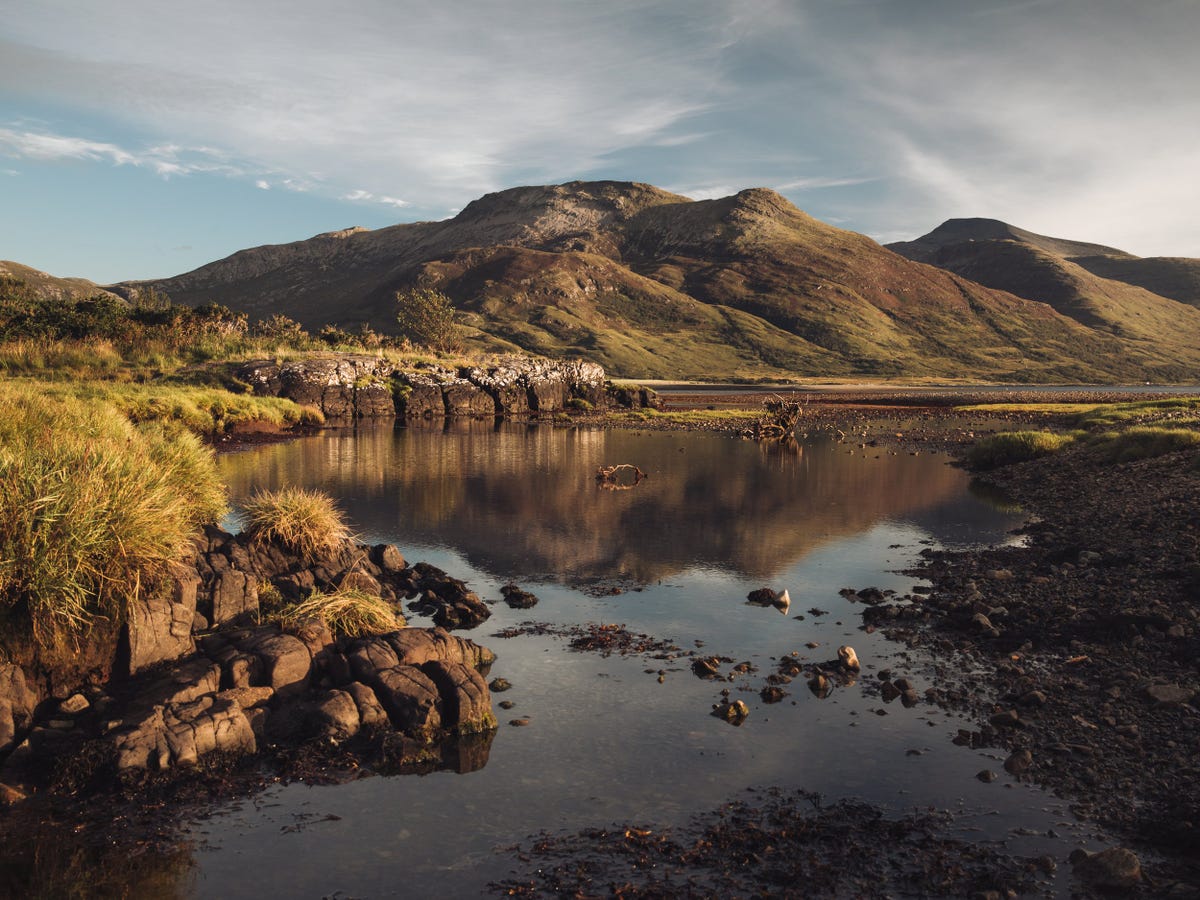
By knowing how to quickly operate my camera I was able to capture the fleeting golden light of this sunset in Scotland.
Get to know your kit
Learning how to operate your camera will not only help you get better, more creative shots, but will help you snap those shots quicker, as you won't have to fiddle around with settings. Some of the most exciting travel shots can come and go in a split second, so whether you're capturing the running of the bulls in Pamplona or a snowboarder launching off a mogul in Switzerland, you'll need to learn to shoot quickly.
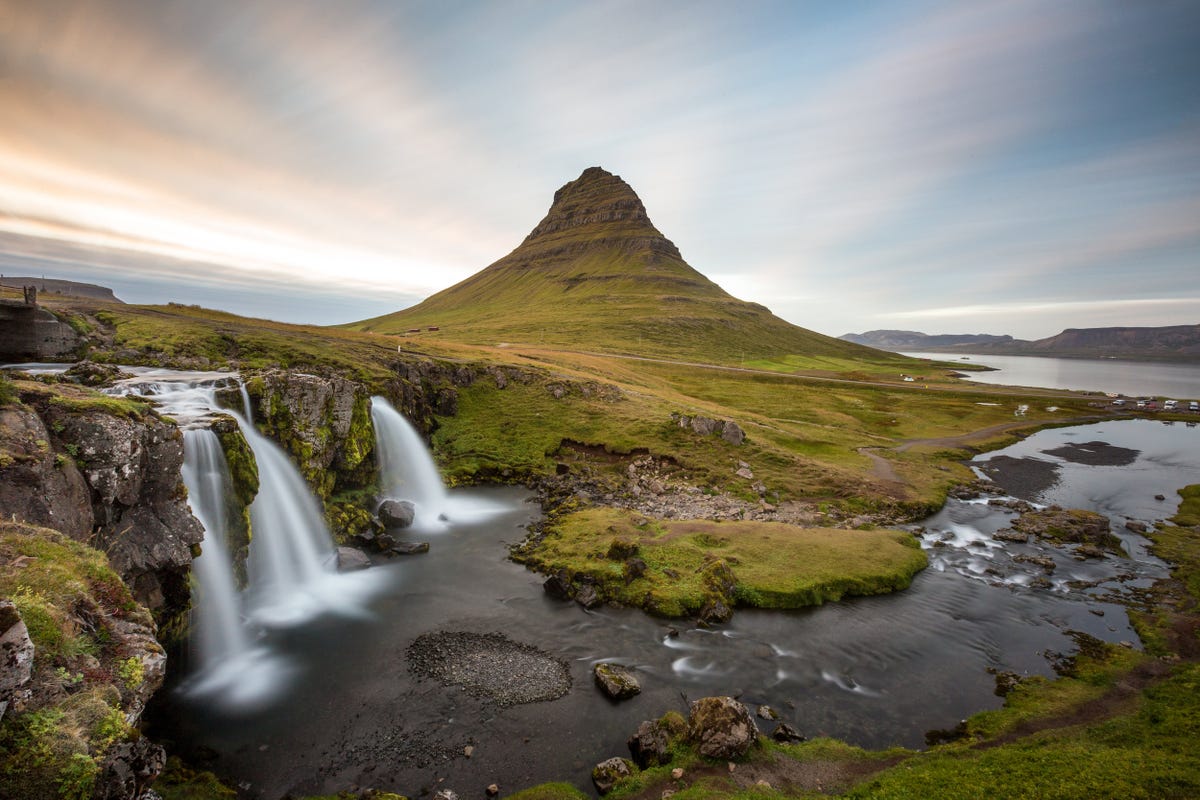
Learning how to use manual controls will allow you to get creative with slow shutter speeds.
Spend time with your camera in manual mode before you go away. Learn how to change shutter speed, aperture, ISO speeds and white balance and experiment with what happens to your images when you change these settings. A good camera will be able to capture some great shots in auto mode, but when you want to get more creative, you'll need to take control.

Shooting in raw allows you to fine tune settings like white balance after you've taken the shot.
Shoot in raw
If your camera has it (and almost all cameras and even most phones do), shoot in raw format. Yes, it creates bigger files, but memory cards are so cheap now that it's worth carrying an extra couple of 64GB cards with you. Raw shooting allows you to change white balance after your shot and capture more details in the very bright and very dark areas, letting you tone down any blown-out skies or lighten some shadows in Photoshop.
Read more: Best Camera Phone of 2024
Although it's always best to get the shot right when you first take it, raw processing gives you much more flexibility to rescue a shot that's not quite right.

Local events can provide a wealth of photography opportunities, such as this sea-swimming competition in the Italian town of Vernazza.
Do your research
Search for your location on Google and visit travel websites to find out more about where you're going. Not only will that help you make the most of your trip, you may find out about local events or particularly photogenic locations you may otherwise have missed.
You might also find out about photography restrictions that may land you in hot water -- as a general rule anywhere, avoid photographing government buildings, and if you're unsure, ask permission.
Search for your destination on Instagram or on photography websites such as Flickr and 500px for inspiration on what to see. It's handy to get an idea of the shots other people have taken -- either to replicate them yourself or to avoid taking the same generic shot the internet has seen hundreds of times before.
Composition is key
Good composition will make or break a photo, and unlike white balance or color tone, poor composition can't be fixed in post processing. The morning light bouncing off that rustic church won't count for much if you've accidentally chopped off the spire in your hurry to take the shot.
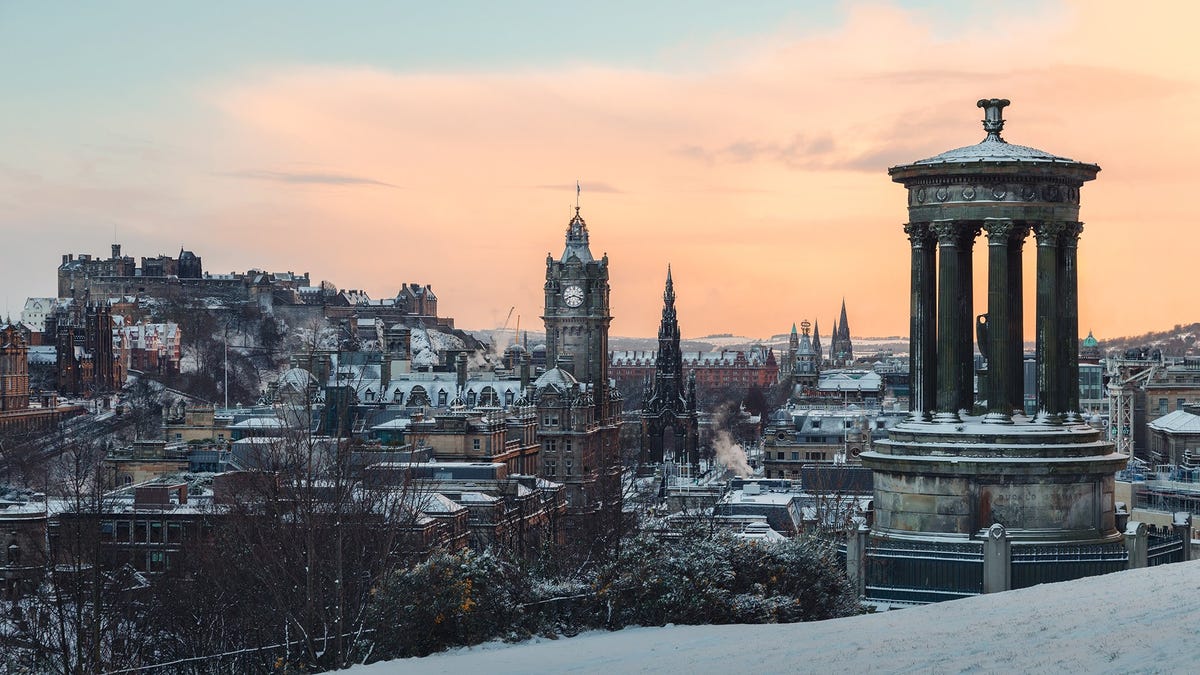
By finding a higher viewpoint, I was able to better capture the beautiful towers, spires -- and the castle -- on a stunning winter evening in Edinburgh.
A generic shot of a popular spot can be transformed into an unusual and creative artwork simply by changing your angle. Take a moment to look at the scene before you shoot and don't be afraid to move around to get the best angles. Struggling with a beach scene? Walk farther down the coast to find boats, nets or rocks that might add foreground interest. Shooting in the city? Get up a tall building for dramatic urban cityscapes. Even just kneeling down and shooting from below can make a difference.
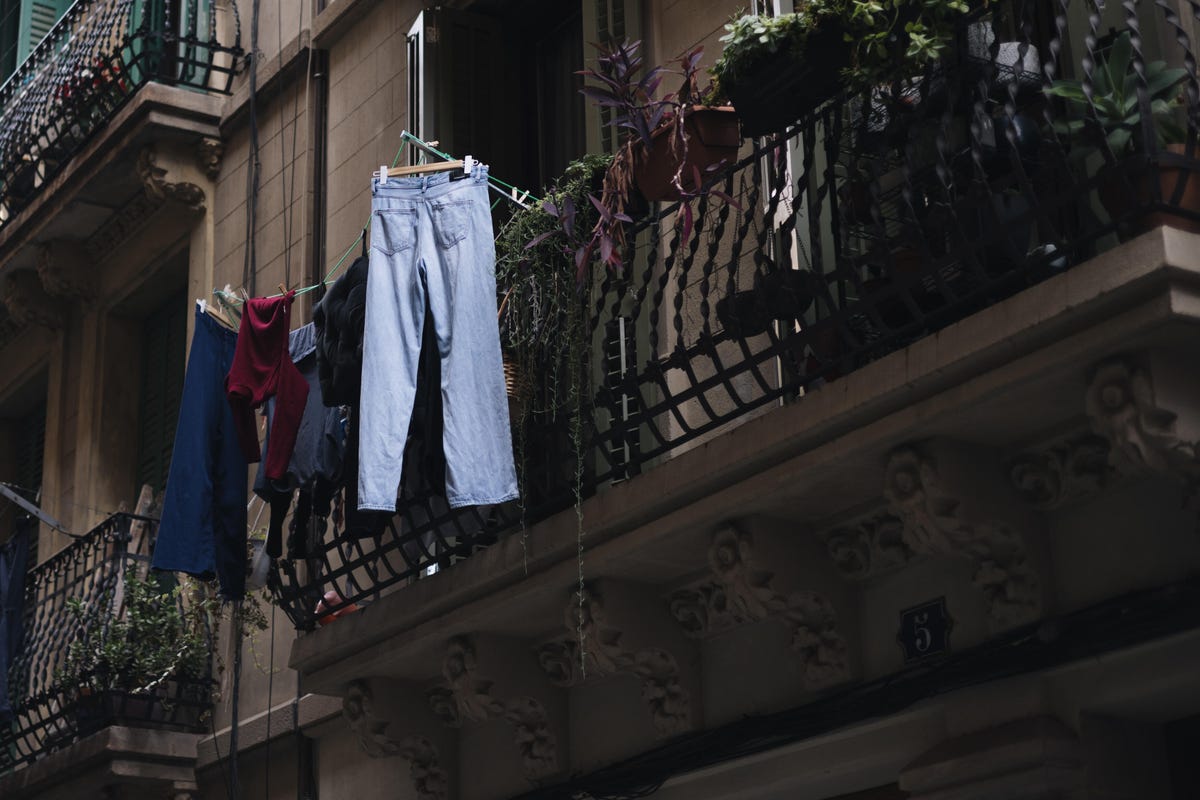
These jeans being dried over a balcony really caught my eye and certainly say a lot about city life in Barcelona.
Find the details that matter
Capturing a beautiful, wide view of the stunning European city you're visiting is great for a nice print to hang on your wall, but it's those smaller details that really tell the story of your trip. Maybe it's the food market you visited, a weather-worn old door, a vintage scooter or a shop sign that hasn't been repainted in years.
All of these small elements will not only help capture the essence of the location you're visiting but also help bring back more memories for you when you look at them as each image will tell such a strong story. It's up to you to decide what those small details might be to look out for, but my advice is to always have your camera ready to shoot so when you see something that speaks to you -- a stack of lobster pots in a harbor, perhaps -- you're ready to take your shot.
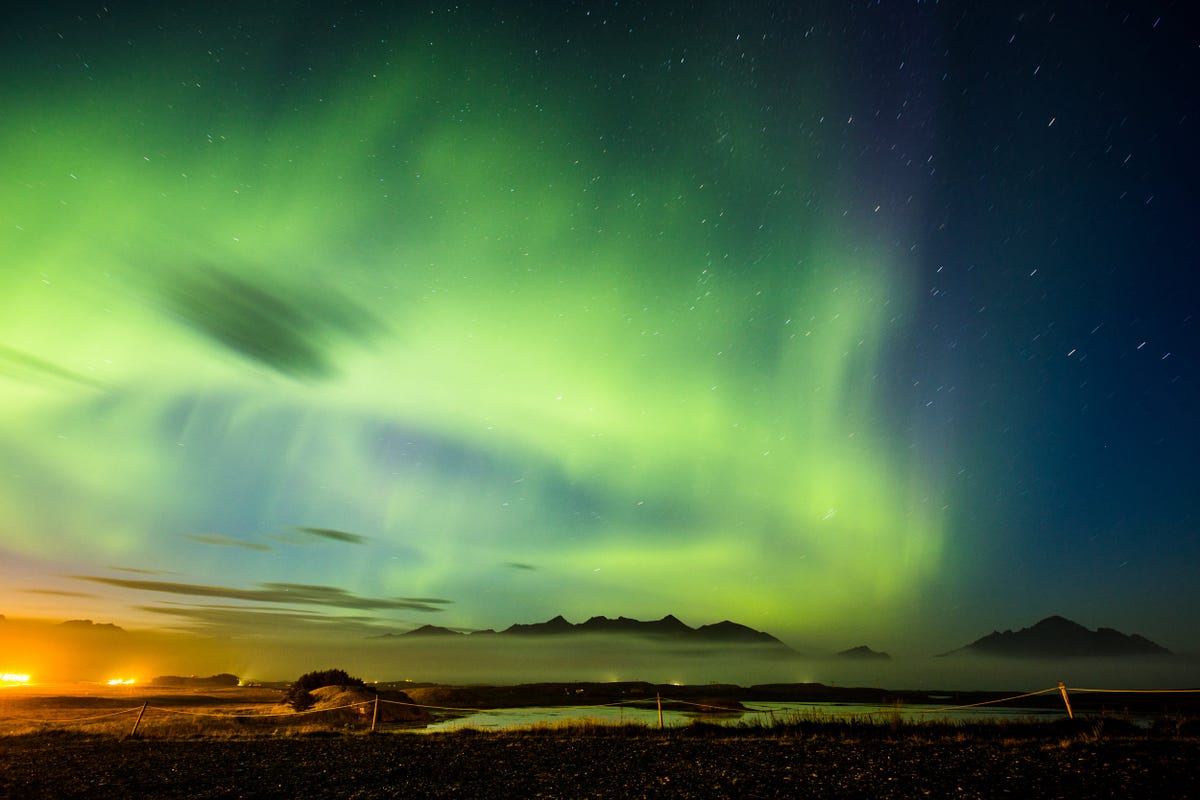
Amazing things can happen in the dark.
Don't be afraid of the dark
Just because the sun has gone down, it doesn't mean your photography needs to stop. It's a great time to get creative with slow shutter shots. Long exposures blur motion, turning regular car headlights on a city street into creative, abstract light trails, streaking through the darkness. Use a narrow aperture -- around f/12 -- and a long exposure to turn points of light into gorgeous starbursts.
You'll need to secure your camera firmly in place -- with a tripod -- and if you're playing with exposures longer than a few seconds, you'll need to be careful about the breeze or people walking by adding any vibrations. If you want to do long exposures in the daytime, you'll need a dark neutral density filter, such as the Big Stopper by Lee Filters, to let you take minute-long exposures in the middle of the day.
If you're shooting on a modern camera -- especially with a larger, full frame sensor -- then you can also likely increase your ISO speed above 3,200 without seeing too much degradation from image noise. Coupled with a wider aperture of f/2.8 or more, you may have more luck shooting handheld scenes in low light. If this is a priority for you, cameras that also offer in-body image stabilization (like the Canon EOS R5) should be on your list; this stabilization lets you use slower shutter speeds without needing a tripod.
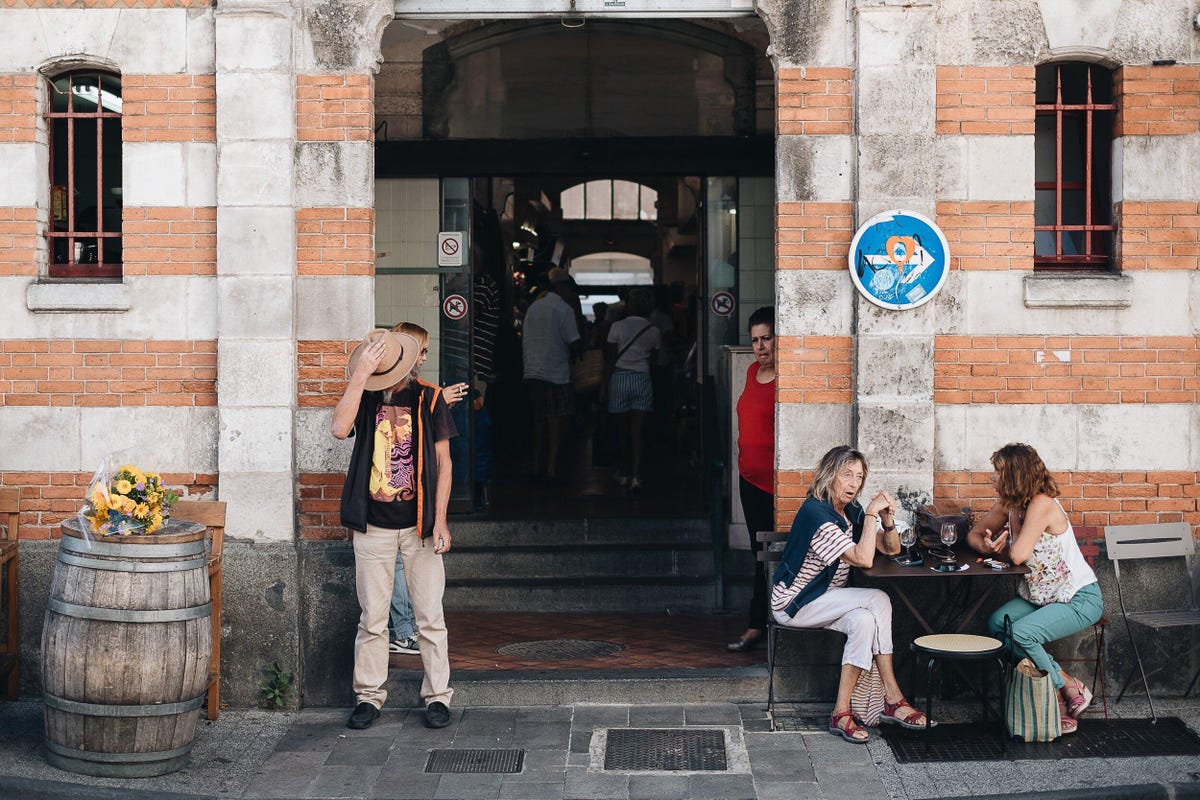
By visiting this busy Saturday morning market in the French town of La Rochelle, I was able to capture this street photo that packs in great elements including the flowers on the barrel, the man dipping his hat, the people having a conversation and a woman peering out from inside the building.
Be a people person
It's often the people you meet as much as the places you see that makes traveling and exploring so interesting. People make fantastic subjects to photograph, whether they're wandering the streets, relaxing or hard at work.
Naturally, not everybody will want to be photographed so, out of politeness if nothing else, it's a good idea to ask the person's permission beforehand if you're trying to take a portrait of someone. It'll help if you do your research and learn a few key phrases of the local language to not only ask permission, but be able to understand the response. If they say no, it's important to respect that.
Otherwise, heading to busy areas like local markets will allow you to take more street-style photographs with candid moments of people going about their day. Again, it's still important to respect peoples' space here and keep in mind that some countries may have laws against this type of photography.
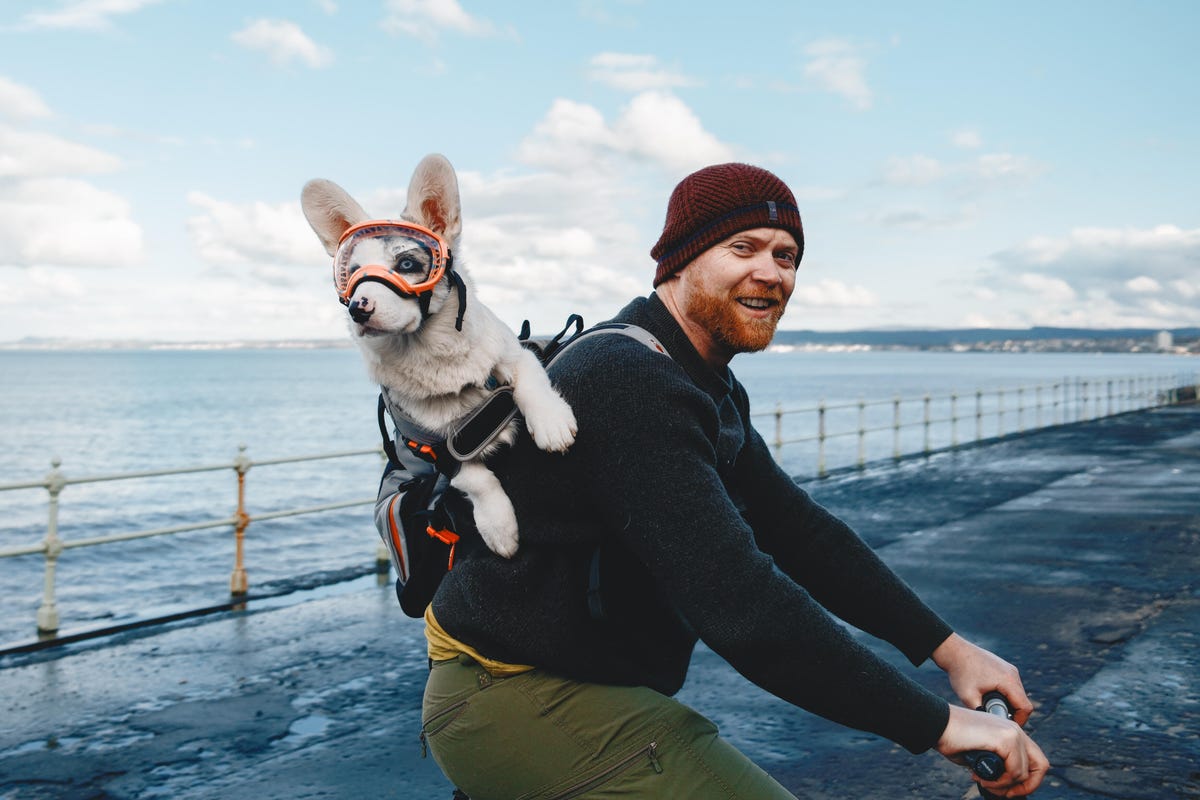
I loved capturing this moment on a trip to the Scottish seaside, and I think it really helps tell the story of the sort of community you'd find there.
Set your alarm
The middle of the day may be the nicest time to wander around Tuscan streets, grab a hot chocolate on the mountainside or order a third cocktail on the beach, but the midday sun doesn't usually offer the best light for dramatic photographs.
It's the early morning light, casting its long, golden shadows that will really make a place look its most beautiful. Setting your alarm for sunrise on holiday may seem like the worst thing in the world, but it's worth trying -- even just once -- to see what sort of shots you get. Scout out locations beforehand to make sure you don't waste the precious early hours trying to find somewhere to shoot.
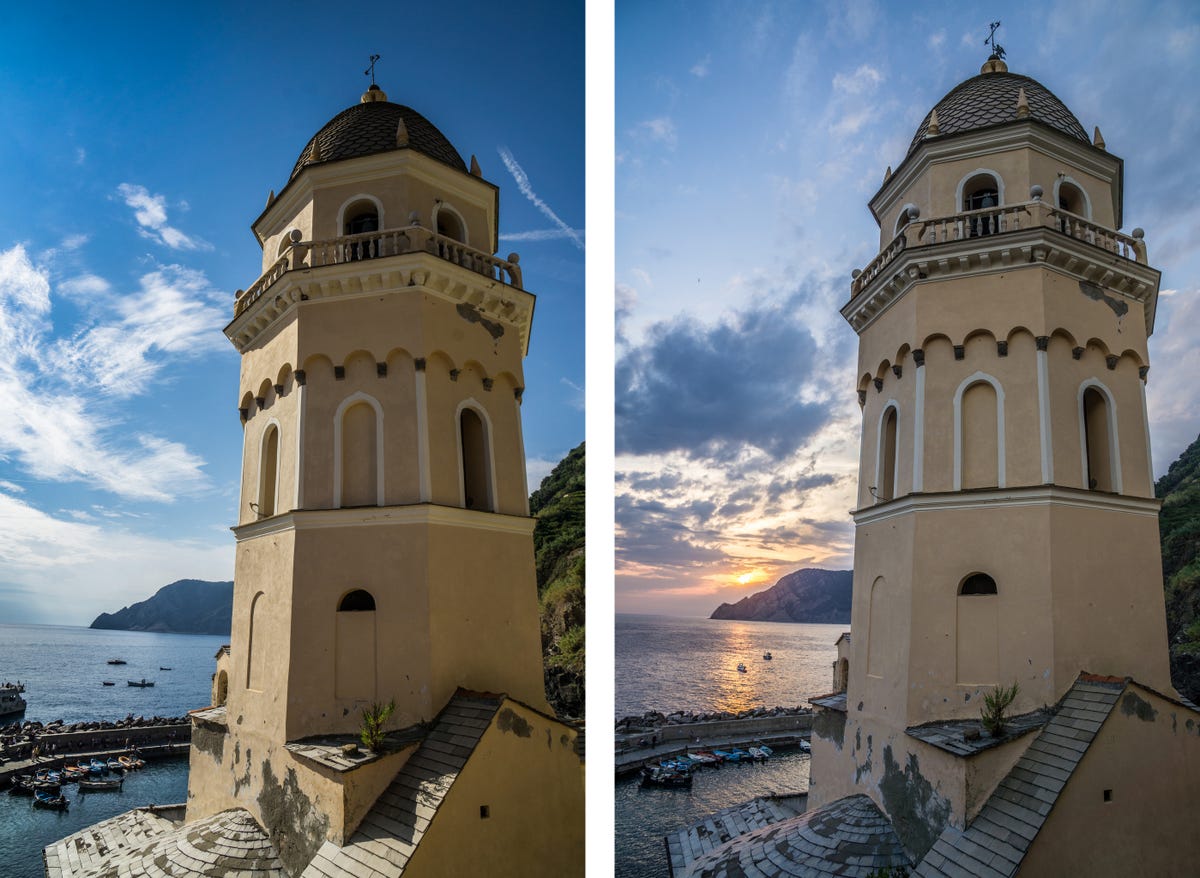
By coming back to this tower later in the day, I was able to catch the sunset in the background.
Revisit the scene
When you stumble upon a particularly picturesque scene, don't just visit it just the once. While a bay may look delightful in the daytime, it will look different again at night, with all the lights of nearby buildings stretching out across the water. If you know a great spot, do your best to come back to it to find out when it looks best.
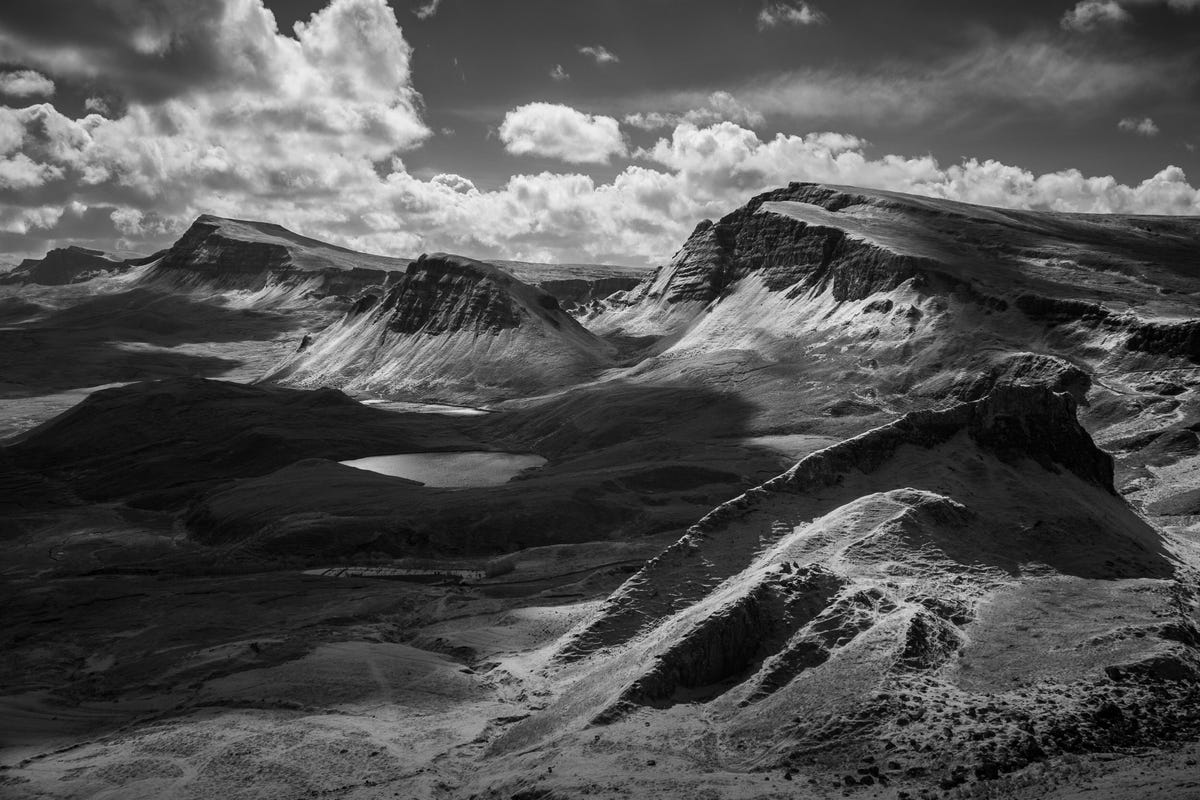
Sometimes a punchy black and white edit can really add to the drama of a scene.
Play with processing
Although you should always try to get the best shot you can when you first take it, some well-placed post processing can turn a good photo into a great one. If you're shooting raw files, you'll need to process them anyway, so it's worth trying out a few of the sliders in Adobe Lightroom while you're at it.
With your raw files, the first thing you'll need to do is correct the white balance. Have a play with the color temperature slider and see what tone suits best. Summer evening shots will benefit from a warmer color tone, while chilly February city streets will look best with something a bit cooler.
Toning down the highlights can help keep a bright sky under control, while lifting the shadows will help make darker areas more visible, without affecting too much of the rest of the scene. It's important not to go overboard on this, as it can make your images look a little unnatural. From that point on, have a play with your editor of choice and see what you like. There's no one right way to edit your shots -- no matter what anybody says -- it's all about what you prefer.
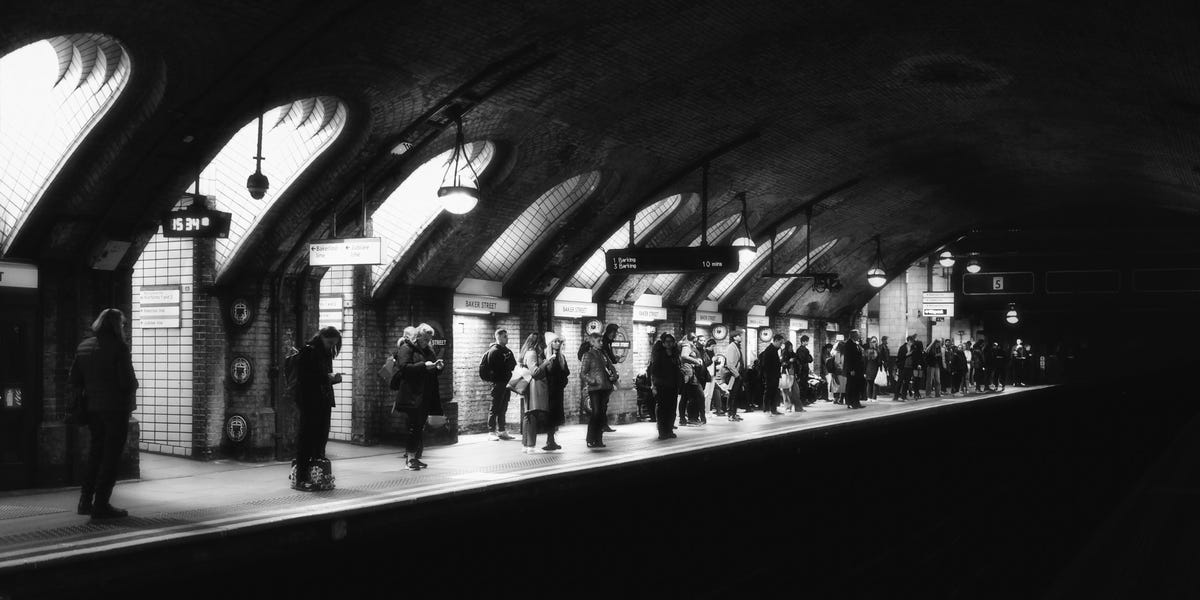
A high contrast black and white edit makes this image from a London tube station really stand out.
Do your own thing
Sure, rules such as "take the lens cap off before shooting" should always be followed, but never be afraid to try an unusual angle, play with your settings or experiment with new editing techniques in Lightroom.
If everybody always followed the exact same format, everybody's photography would look the same. Use these rules as guidelines and play with angles, settings and editing as much as you want to find what works for you.
I'm Blown Away by These Photos I Took on the Xiaomi 14 Ultra
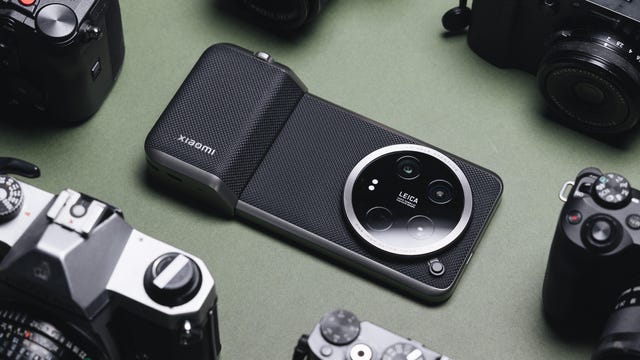
Computing Guides
- Best Laptop
- Best Chromebook
- Best Budget Laptop
- Best Cheap Gaming Laptop
- Best 2-in-1 Laptop
- Best Windows Laptop
- Best Macbook
- Best Gaming Laptop
- Best Macbook Deals
- Best Desktop PC
- Best Gaming PC
- Best Monitor Under 200
- Best Desktop Deals
- Best Monitors
- M2 Mac Mini Review
- Best PC Speakers
- Best Printer
- Best External Hard Drive SSD
- Best USB C Hub Docking Station
- Best Keyboard
- Best Webcams
- Best Laptop Backpack
- Best Camera to Buy
- Best Vlogging Camera
- Best Tripod
- Best Waterproof Camera
- Best Action Camera
- Best Camera Bag and Backpack
- Best E-Ink Tablets
- Best iPad Deals
- Best E-Reader
- Best Tablet
- Best Android Tablet
- Best 3D Printer
- Best Budget 3D Printer
- Best 3D Printing Filament
- Best 3D Printer Deals
9 Best Lightweight Cameras for Travel and Hiking in 2024

Finding the best lightweight camera for hiking and travel isn’t easy. You need the best camera to capture the magic moments from your next adventure. You don’t want a camera that weighs you down. And you need to know it can handle the hard life of a traveler.

Olympus OM-D E-M5 Mark III

If you buy a product through one of our referral links we will earn a commission (without costing you anything). Prices last updated on .
As an Amazon Associate, I earn from qualifying purchases. Product prices and availability are accurate as of the date/time indicated and are subject to change. Any price and availability information displayed on Amazon at the time of purchase will apply to the purchase of this product.
We’ve got a collection of the best lightweight cameras that are ideal for travel and hiking. It includes DSLR and mirrorless cameras . And we have bridge and compact cameras too. They are all lightweight cameras. And they have features that’ll get the best out of your hiking and travel photography.
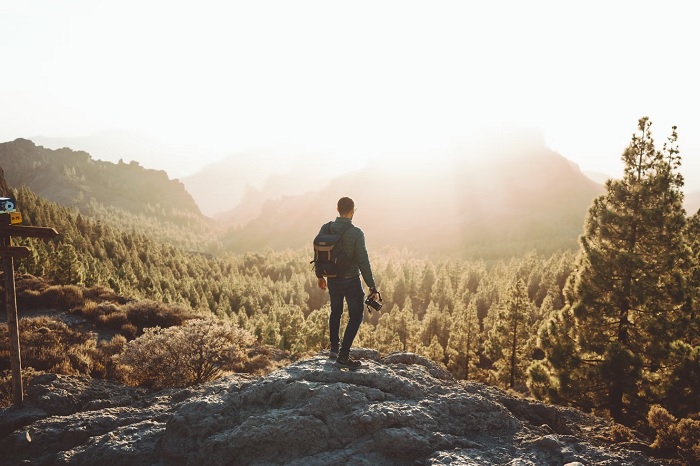
What is the Best Lightweight Camera for Travel and Hiking?
You need to consider a few things when buying a lightweight camera for travel. Image quality is very important. You need a camera that captures the world you find in all its glory. And backpacking cameras always need to be lightweight and portable. You don’t want anything weighing you down.
Video features are becoming just as important for modern travel photographers. And we’ve included some cameras dedicated to video creation. A rugged and weatherproof body is important in a camera for hiking. And autofocus and image stabilization are other great features to look out for.
- Compact and weather-sealed camera body
- 50 MP High-Res Shot mode
- 4K video quality and 120 fps frame rate for slow-mo
- 30 fps max burst rate
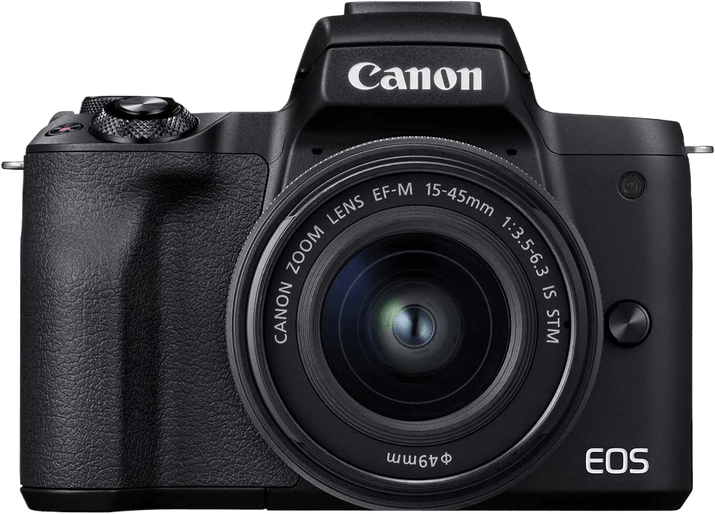
- Excellent image quality from the 24.1 MP sensor
- Face and eye detection and tracking AF
- Built-in image stabilization
- 4K video recording and webcam abilities

- 26 MP from the APS-C sensor
- 20 fps max burst speed
- Brilliant AF system for tracking moving subjects
- Tough, weather-sealed body
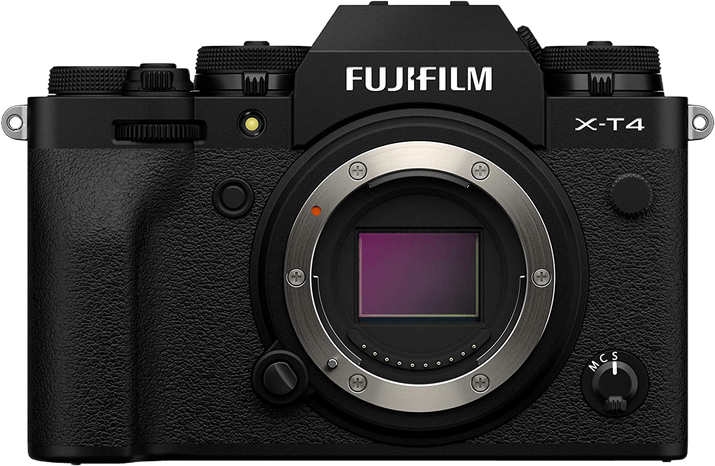
- 20 MP from a 1-inch sensor
- Long-lasting battery life
- Incredible 15x zoom from the Leica lens
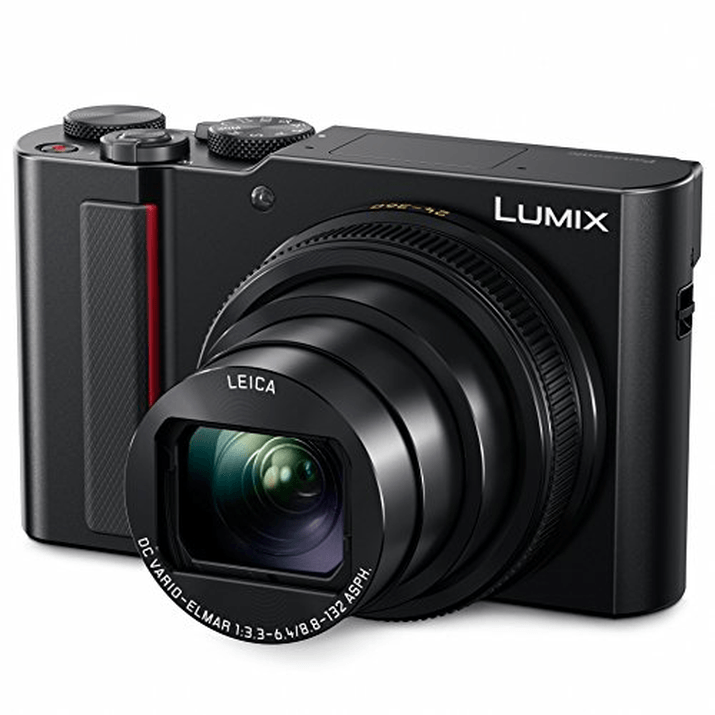
- Rugged, weather-sealed camera body
- Wide ISO range and fantastic low-light performance
- Built-in shake reduction system

- Fantastic 4K video quality
- Wide ISO range
- Weatherproof compact body
- USB charging
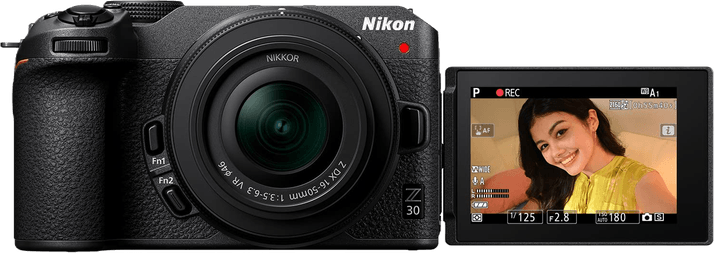
- Completely waterproof for underwater pictures and videos
- Excellent video features for adventure
- Macro shooting modes for nature lovers
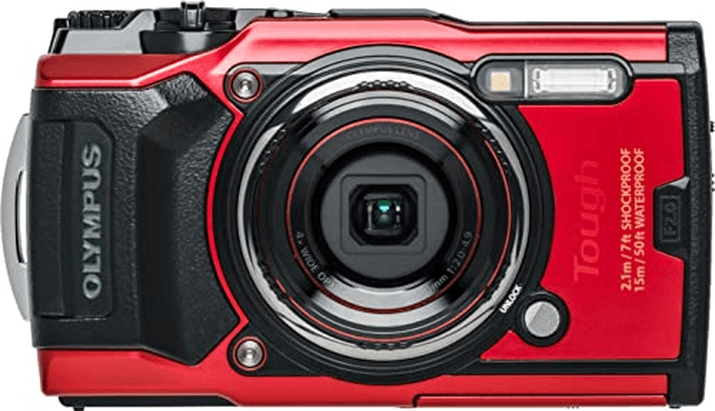
- Brilliant autofocus system for tracking
- No time limit on video recording
- Fully articulating screen for vlogs and selfies
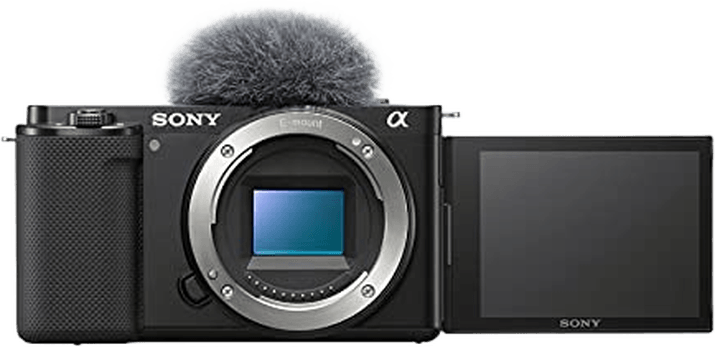
- Built-in 5-axis image stabilization
- Fixed Leica lens has a 20x Optical zoom

9 Best Lightweight Cameras for Travel and Hiking
1. olympus om-d e-m5 mark iii.
- 50 MP High Res Shot mode
- 30 fps continuous shooting speed
- Up to 6.5 stops of in-body stabilization with certain lenses
- Excellent weather sealing
- Articulating screen for angled shots
- Excellent 4K Ultra HD and DCI video
- Only 10 fps with AF tracking
- Complicated Olympus menus
- No headphone out
- No video log profile for dynamic range or colors
- An average battery life
The Olympus OM-D E-M5 Mark III is the perfect camera for hiking and traveling. It’s compact and lightweight. But it’s also rugged and packed full of fantastic features for photos and videos. The E-M5 Mark III has everything you’d expect from the best cameras for travel.
The Olympus OM-D E-M5 Mark III is a micro four thirds (MFT) camera. It’s a mirrorless machine but uses a smaller sensor than an APS-C or full frame camera. You don’t have to worry about the image quality. The MFT sensor still gives you fabulous images with a resolution of 20 MP. That’s far better than any smartphone camera.
If 20 MP isn’t enough, the camera has a 50 MP High-Res Shot mode. You’ll need a tripod for this type of shot. But it gives you incredible images with fantastic detail and vibrant colors. It’s ideal for landscape photography.
The autofocus system is another highlight of this travel camera. It uses 121 cross-type phase detection points. It’s fast and accurate. And it tracks moving subjects across the screen. It’s a great feature if you want to try wildlife photography or shoot mountain sports.
The video specs are just as impressive. You get 4K video quality. And you can select a frame rate of 24, 25, or 30 fps. It has a port for external microphones. And there’s 5-axis image stabilization that reduces camera shake in video and photos.
The Olympus OM-D E-M5 Mark III is weather sealed for tough conditions. It has an accurate electronic viewfinder. And there’s a 30 fps burst with pro capture mode. The USB charging is another handy feature for travelers.
2. Canon EOS M50 Mark II
- Strong sensor resolution
- 4K and Full HD video options
- Time-lapse recording
- External mic port
- Webcam functionality
- 4K video is cropped
- No environmental sealing
- No sensor-shift image stabilization
- Disappointing battery life
Mirrorless cameras don’t come much more compact than the Canon EOS M50 Mark II . It’s a photo and video hybrid, giving you wonderful results with both media. And its small size makes it an ideal hiking camera for your next trip.
The Canon EOS M50 Mark II is an APS-C mirrorless camera. And the image sensor has a resolution of 24.1 MP. That’s decent for a sensor of this size. And with a 100 to 25,600 ISO range, you also get fantastic results in low light .
The video features are why travelers are opting for the M50 Mark II. You can record 4K video at 25 fps. And there’s 120 fps for slow-motion videos when you drop down to Full HD quality. The rotating screen is perfect for travel vloggers. And the camera can double as a webcam with the EOS Utility app.
The autofocus is another positive for the M50 Mark III. It’s great with moving subjects. And the eye detecting and face tracking is another feature for vloggers and selfie-takers. The image stabilization system is a bonus too, reducing camera shake in photos and videos.
The Canon EOS M50 Mark II isn’t weather sealed, so you’ll have to take extra care if the weather turns. But the battery life is reliable. And the features and performance make it an excellent mirrorless camera for traveling.
3. Fujifilm X-T4
- Decent APS-C BSI-CMOS sensor
- A great frame rate of 15 fps
- 6.5 stops of image stabilization
- 4K video (DCI or Ultra HD) up to 60 fps
- A fully articulating rear touchscreen
- 12 Film Simulation modes
- Expensive for an APS-C camera
- Autofocus speed and accuracy depends on the lens and the subject
- Unreliable face and eye detection
- No external battery charger provided
- Limited video recording time
- No subject tracking in video mode
Fujifilm has built a reputation on its APS-C mirrorless cameras. And the Fujifilm X-T4 might be the best of the series. It has a powerful sensor that produces stunning images. And there are plenty of other features to excite travelers and hikers.
The sensor gives you a 26 MP image resolution. That’s impressive for a crop sensor camera. And you get excellent image quality and impressive low-light performance. The 5-axis image stabilization also works hard to keep your photos sharp. You don’t need to worry if you can’t pack your tripod.
The 15 fps burst is a fun feature for capturing the action. And the 4K video quality looks fantastic. There is some cropping when recording 4K video at 60 fps. But you’ll be able to shoot brilliant videos from your trips. And there’s slow-motion in Full HD.
The Fujifilm X-T4 isn’t the smallest mirrorless camera. But it’s still lightweight at 1.33 lb (660 g). The camera body is also rugged and weather sealed for outdoor shooting. It’s a quality camera. And one you should consider for hiking and backpacking.
4. Panasonic Lumix ZS200
- Excellent quality 4K video
- Incredibly versatile focal length range
- 5-axis in-body image stabilization
- Unmatched battery life
- High maximum aperture
- Fixed rear screen
- Not weather sealed
- 1.5x 4K crop factor
- AF occasionally hunts in video mode
A compact camera is a great choice for hiking and backpacking. And the Panasonic Lumix ZS200 delivers where it matters, so you don’t make any compromises on media quality. It’s small enough for any pack. And you’ll have impressive photos from your next adventure.
The Panasonic Lumix ZS200 has a 20.1 MP sensor that gives you outstanding photo quality. Compact cameras have suffered from the rise of smartphones. But the photo quality is far superior to anything a smartphone can produce.
Another advantage of the ZS200 is the wonderful fixed lens. It’s a Leica lens, so you don’t have to worry about optical quality. And it also gives you an incredible 15x zoom. That’ll get you close to the action no matter where you are.
You’ll have a pleasant surprise from the video quality too. It’s 4K video shot at a super-smooth 30 fps. And the Lumix 4K Photo mode allows you to select single frames from video footage to use as photos. That means you have a burst speed of 30 fps. You won’t miss a thing from your next hike.
You might not expect 5-axis image stabilization from a compact camera. But the Panasonic Lumix ZS200 is full of surprises. And the stabilization works well, keeping your images crisp and clear. You also have Wi-Fi connectivity for easy transfer and sharing when you’re on the road.
5. Pentax K-70
- Brilliant low-light performance with a wide ISO range
- Excellent image quality and sensor
- Built-in image stabilizer reduces camera shake
- High-quality pentaprism viewfinder
- Durable body with full weather sealing
- Limited AF system for fast-moving subjects
- Slow buffering when shooting in RAW
- Slow max burst speed of 6 fps
- Poor connecting Wi-Fi app
- Only Full HD video, no 4K recording
You can’t go wrong with a Pentax K-70 if you’re looking for a tough camera for travel and hiking. Pentax is known for its hardworking cameras. And the Pentax K-70 is a durable and affordable option for travelers. DSLR cameras don’t come much tougher.
This DSLR camera has a durable body. It’s dustproof and completely weather sealed, making it a fantastic option for hiking and backpacking. It isn’t the most lightweight camera on the list. But it still weighs under 2 lb (900 g). And you know it can take the strain of the hiking lifestyle.
The inside of the K-70 is just as impressive as the outside. The APS-C sensor has a resolution of 24.2 MP, so you can expect fabulous image quality. And the dynamic range is excellent for a camera at this level.
The low-light performance is another strength of the Pentax K-70. You get a wide ISO range starting at 100 and topping out at an impressive 204,800. That gives you options for dawn, dusk, and night photography. You might experience some digital noise. But not until you reach the higher ISO levels.
The Pentax K-70 also has a shake reduction mechanism. It counteracts camera shake when shooting handheld, keeping your photos sharp. This gives you more shooting options, allowing you to use a slower shutter speed without the risk of blurry images.
The durability and performance of the Pentax K-70 put it on our list of the best cameras for hiking. It’s a beginner-friendly DSLR camera. But the photography performance is fantastic, especially in low light. Photographers won’t find many better-suited DSLR cameras for traveling and hiking.
6. Nikon Z30
- Compact and lightweight body
- Responsive and accurate AF with eye detection and tracking
- Wide ISO range with excellent low-noise performance at the top end
- Vari-angle screen is perfect for videos and vlogging
- Environmental sealing for outdoor shoots
- Has no viewfinder, only an LCD screen
- No electronic shutter for quicker burst or silent shooting
- Video is cropped 1.3x when using the electronic vibration reduction system
- The battery life is disappointing for a Nikon camera
Modern photographers look at the video specs just as much as the photography specs. Video content is becoming more and more popular. And it’s no different if you want a backpacking camera. The Nikon Z30 is the vlogging solution for travelers and hikers.
The APS-C sensor has a resolution of 20.9 MP. That’s not record-breaking for a lens of that size. But it’s a vast improvement on smartphone cameras. And you get a strong ISO range for low-light photography. It starts at 100 ISO, and the top is expandable to 51,200.
But most people looking at the Nikon Z30 will be interested in the video features. And there’s a good selection of them. You get fantastic 4K video quality. The autofocus has eye detection and face tracking. And there’s image stabilization, so your footage is smooth when shooting from hand.
The Nikon Z30 has other features backpacking vloggers will appreciate. There’s Wi-Fi connectivity and remote shooting. You have a rotating screen for selfies and self-recording. And there’s a record light that tells you when it’s filming. The USB charging is another handy feature when you’re on the move.
Hikers will be happy to hear the Nikon Z30 is weather sealed for outdoor protection. And it’s the smallest and lightest camera in Nikon’s Z series. It’s the perfect size for hiking and backpacking. And you don’t need to break the bank for this vlogging camera .
7. Olympus Tough TG-6
- Very strong and durable body
- Waterproof to 50 ft (15.5 m)
- RAW file shooting capabilities
- Excellent macro shooting
- Smooth 4K video recording
- Only 12 MP image resolution
- No fully manual controls
- No touchscreen
- Annoying notifications with Wi-Fi app
The Olympus Tough-TG is the best waterproof camera on the market. As the name suggests, it’s a tough camera that’s built for a life in the wild. And it’s not just about the hard outer casing. The photo and video features are excellent too. It’s a perfect compact camera for hiking and adventure.
The Olympus Tough TG-6 is waterproof down to 50 feet (15 m). You can take photos and videos from beneath the waves. It’s also dustproof, shockproof, and crushproof. It’s also usable in temperatures of -10 degrees Celsius. It’s as rugged as they come.
It uses a 1-inch sensor that gives you a 12 MP image resolution. That is low compared to many modern compact cameras. But the detail is fantastic, and it still outperforms your average smartphone. The fixed lens has an 8x zoom. And it has underwater and macro shooting modes.
The video features are excellent for multimedia adventurers. You have 4K video at 30 fps. And you can record Full HD at 120 fps for brilliant slow-motion videos. You’ll have incredible action content from your next backpacking trip.
The Olympus Tough TG-6 has excellent battery life. And the rugged camera is small enough for a big pocket or a pouch in your backpack. The shooting options are fantastic for photos and videos. It has to be on the list of the best cameras for hiking.
8. Sony ZV-E10
- Top-end autofocus system that's great with photo and video
- Fully articulating screen and selfie modes
- External microphones and headphones ports
- Compact and lightweight camera body
- No sensor-shift stabilization, only a shake reduction system
- Visible rolling shutter effect with tracking shots
- The lack of a viewfinder is disappointing
- 4K video is cropped at 30 fps
Most travelers won’t have enough space in their pack for a Sony full frame mirrorless camera. But the Sony ZV-E10 is a more compact mirrorless camera option. And it’s another excellent choice for video creators and travel vloggers.
The photography performance is fantastic. The APS-C sensor gives you a resolution of 24.2 MP with fantastic detail and color rendering. There’s also an 11 fps burst that gives you action camera options .
The autofocus is one of the highlights of the Sony ZV-E10. It has a 425-point hybrid system that’s fast, reactive, and accurate. It tracks your subject when locked on, ideal for trekking and wildlife. And it performs well in low-light situations. You also have built-in image stabilization.
The 4K video quality is fantastic. The frame rate is smooth and steady. And there’s no pixel binning, so the video quality is just as good as the image quality. One problem is that the video is cropped when you use image stabilization. But you can work within that limit when necessary.
You might not get a chance for livestreaming on your hike. But the Sony ZV-E10 can be used as a webcam with no extra software if you want to go live on your trip. There’s limited weather sealing, so you’ll need to take care in bad conditions. But it’s a lightweight mirrorless camera that shoots amazing photos and videos.
9. Panasonic Lumix FZ2500
- Excellent quality Leica lens
- 5-axis image stabilization
- Solid build quality and large grip
- Good ergonomics
- Stunning 4K video
- Yellows occasionally look greenish
- Noisy JPEGs with high ISOs
- 1.4x crop factor with 4K video
- No USB charging
A bridge camera offers the simplicity of a compact camera with the features of a DSLR camera. The Panasonic Lumix FZ2500 is the perfect example of that blend. And it has all the features to make it a contender for the best lightweight camera for hiking.
The Panasonic Lumix FZ2500 has a 1-inch sensor. While it’s not the biggest sensor, you won’t be disappointed with the image quality. The images are sharp, rich, and vibrant. And the dynamic range is surprisingly good.
Bridge cameras have fixed lenses. And the FZ2500 has one of the best lenses in the division. It’s a Leica lens, so you’ll have no doubts about optical quality. But the 20x optical zoom gives the camera a broad appeal. It changes the possibilities of your photography.
The FZ2500 also has top Panasonic Lumix video features. Along with stunning 4K quality, you have frame rate options and the 4K Post Focus feature. You also get the Lumix 4K Photo that allows you to use single frames as photos. That gives you a burst mode of 30 fps so you don’t miss those fast moments.
The macro shooting modes are ideal for nature enthusiasts. And there are external microphone and headphone ports for more multimedia options. The battery life is more than reliable. And while it’s not completely weather sealed, there is environmental sealing for outdoor photography.
Our Verdict
The Olympus OM-D E-M5 Mark III is our pick as the best lightweight camera for hiking and traveling. The Olympus micro four thirds series lends itself to travel because of the compact nature of the cameras. And the OM-D E-M5 Mark III has fantastic features hikers and backpackers will love.
But you don’t have to go with an MFT camera. You can also go for a mirrorless or DSLR camera. And we’ve included models that specialize in photography and video for modern content creators.
You need to know your lightweight camera is up for a life of hiking, traveling, and backpacking. All the cameras on this list are tough enough and deliver on quality and performance. Now you’re ready to shoot your next adventure.
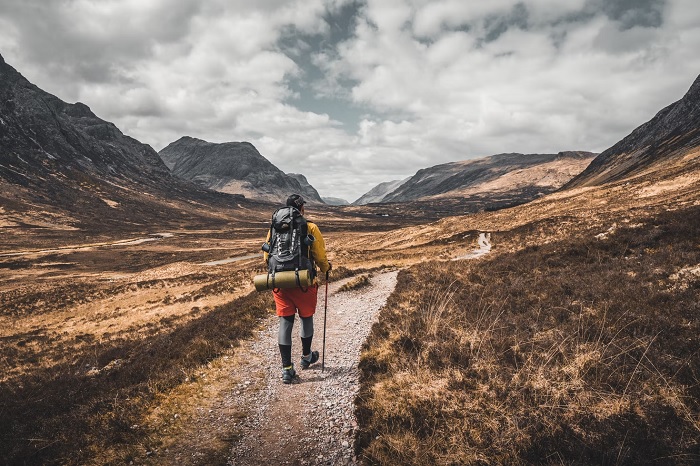
Buying Guide for Lightweight Travel and Hiking Cameras
If you’re unsure of what to look for in a lightweight camera fro travel and hiking, we can help fill in the blanks. Here are some features and specs you’ll want to look out for in a travel camera.

The Camera Body
The size and weight are the first things you need to consider in a travel camera. You don’t want anything that takes up too much space in your pack. And you don’t want your camera to weigh you down. You need a machine that’s compact and lightweight.
You’ll also need something rugged for the road. The best hiking camera is a weather-sealed camera. You never know when the weather can take a turn for the worse. And you don’t want your camera getting damaged in the rain.
Image Quality
Much of a camera’s image quality comes from the sensor resolution. You should look at the number of megapixels the camera sensor has. That will give you an idea of the image quality you can expect from your action camera.
Other features also contribute to image quality. The ISO range will give you an idea of how the camera performs in low light. And an image stabilization system keeps your images sharp. This means you don’t have to pack a tripod.
Video Quality
If you want to make travel and hiking videos, you’ll need a camera that’s up to the job. Most modern cameras have video features. But if you’re serious about videos , you shouldn’t settle for less than 4K video quality. It’ll look professional, and it’ll blow your social media competition out of the water.
What Camera Bag Will You Need?
That depends on the type of camera you choose. If you’re using a compact camera, you can fit it into your pack. Maybe it’ll fit into a big pocket. But if you’re using an interchangeable lens camera, you need a bag that protects the camera and the lenses.
Many travel and hiking photographers opt for camera backpacks. They’re spacious and they’ll protect your gear. And they leave your hands free for other essential tasks.
We recommend you try out our camera comparison feature or our article on budget travel cameras next!
Still Not Sure? Try Our Camera Tools!
Try our camera comparison tool.
Enter any two cameras to compare specs:
Explore our Camera Database
Try our camera finder quiz.
Buying a camera can be scary if you're not sure where to start. That's why we made this quiz! Answer a few simple questions to see the best camera options for you!
Related Articles
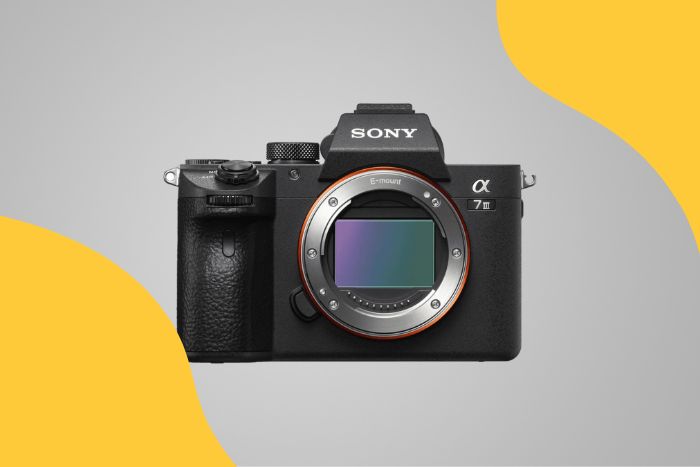
11 Best Budget Travel Cameras (Top Picks for Travel 2024!)
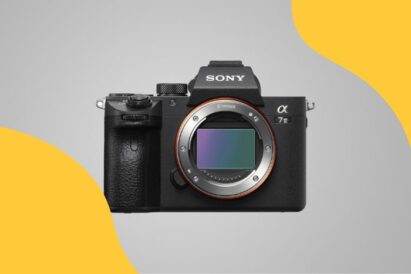
Finding the perfect camera for travel can be hard, especially if you are on a budget. Today, we will look through various options for travel photography. We’ll show you the best budget travel camera suitable for beginners all the way up to professionals. There are many different factors when considering the best budget travel camera. […]

17 Best Cameras for Hiking and Backpacking on a Budget in 2024
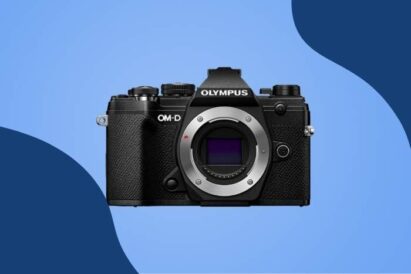
The best hiking camera lets you capture everything you see without slowing you down. We put together a list of the best DSLR, compact, and mirrorless cameras for hiking and backpacking.

Peak Design Travel Tripod Review (Worth The Price in 2024?)
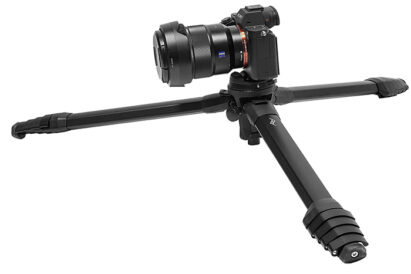
I have had my carbon fiber Peak Design Travel Tripod for a few years now. I am a bit of a Peak Design fangirl. I bought many of my bags during their initial Kickstarters. The company is known for making innovative camera and travel bags. But the travel tripod was a departure for the company, […]
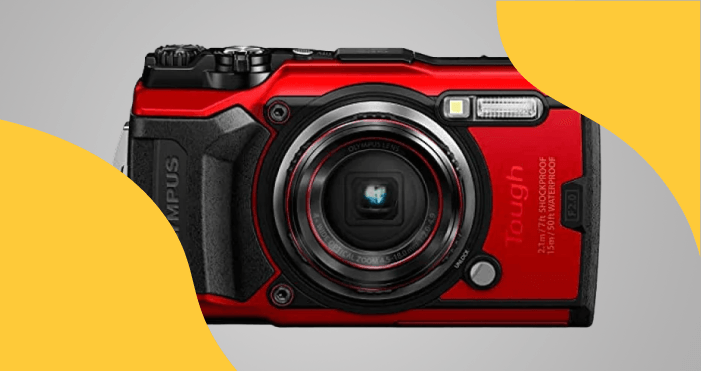
Best Rugged Cameras (11 Tough Cameras to Buy in 2024)
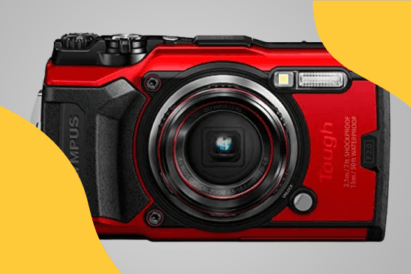
The best rugged cameras on the market are sometimes the best waterproof cameras. But it depends on what you mean by “rugged camera.” Do you want something to take with you on a beach holiday? If so, a compact waterproof camera like the Olympus TG-6 is fine. But if you’re more interested in taking video, […]

11 Best Cameras for Fashion Photography and Modeling 2024
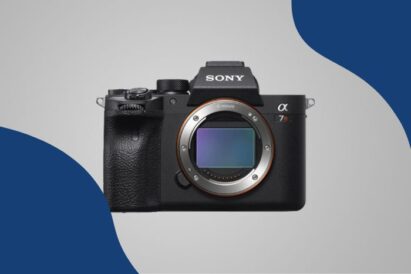
The Sony A7R IV tops our list of the best cameras for fashion photography, but not everyone has the budget for a professional camera. See our full list!
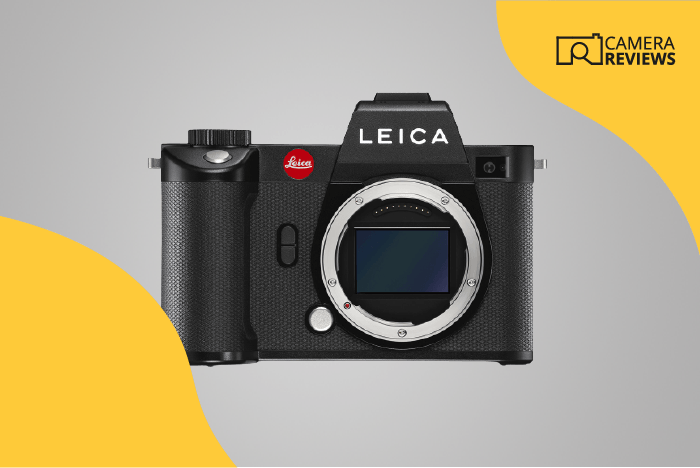
11 Best Leica Cameras to Buy in 2024
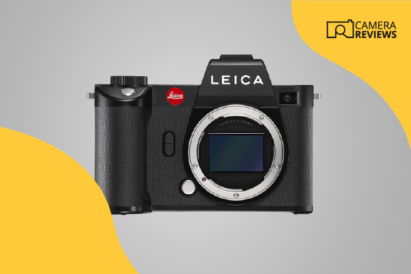
Searching for the best Leica cameras available in the market today? The Leica brand name holds a rich history and a prestigious status in the world of photography. Known for its exceptional quality, striking aesthetics, and unrivaled performance, a Leica camera is more than just a photographic tool—it’s a statement of style, sophistication, and know-how. […]
The leading authority in photography and camera gear.
Become a better photographer.
12.9 Million
Annual Readers
Newsletter Subscribers
Featured Photographers
Photography Guides & Gear Reviews

31 Most Famous Travel Photographers to Follow in 2024
Want to know the best travel photographers to follow on Instagram? Get inspired by these 31 incredible travel photography accounts!
Famous Photographers | Learn | By Jeff Collier
Shotkit may earn a commission on affiliate links. Learn more.
You’re about to discover 31 of the best travel photographers on Instagram in 2024.
I’ll introduce you to award-winning travel photographers who fly around the world in search of the most incredible photos.
I’ll also answer some frequently asked questions related to travel photographers in general.
You’ll find a ton of inspiration for your own travel photography in this guide.
You should also check out our related guides:
- Most famous photographers in the world
- Most famous celebrity photographers
- Most famous street photographers
- Most famous fashion photographers
- Most famous underwater photographers
Table of Contents
Who Are The Most Famous Travel Photographers in 2024?
Chris burkard.
View this post on Instagram A post shared by ChrisBurkard (@chrisburkard)
Burkard is a self-taught photographer who has truly mastered the art of taking breathtaking landscapes and action-filled portraits.
- What is the Best Camera for Travel Photography?
Lauren Bath
View this post on Instagram A post shared by Lauren Bath | Australia (@laurenepbath)
Her Instagram feed showcases her unique perspective in highly saturated landscapes and atmospheric wildlife photography .
She also gives you behind-the-scenes photography insights into how she goes about capturing her travel photos.
Joshua Cripps
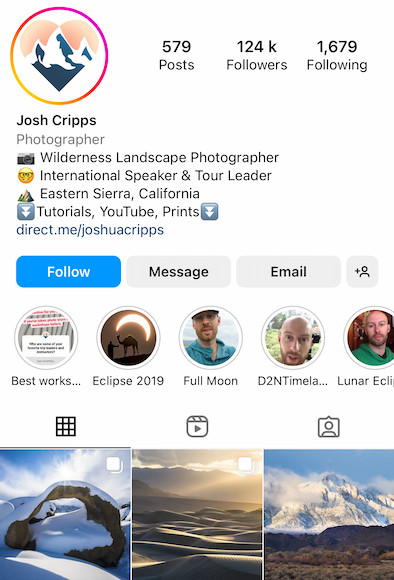
@joshuacrippsphotography
Joshua Cripps is a well-known American photographer , international speaker, and tour leader. His epic landscapes are somehow able to capture the feeling of being there yourself.
Melissa Hie
View this post on Instagram A post shared by ❤️ Mel’s Food & Travel log (@girleatworld)
This concept allows her to share tiny moments from around the world in fun and unique ways.
- Read more: What hashtags get the most attention on Instagram?
Lucy Rose Laucht
View this post on Instagram A post shared by Lucy Rose Laucht (@lucylaucht)
As a Leica ambassador, her passion and dedication to her craft shows up in every image, from beach scene to cityscape.
Even now, when most people take photographs with their phones, there’s still a lot to learn from film photography where every shot is precious.
- Best travel camera for blogging
View this post on Instagram A post shared by Sam Horine (@samhorine)
His Instagram account features life around him, with images from the city and the natural wonders his day job brings him to document.
Chase Guttman
View this post on Instagram A post shared by Chase Guttman (@chaseguttman)
He uses a drone to shoot amazing landscape photography in a different light, and he finds beauty in the repeating patterns you can see from above.
How Much Do You REALLY Know About Photography?! 🤔
Test your photography knowledge with this quick quiz!
See how much you really know about photography...

Your answer:
Correct answer:
SHARE YOUR RESULTS
Your Answers
- What is the best lens for travel photography?
View this post on Instagram A post shared by Gab Scanu | Travel • Photography (@gabscanu)
His duo-toned landscape shots are framed with a manmade element that helps the viewer focus on the natural beauty of the outdoors and be reminded of man’s interaction with it.
Glenn Lee Robinson
View this post on Instagram A post shared by Adventure Enthusiasts (@adventurenthusiasts)
From snowy mountains in Yosemite to a bird’s eye view of Lake Tahoe, his photos highlight the sheer beauty of California’s national parks and forests.
Senai Senna
View this post on Instagram A post shared by Senna Relax (@sennarelax)
In the meantime, I like to look at his tagged locations for travel inspiration and where I want to go next.
Lisa Michele Burns
View this post on Instagram A post shared by Lisa Michele Burns (@the_wanderinglens)
The pastel colors of sunset and the misty aura of waterfalls and ocean spray fill her feed with calming energy.
View this post on Instagram A post shared by Gary Arndt (@everythingeverywhere)
While he doesn’t post new images often, his reputation as a three-time Travel Photographer of the Year means that every post or reel is a must-see.
- Who are the 33 most famous architecture photographers?
Manuel Dietrich
View this post on Instagram A post shared by Manuel Dietrich | Germany 🇩🇪 | Travel | Hiking (@manueldietrichphotography)
Dietrich’s Instagram grid showcases his teal-orange-green style in a way that’s deeply inspiring. Instead of applying a filter to any photograph, he makes sure his subject fits into his style.
Laurence and Jessica Norah
View this post on Instagram A post shared by Laurence Norah (@lozula)
As full-time photography bloggers, they share their expertise in planning trips and documenting them.
Their Instagram feed is an approachable portfolio of experiences that almost anyone can learn from and emulate on their next big trip.
Colby Brown
View this post on Instagram A post shared by Colby Brown (@colbybrownphotography)
One feature of Brown’s photograph descriptions is the camera settings or equipment he uses. For most shots, he lets you know which lens and body he used, which is helpful when you’re ready for an upgrade.
Richard Bernabe
View this post on Instagram A post shared by Richard Bernabe (@bernabephoto)
His adventure photos from around the world move people to think about conserving the natural environment that he is so good at capturing.
- Read more: How do I start adventure photography?
Alex Strohl
View this post on Instagram A post shared by Alex Strohl (@alexstrohl)
His Instagram feed is more like a collection of mini blog posts behind the scenes of taking and producing images that you can share with the world.
View this post on Instagram A post shared by Sam (@sam.vox)
Don’t miss out on Vox’s reels which provide a behind-the-scenes look at the day’s work. Some photos are taken with a small point-and-shoot which proves that the best camera is the one that you have with you.
View this post on Instagram A post shared by Art Wolfe (@artwolfe)
His extensive archive of Instagram images showcases why he’s known as a master of color, composition and perspective.
View this post on Instagram A post shared by Bob Krist (@bobkristphoto)
Because of his experience, his Instagram travel photographs have a range of styles and subjects that I – and many others – look to for inspiration.
Timothy Allen
View this post on Instagram A post shared by Timothy Allen (@timothy_allen)
Paul Nicklen
View this post on Instagram A post shared by Paul Nicklen (@paulnicklen)
Nicklen’s skill in composing his photos is something I study before going on a trip and again before I edit my shots. His use of framing and composition takes his photos from snapshots to masterpieces.
Michael Yamashita
View this post on Instagram A post shared by Michael Yamashita (@yamashitaphoto)
His books, workshops, and lectures help him share his passion for historic explorers and the landscapes that they would have seen in ancient times.
View this post on Instagram A post shared by Yosigo (@yosigo_yosigo)
Whether it’s a trip to the beach or an abandoned parking garage, he has the ability to portray the modern world in a fresh light.
Navaneeth Unnikrishnan
View this post on Instagram A post shared by Navaneeth Unnikrishnan (@navaneeth_unnikrishnan)
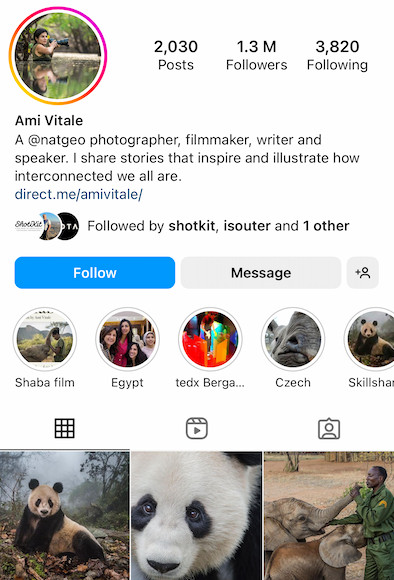
Ami Vitale is a renowned photographer who has travelled to over 100 countries and published a book showing pandas being released into the wild.
Lola Akinmade Åkerström
View this post on Instagram A post shared by PhotoShelter (@photoshelter)
Jord Hammond
View this post on Instagram A post shared by JORD | TRAVEL PHOTOGRAPHY (@jordhammond)
Eric Rubens
View this post on Instagram A post shared by Eric Rubens 🌅 Travel & Photography (@ericrubens)
Though the colors in his landscapes must be highly edited, his skill in knowing what to highlight and when to stop makes his dreamy seascapes something special.
- Read more: Who are the most famous landscape photographers?
Elia Locardi
View this post on Instagram A post shared by Elia Locardi (@elialocardi)
From a once-in-a-lifetime photo of the Northern Lights to a series of shots documenting the city’s skyline, he knows how to draw you into his world.
Matjaž Krivic
View this post on Instagram A post shared by Matjaz Krivic Photography (@krivicmatjaz)
The emotion of the trip is evident in every shot, which he shares on his Instagram feed.
FAQs about Travel Photographers
What is considered as a travel photographer?
Anyone who uses a camera to document the world and showcase what makes a location unique. Instagram travel photographers may have a defined vision or may take inspiration from an area’s landscape, food, people and history.
Is it hard to be a travel photographer?
It takes dedication, and it can be hard at times. My favorite photographers are skilled with both a camera and a computer, and they work almost as hard at marketing themselves and teaching others as they do in capturing the perfect picture.
Are travel photographers in demand?
Yes! The travel industry is not slowing down, which means that the demand for new photographs and videos of exciting locations around the world is still high.
Does travel photography pay well?
Instagram travel photographers may be paid by brand sponsorships and marketing agencies for the trips they take. They can make money selling prints of their work directly online or through galleries . Many even guide trips and have online classes teaching others how to recreate their style.

Check out these 8 essential tools to help you succeed as a professional photographer.
Includes limited-time discounts.
You'll Also Like These:

Jeff Collier is an experienced film photographer who enjoys experimenting with modern digital photography equipment, software and apps. He’s also an ex-world champion triathlete and avid cyclist, clocking hundreds of km each week in the beautiful Tweed Valley of northern NSW, Australia.
Leave a Comment Cancel Reply
👋 WELCOME TO SHOTKIT!

🔥 Popular NOW:

Unlock the EXACT blueprint to capture breathtaking iPhone photos!

An official website of the United States government
Here’s how you know
Official websites use .gov A .gov website belongs to an official government organization in the United States.
Secure .gov websites use HTTPS A lock ( Lock Locked padlock icon ) or https:// means you’ve safely connected to the .gov website. Share sensitive information only on official, secure websites.

International travel documents for children
See what documents a child needs to travel to or from the U.S. alone or with a parent or relative.
Children traveling to the U.S.
All children, including infants, must have their own travel documents such as a passport or document from a Trusted Traveler Program to enter the U.S. If you travel or are going to travel with a child, consider taking the following documents:
- If the child is traveling with only one of their custodial parents, they must have a letter of consent, preferably in English and notarized, from the other parent or signed by both parents. The letter should say "I acknowledge that my son/daughter is traveling outside the country with [the name of the adult] with my permission."
- If one parent has sole custody of the child, a copy of the custody document can take the place of the other parent's letter.
- Parents who frequently cross the border by land with a minor must always carry a letter of permission from the other parent.
U.S. citizen children traveling abroad
Ports of entry in many countries have security measures to prevent international child abduction . If you are traveling alone with your child, you may be required to present documentation proving you are the parent or legal guardian. You may also need a letter of permission from the other parent for your child to travel.
If your child travels alone, depending on the country, they may be required to present a notarized letter from both parents or their legal guardian. If a minor is traveling abroad and is not accompanied by both parents or a legal guardian, contact the embassy or consulate of the country you will be visiting and ask about entry and exit requirements for that country.
LAST UPDATED: December 6, 2023
Have a question?
Ask a real person any government-related question for free. They will get you the answer or let you know where to find it.
The best travel tripod in 2024: from full-size sticks to bag-sized mini-tripods
The best travel tripods have to be small enough to pack, light enough to carry, and sturdy enough for shake-free photos!
The Quick List
Best tripod overall, best for sturdiness, best lightweight tripod, best with 3-way head, best for versatility, best alloy tripod, best budget carbon.
- How to choose
- How we test
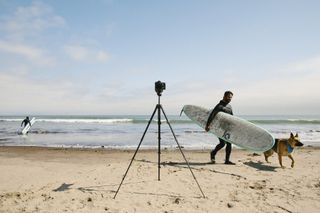
The Quick List ↩ 1. Best tripod overall 2. Best for sturdiness 3. Best lightweight tripod 4. Best with 3-way head 5. Best for versatility 6. Best alloy tripod 7. Best budget carbon How to choose How we test
I like to travel light, whether I’m walking city streets, trekking across the countryside or jetting off to the other side of the world. Conventional full-sized tripods tend to be big, heavy, and unwieldy – so I often leave mine at home, making it completely useless. By contrast, the best travel tripods literally take a load off. They’re made to be compact and lightweight but, in the past, they’ve often been notorious for being flimsy, relatively unstable, and too small to offer a useful operating height. The new breed of travel tripods tempt me with the promise of giving me the best of both worlds.
Most modern travel tripods have legs that swing upwards for storage, so that the head is encircled by the feet. This typically reduces the folded height by as much as 4" / 10cm. Some also include as many as five sections in each leg, and a two-section extending center column, reducing the folded height even further, while still enabling reasonably lofty shooting. I find they take longer to set up and fold away but it’s a trade I’m willing to make for smaller stowage.
Matthew Richards is a photographer and journalist who has spent years using and reviewing all manner of photo gear. He is an encyclopedia when it comes to all manner of cameras, camera holsters and bags, flashguns, tripods and heads, printers, papers, and inks, and just about anything imaging-related.
Here's a quick rundown of all the lenses in this guide. Scroll down for a more in-depth look at the individual products.
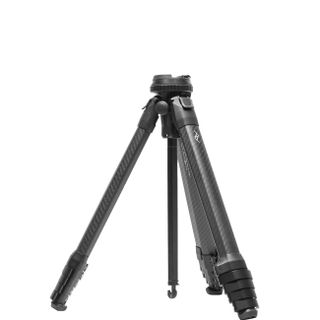
It's the first tripod Peak Design has ever made, but it's the best travel tripod I've ever seen! There is an aluminum version that's a massive 40% cheaper, however, which has all the same design features but just a little less vibration resistance. Read more below

This is no ordinary tripod; it folds down to just 35cm, opens to a height of 146cm, and has a huge 30kg payload. I like that its detachable monopod leg can be used as a mic or camera boom, and it has a Tri-Mount system for adding accessories. Read more below

I like that this is one of the outright lightest travel tripods on the market but still packs plenty of useful features. It’s equally adept for taking selfies as much as for shooting landscapes and the like, making it right up my street. Read more below

Ball heads are all the rage but there are times when I prefer a 3-way head for making precision adjustments. This Manfrotto kit obliges by bucking the trend, and I find it’s well suited to shooting video as well as stills. Read more below
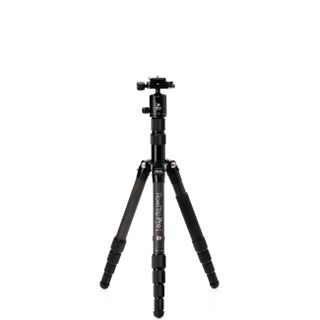
This Benro carbon tripod's 6-in-1 billing could fool me into thinking that it's all about versatility, but it's a very good travel tripod. Even at full height, it's impressively stable, and it packs extra features that could come in handy whether shooting with a camera or a phone. Read more below
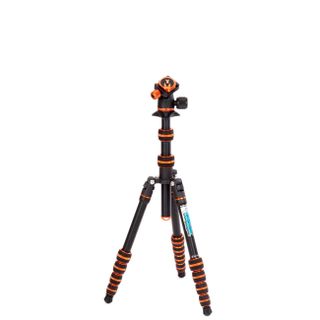
I often love the creative potential of shooting at really low level and the Corey 2.0 gives me all the flexibility I need to make dramatic shots without the fuss. It’s not a carbon fiber tripod but made from top-notch magnesium alloy. Read more below
Load the next products ↴
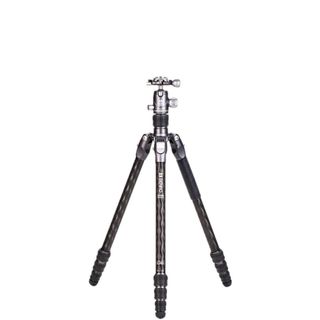
I generally prefer carbon fiber tripods to metal ones, for a saving in weight and enhanced resistance to vibration. I’m not so keen that I often have to pay a whole lot more for the privilege but the Rhino is great value for money. Read more below
The best travel tripods we recommend in 2024
Why you can trust Digital Camera World Our expert reviewers spend hours testing and comparing products and services so you can choose the best for you. Find out how we test.
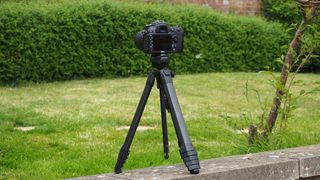
1. Peak Design Travel Tripod
Our expert review:
Specifications
Reasons to buy, reasons to avoid.
✅ You like innovative design and photographic kit that makes a real statement.
✅ You want a travel tripod that has the slimmest possible profile, thanks to specially shaped legs.
✅ You don’t mind paying top-dollar for a travel tripod, and can make use of all the features.
❌ You don’t want to pay over the odds for an aluminum or carbon fiber travel tripod – there’s no denying it’s pricey.
❌ You don’t need a mobile phone mount, which is a bit fiddly to get at.
❌ You’d rather have a different type of head, although an adapter is available separately.
The Peak Design Travel Tripod may be the first tripod that Peak Design has made, but it's hands-down one of the best travel tripods that I've ever used! There is an aluminum version that's a massive 40% cheaper, however, which has all the same design features, just a little more weight and less vibration resistance. A couple of the other tripods here will go higher, but the Peak Design will still go to eye level for an average-height person, and it packs down to just 39cm in length.
I like that it's designed to cut out the dead space between the legs and the column when packed, which means it's not just short when folded but very slim too – I can put this inside my camera bag or cabin bag instead of just strapping it to the outside. The low-profile ball head is simple but brilliant, there's a phone holder hidden inside the center column, and best of all for me, the tripod feels seriously rigid.
Read more: Peak Design Travel Tripod review
- Back to the top ⤴

2. 3 Legged Thing Leo 2.0
✅ You want to choose your own head, although you can buy the legs on their own.
✅ You don’t like fiddling with lots of leg clamps and dual center column clamps.
✅ You’re keeping an eye on the bottom line – it’s a pricey travel tripod.
❌ You want to choose your own head, although you can buy the legs on their own.
❌ You don’t like fiddling with lots of leg clamps and dual center column clamps.
❌ You’re keeping an eye on the bottom line – it’s a pricey travel tripod.
The 3 Legged Thing Leo 2.0 is no ordinary tripod. It folds down to just 35cm in length but opens out to offer a maximum height of 146cm and a huge payload capacity of 30kg. That far exceeds the weight of any of my camera and lens combinations but the net result is great rigidity.
I like that it has a detachable monopod leg which can also be used as a microphone or camera boom, a Tri-Mount system for adding accessories, and an innovative two-section center column. That helps it to fold down really small yet reach a decent maximum operating height. You can buy the legs on their own but I’d get the complete kit with 3 Legged Thing’s new and improved AirHed Pro Lever ball head.
The Leo 2 is not the smallest travel tripod you can get, and not the cheapest, but its ratio of folded length to maximum height, combined with its all-around versatility, make it one of the best.
Read more: 3 Legged Thing Leo 2.0 + AirHead Pro Review
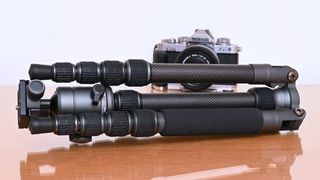
3. Vanguard VEO 3GO 235CB
✅ You want a tripod that includes a smartphone adapter and even a Bluetooth controller.
✅ You’d like a tripod that works as a monopod and selfie stick as well.
✅ You want one of the absolute lightest travel tripods on the market.
❌ You want a heftier maximum load rating than 4kg.
❌ You’d rather have a taller maximum operating height than 136cm.
❌ You don’t feel the need for a low level adapter or dual rubber pad and spiked feet.
With five sections in each swing-up leg and a two-section center column, this Vanguard folds down to just over a foot long yet gives a reasonable maximum operating height. I find it can easily fit into my daily bag or backpack. It’s also very lightweight although, as expected, the alternative aluminum version is a little heavier. The bottom leg sections are quite spindly, with a diameter of just 11mm, but stability is pretty good even at full stretch.
As well as giving a typically quick and easy change to monopod configuration, the Vanguard is more unusual in coming complete with a smartphone adapter. I like that it works well as a monopod and even a selfie stick, so I only need to take one support for the journey rather than two or three.
Read more: Vanguard VEO 3GO 235CB review
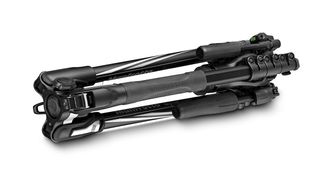
4. Manfrotto Befree 3-Way Live Advanced
✅ You like the idea of a hybrid travel tripod, with a head that works well for video as well as stills.
✅ You feel reassured by buying a tripod from one of the biggest names in the business.
✅ You like flip locks rather than the more usual twist locks for leg clamps.
❌ You’d rather have a tripod kit that has a more usual ball head.
❌ You don’t shoot video, but stick to stills.
❌ You’d prefer a carbon fiber travel tripod rather than an aluminum one.
The Manfrotto Befree 3-Way Live Advanced is a lightweight photographer’s travel tripod paired with a three-way head. Although ball heads have become hugely popular, I actually prefer a 3-way head for the likes of architectural and close-up shooting, where precise adjustments can be critical. The 3-way fluid head in this case uses a hydraulic damping system to make it easy for smooth, fluid camera movements, so I find it also works well for shooting video.
The tripod, meanwhile, provides a good balance between capacity, weight, and price. It’ll take 6kg of kit and only weighs 2kg itself. I’ve tested lighter and stronger tripods, but they tended to be more pricey than this one.
It’s not as tall as some of the other tripods in this guide, and doesn’t fold down particularly small, the latter not helped by having a 3-way rather than ball head. But, for the vast majority of purposes, this is an impressive all-around package and merits serious consideration for any traveling photographer or videographer.
Read more: Manfrotto Befree 3-Way Live Advanced tripod review
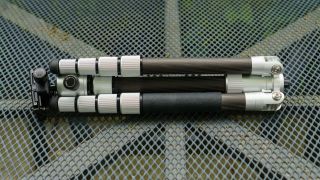
5. Benro MeFoto RoadTrip Pro
✅ You like different color options for the finish, instead of just black.
✅ You’d like a tripod that can adapt for tabletop and other uses.
✅ You want a tripod that comes complete with a smartphone mount.
❌ You don’t need a tripod with the extra versatility, which can be fiddly.
❌ You’d rather save money and buy the aluminum version of the tripod.
❌ You don’t like having so many leg and column clamps to deal with.
I thought the headline attraction of the so-called ‘6-in-1’ Benro MeFoto RoadTrip Pro would be its versatility. That’s obviously a headline feature but I’ve found that it's also a very good travel tripod, pure a simple. Even at full height it's impressively stable for its build, and it packs a few extra features that come in handy when I’m shooting with a camera or a phone.
I’ve found that it's an excellent travel tripod and, again, thanks to its versatility, it works well as a monopod and also as a mini table tripod, which are genuinely valuable additions. It's great that things like the hex key, small tripod legs, and smartphone clamp are contained within or attached to the tripod, making it much less likely that I’ll leave them behind or lose them along the way. The flip side is that the extra bits and pieces make the tripod a little heavier than it needs to be.
Read more: Benro MeFoto RoadTrip Pro Carbon Fiber review

6. 3 Legged Thing Punks Corey 2.0
✅ You’re happy with a magnesium alloy rather than carbon fiber travel tripod.
✅ You want great performance and versatility at a bargain price.
✅ You like the ability to shoot creatively from really low levels.
❌ You’d rather spend more on a carbon fiber tripod that’s not cold to the touch.
❌ You’d rather have something simpler, with less leg and column clamps to operate.
❌ You don’t need the 14kg payload because you’re using lightweight kit.
I find that all of the Punks tripods from 3 Legged Thing are very travel-friendly, but the Corey 2.0 is the smallest and easiest to pack for the journey. It has the usual swing-up legs to save stowage space, this time with five sections in each, plus a two-section head, enabling a decent maximum operating height but a very small stowage size.
Don’t be put off that this one’s not a carbon fiber tripod. It’s actually made from aerospace grade magnesium alloy and the upshot is that it’s still lightweight yet very strong, with a hefty 14kg maximum load rating.
It ticks another two boxes on my wish list by easily converting to a monopod, and enabling ultra-low-level shooting with the option of attaching the ball head directly to the canopy (leaving the center column out of the equation). All three legs are removable, and Vanz footwear (sold separately) transforms the Corey 2.0 into a stylish tabletop tripod.
Read more: 3 Legged Thing Punks Corey 2.0 review

7. Benro Rhino 05C (Zero Series) VX20
✅ You want a really small, lightweight tripod that still has a hefty 10kg load rating.
✅ You’re after a carbon fiber tripod that’s reasonably priced.
✅ You can make use of the secondary pan axis for shooting panoramas and video.
❌ The monopod configuration is nice to have but only stretches to a maximum height of 141cm.
❌ You’d like a travel tripod with a quick setup time.
❌ You’d prefer a tripod with feet that have metal spikes as well as rubber pads.
A plus point for me when space is at a premium is that the Benro Rhino 05C VX20 (also called the Rhino Zero Series VX20) is the smallest in a group of four recently launched Rhino travel tripods. Compactness doesn’t equate to flimsiness though and I’ve found that it’s remarkably rigid and robust for such a compact tripod. Another nice touch is that Benro’s companion VX ball heads have a secondary pan axis just under the camera plate. It’s great for taking sequences of panned shots to stitch into a panorama, and shooting video, as the panning axis remains on the level without the need to meticulously level the legs as well as the head.
I find that travel tripods have limitations, including a lower maximum working height and longer ‘unfolding’ time, but this goes with the territory and I can’t criticize the Rhino for that. Sure enough, this Benro doesn't extend to a particularly tall height, and outright rigidity can feel a little compromised if I fully extend all of the leg sections and both of the center column sections. When it’s not at full stretch though, I find this Benro is as rigid as much bigger and heavier tripods.
Read more: Benro Rhino 05C VX20 review
How to choose the best travel tripod
It’s good to be choosy when picking your perfect travel tripod for your needs and budget. Here’s a few things to bear in mind…
Carbon fiber is pricier than aluminum, but is it worth the extra?
Up-market tripods are usually made from carbon fiber instead of aluminum. They have a more luxurious feel, a smarter looking finish, and can be slightly more resistant to vibrations. Carbon fiber can also feel less cold to the touch. But the main advantage of carbon fiber is that it’s more lightweight than aluminum, giving it a clear advantage when you’re trying to shed weight. However, there can be diminishing returns. Although the weight-saving can be substantial in full-sized tripods, it’s much less noticeable in relatively small tripods. For many travel tripods that are available in both aluminum and carbon fiber options, the latter typically only saves around 200g in weight, little more than 10 per cent. Considering that the carbon fiber editions are often about 50 per cent more expensive to buy, aluminum travel tripods can be more cost effective.
How small is the tripod when folded?
A decade ago, the Giotto’s company launched a series of Vitruvian tripods, named after Leonardo da Vinci’s drawing, ‘The Vitruvian Man’. As in the drawing, the legs swing upwards but, in the case of the Giotto’s tripods they swung up completely, adopting a vertically upright orientation for stowing away. The trick was that, by fully extending the center column before swinging the legs up, the tripod head no longer extended beyond the length of the legs, making the carrying size much smaller. Many recent travel tripods fold down small enough to fit inside a bag or backpack, rather than needing to be tethered to the outside.
Can I save space by using a tripod as a monopod as well?
A neat trick of many recent travel tripods is that you can unscrew one of the tripod legs, detach the center column, and join the two together for use as a monopod, complete with ball head. That can be a real space saver if you like using a monopod as well as a tripod, as you only have to carry one bit of kit.
What’s so good about multi-angle legs?
Pretty much all travel tripods these days have legs that can be locked at multiple angles to the center column. Typically either two or three alternative angles are available, in addition to the legs being able to swing up vertically. This can help when you’re shooting on uneven terrain, or when there are obstacles in the way. For example, you might need to use one or two legs in a near-horizontal orientation and place the feet on a wall or table to get into your desired shooting position. Another bonus is that, by splaying the legs to a wider angle when shooting at low operating heights, you can increase stability and reduce the risk of the tripod toppling over if knocked.
How low can you go when shooting with a tripod?
Multi-angle legs help to reduce the minimum shooting height but the limiting factor is generally the point at which the center column touches the ground. The minimum height is therefore the height of the center column plus the ball head. A two-section extending center column can help to further reduce the minimum operating height, as well as the carrying height. Some tripods are supplied with a short, stubby ‘low angle adaptor’. You can attach this to the tripod head and use it instead of the center column. The center column is also removable in most tripods, so you can invert it and shoot from between two of the legs with the camera upside down, right down at ground level.
What’s best for feet, pads or spikes?
Rubber pads are the normal footwear for tripods these days. They work well on solid ground as well as on grass and sandy areas. For soft surfaces like carpet, spikes can offer a more assured footing. Some tripods are supplied with both rubber pads and metal spikes, so you can swap between them as needed. Another option that used to be more common in the past is rubber pads on a threaded mount, so you can screw them in to reveal metal spikes beneath.
How we test travel tripods
We measure the maximum operating height of each tripod and its folded height for carrying, complete with head attached. We also measure the combined weight of each set of tripod legs and head, using electronic scales, and measure the diameter of all leg sections, from the widest to the thinnest, using digital calipers. We check the ease of use, smoothness and precision of all available adjustments in each set of tripod legs and heads. This ranges from adjusting leg sections and pivot facilities (where available), to the locking mechanisms of the head, as well as independent pan and friction damping adjustments, where fitted. To check overall stability, we shoot with a range of camera bodies fitted with wide-angle, standard, telephoto and macro lenses. We look for good resistance to flexing and vibrations throughout the whole range of operating heights, including the tallest available settings with the legs and center column fully extended.
You can find out more about how we test and review on Digital Camera World .
Get the Digital Camera World Newsletter
The best camera deals, reviews, product advice, and unmissable photography news, direct to your inbox!
Matthew Richards is a photographer and journalist who has spent years using and reviewing all manner of photo gear. He is Digital Camera World's principal lens reviewer – and has tested more primes and zooms than most people have had hot dinners!
His expertise with equipment doesn’t end there, though. He is also an encyclopedia when it comes to all manner of cameras, camera holsters and bags, flashguns, tripods and heads, printers, papers and inks, and just about anything imaging-related.
In an earlier life he was a broadcast engineer at the BBC, as well as a former editor of PC Guide.
- James Artaius Editor
Related articles


Most useful travel products on Amazon under $50
N ow that Memorial Day has passed and your summer travel plans are coming together, it's time to consider all the gear and goods you'll need to pack to make your summer travel easy and fun.
We're not just talking about shirts and swimsuits for when you reach your destination. You'll also need gear for the traveling part -- think eye masks, phone adapters and holders, ear plugs and cleaning supplies
All that new gear can be expensive, but it doesn't have to be. To save you some cash, we've taken a trip through the virtual aisles of Amazon, searching for affordable travel necessities you'll need this summer but don't need to splurge on. You'll have extra room on your summer travel budget thanks to these travel products you can find on Amazon for under $50.
Useful necessities to upgrade your travel experience don't have to break the bank. We found reviewer-loved travel essentials that will seriously enhance your summer trip.
- The best rolling bag under $50 : Wrangler Wesley rolling duffel bag
- Best accessory for in-flight entertainment: Avantree Relay Bluetooth adapter
- Best packing organizers : Veken packing cubes
- Best phone charger set for travel : Portable charger with built-in cables
- The best mask for flying : Lightimetunnel Sleep Bluetooth-enabled mask and headphones
- Best packing solution for shoes : JJ Power travel shoe bags
- Best rain gear for light rain : Hood to Go portable hood travel accessory
- Best travel beauty hack : Neutrogena makeup remover facial cleansing towelettes
- The most useful in-flight phone mount : Perilogics universal in-flight phone holder mount
- Best earplugs when flying red-eye : EarPlanes 3-pair earplugs
The best rolling bag under $50: Wrangler Wesley rolling duffel bag
Constructed with high-quality nylon, the Wrangler Wesley rolling duffel bag is built to withstand the rigors of frequent travel. Its lightweight design makes it easy to maneuver, while the heavy-duty blade wheel system ensures smooth rolling on any surface. The spacious main compartment provides ample room for packing and multiple additional zippered pockets offer convenient organization for smaller items. You can use it like a rolling suitcase or hold it like a duffel bag. The check-in suitcase size makes it ideal for longer trips or those who need extra storage capacity.
This 30-inch piece of luggage is available in black, charcoal gray, tannin and navy blue colors. Rated 4.3 stars.
The Wrangler Wesley rolling duffel bag is available at Amazon for $45.
Best accessory for in-flight entertainment: Avantree Relay airplane Bluetooth adapter
This device lets you enjoy movies in-flight with your own headphones or earbuds, thanks to its included dual adapter that fits any plane's audio jack. It works with any aux audio device and connects to Bluetooth headphones. Its impressive 20-hour battery life keeps you powered up, and you can use it while it charges.
The best part is that you can easily connect up to two devices, so you and your travel partner can watch shows and movies together in flight.
This Amazon pick has a 4.5-star rating from over 1,300 reviews. The Avantree Relay airplane adapter is available on Amazon for $40.
Best packing organizers: Veken packing cubes
After your first trip using packing cubes, you'll wonder how you traveled the world without them. This set includes a laundry bag and toiletry case, three packing cubes, an accessories bag, a shoe bag and an underwear bag.
Each bag is made from durable thick fabric featuring sturdy two-way zippers. Each bag features transparent, breathable mesh panels that keep clothing fresh and visible.
Packing cubes will spare you a suitcase full of wrinkled clothing while keeping your shoes and dirty clothing separate from all those clean outfits you have yet to wear.
This packing cube set is $25 at Amazon.
Best phone charger set for travel: Portable charger with built-in cables
This slim high-speed phone charger features four built-in charging cables for almost all types of devices, including iPhones , iPad tablets and Samsung phones . This charger has six outputs and three inputs, meaning you can charge up to six devices at the same time.
A travel necessity, this portable charger saves you the inevitable cable wad and lost chargers that seem to accompany one's family trip without fail.
This portable charger is $20 (reduced from $40).
The best mask for flying: Lightimetunnel Sleep Bluetooth-enabled mask and headphones
You need this wireless music sleep headphones eye mask if you struggle to sleep in planes, trains, cars and beds that aren't your own. With a 3D ergonomic design and 100% light blocking, the mask is perfect for problem sleepers -- or if you just don't want to be disturbed on a flight. The machine-washable eye mask has an ultra-soft, breathable feel. Plus, the battery lasts over 10 hours for a full and peaceful night's sleep.
The Lightimetunnel sleep Bluetooth-enabled mask and headphones are $23 at Amazon.
Best packing solution for shoes: JJ Power travel shoe bags
Don't want your dirty shoes to touch the clean clothes in your suitcase? We have a solution: these durable and functional travel shoe bags. Made with waterproof nylon, double stitching and two-way zippers, they're built to last. They offer ample space for your shoes, with an extra slot for slippers. Not just for travel, these versatile bags can be used for packing, organizing and even as laundry pouches.
These shoe bags are a must-have for any adventurer. Rated 4.6 stars.
JJ Power 2-pack travel shoe bags are available at Amazon for $10.
Best rain gear for light rain: Hood to Go portable hood travel accessory
Imagine this: you're at an amusement park or on a hike, enjoying your surroundings. Then, low and behold, a downpour occurs. What can you do? Well, this hood attaches to any jacket, or you can wear it on its own. It's a lot easier to handle than trying to open a cheap plastic poncho while it's raining.
There's a drawstring that you can adjust to protect you on windy days, and the hood is made from 100 percent water-resistant microfiber that can protect your hairstyle. Rated 4 stars on Amazon.
Hood to Go portable hood travel accessor is $29 at Amazon.
Best travel beauty hack: Neutrogena makeup remover facial cleansing towelettes
Did you know that travel can be rough on your skin? The air on the plane is drying, and the sweat and grime from being in close quarters can add up.
Washing your face with a travel-friendly face wipe can make you feel refreshed. Take off your makeup before you sleep on a flight, rejuvenate your skin in a gas station bathroom or cleanse your face right before you deplane. The ultra-soft, single-serving towelettes are made of plant-based compostable material. They'll make it through the TSA checkpoint and won't take up much space in your travel bag.
Neutrogena makeup remover facial cleansing towelettes are $7 at Amazon, reduced from $9.
The most useful in-flight phone mount: Perilogics universal in-flight phone holder mount
Not all airlines offer an in-seat TV these days -- travelers are increasingly expected to use their phones or tablets for in-flight entertainment. Luckily, the Perilogics universal in-flight phone mount is a versatile and practical accessory loved by over 500,000 travel enthusiasts on Amazon.
With a strong clamp, it securely attaches your phone to airline tables, luggage handles or gym equipment. Its dual joints and 360-degree rotation provide the perfect viewing angle. Compatible with various phone sizes.
Perilogics universal in-flight phone holder mount is $14 at Amazon.
Best earplugs when flying red-eye: EarPlanes 3-pair earplugs
Do you struggle with ear discomfort on planes? These amazing earplugs are tested by U.S. Navy pilots and approved by flight attendants. They provide relief from air pressure discomfort, making your journey much more comfortable. Additionally, EarPlanes earplugs help reduce noise for a more peaceful travel experience.
This three-pack of EarPlanes earplugs for adults is available at Amazon for $19, reduced from $23.
Kids may struggle with ear pressure on planes even more than adults do. Pick up the children's version for all your littlest travelers.
EarPlanes 3-pair earplugs for kids are $19 at Amazon.

Security Alert May 17, 2024
Worldwide caution, update may 10, 2024, information for u.s. citizens in the middle east.
- Travel Advisories |
- Contact Us |
- MyTravelGov |
Find U.S. Embassies & Consulates
Travel.state.gov, congressional liaison, special issuance agency, u.s. passports, international travel, intercountry adoption, international parental child abduction, records and authentications, popular links, travel advisories, mytravelgov, stay connected, legal resources, legal information, info for u.s. law enforcement, replace or certify documents.
Get a Passport
Renew or Replace a Passport
Get My Passport Fast
Prepare to Apply
Passport Help
Legal Matters
Prepare to Apply for a Passport Homepage
Share this page:
Passport Forms
What Form Should I use?
Get Your Processing Time
Passport Fees
Passport Photos
Citizenship Evidence
Photo Identification
Where to Apply
Uploading a Digital Photo
When you renew your passport online , you will need to upload a digital photo. This process is different than renewing by mail when you staple a photo to your application.
- Before you start your application, get your passport photo taken by someone else. No selfies.
- Follow the special requirements for a digital photo and photo examples on this page.
- Learn the top reasons why we cannot accept your digital photo.
- Do not scan a printed photo or take a photo of an already printed photo.
Tips for Uploading a Digital Photo
- Select a .JPEG file from your computer or mobile device and upload it to your application.
- Make sure there is lots of space around your head and shoulders.
- An employee will review your photo after you submit your application. If the photo does not meet our requirements, we will send you a letter or email asking you send us a new photo.
- If the photo tool does not accept your photo, the tool will provide a message explaining the reason(s). Find information about why the tool did not accept your photo on this webpage.
Special Requirements for a Digital Photo
Photo examples, see photo examples.
- Resolution and Quality
- Size and Position
- Shadows and Lighting
- Pose and Expression
- Digital Changes
- Attire, Hats, and Glasses
Understanding Top Photo Error Messages
Background may not meet our requirements.
There are several reasons why you may be receiving this error message. Please make sure you upload a new photo that includes:
- A plain background with no texture, lines, or objects
- White or off-white background without shadows
- Space above and below your head including part of your torso to allow for cropping by our photo tool
Image compressed
We need you to upload a new photo that has a higher resolution, is not grainy or pixelated, and is not compressed. Compression means the file size is too small with respect to the pixel dimensions. A photo may become compressed if it is edited after it is taken. Improve the resolution of your photo by changing the settings on your camera.
When saving and emailing your photo, select the highest quality setting (large file size). Do not edit or change your photo using software or a mobile app. To avoid compressing your image, do not send the image via text message.
Expression may be unnatural
Our photo tool detected that your expression may be unnatural. Make sure your eyes are open and your mouth is closed.
Head size or position may be incorrect
We need you to upload a new photo because the size and position of your head is not acceptable for a passport. If the person taking your photo is standing too close or too far away, your head may not be the correct size.
Please make sure there is lots of space around your head and shoulders when you upload your photo. Our photo tool will crop your photo into the correct dimensions.
Image quality may be poor
This message means your photo may be blurry or out of focus. Your photo may have a low resolution and file size, it may be grainy and pixelated, or it may lack clarity. Please upload a new photo with a larger file size and resolution.
Watch this video to see an example:
Lighting or exposure may be incorrect
There are several reasons why you may be receiving this error message. Please make sure you upload a new photo that is not overexposed or underexposed.
Underexposure happens when a photo appears to be darker than neutral exposure. Overexposure happens when a photo is too bright or appears washed out.
Internal server error
We are experiencing a temporary, technical issue with our online renewal application. Please log out of your application, clear the cache and cookies in your web browser, and try again in several hours.
External Link
You are about to leave travel.state.gov for an external website that is not maintained by the U.S. Department of State.
Links to external websites are provided as a convenience and should not be construed as an endorsement by the U.S. Department of State of the views or products contained therein. If you wish to remain on travel.state.gov, click the "cancel" message.
You are about to visit:
National Geographic content straight to your inbox—sign up for our popular newsletters here

Carthage was Rome’s greatest rival. Go see its side of the story.
Roman conquerors tried to erase the past of this ancient Tunisian port city—but these historic sites shed light on the true glories of Carthage.
From 650 B.C. to 146 B.C., Carthage was the most powerful trading and commercial city in the Mediterranean. Its sophisticated 200-dock harbor and wealthy population supported a sprawling metropolis of temples, markets, and estates outside present day Tunis, a 20-minute drive away. It even loomed large in Greek mythology as the home of the legendary Dido , whose racy story of forced marriage and illicit love inspired poetry, operas, and countless classical oil paintings.
But some 2,000 years ago, Carthage was razed to the ground by its rival, the Roman Republic . Carthaginians were murdered or sold into slavery, and the Romans built a new Carthage on the ruins.

Since the Romans sacked the city and destroyed most of its libraries and archives, “virtually nothing” known of the Carthaginian people has been gleaned from primary sources. “With Carthage, you’re dealing with something where there are huge holes,” says Richard Miles, author of Carthage Must Be Destroyed: The Rise and Fall of an Ancient Civilization .
Now, Carthage is seeing revitalization efforts helmed by the Tunisian Ministry of Culture and the European Union that aim to restore several Carthaginian sites, providing visitors with an improved experience and better protecting what remains of the city’s nearly lost legacy.
‘Carthage must be destroyed’
Around 200 B.C., “Carthage [was] the original Mediterranean superpower,” says Miles. Thanks to its vast control over trading ports and various North African land routes, “Carthage was the great connector. It [took] all sorts of influences—Greek, Phoenician, Italian, [and also from] the Iberian Peninsula, Nubians, and the Libyans in North Africa—and it melded them together into something that is unique.”
( Find mosaics and mystery in an outpost of the Roman Empire .)
As the Roman Republic’s power grew across the sea, however, so did its rivalry with the Carthaginians. Three wars flared between the two empires, spanning nearly a hundred years.

In 149 B.C. Rome laid siege to Carthage, burning its famed fleet before nearly leveling the city. “The destruction of Carthage was an act of vengeance,” Miles says, adding that the Romans wanted to ensure that the Carthaginians never rose again to challenge them. “ Delenda est Carthago [Carthage must be destroyed]” were words often repeated by Roman senator Cato.
Exploring ancient Carthage
Yet, Rome was unable to erase Carthage from history in its entirety, says Miles. Declared a UNESCO World Heritage site in 1979, the ancient site of Carthage, at the peak of Byrsa Hill, overlooks the Punic port that grew the city’s power. Here visitors can explore the once thriving Byrsa Acropolis, which holds a museum, a necropolis, and several remarkably maintained Carthaginian houses.
“The houses—just before the destruction [of Carthage]—are perfectly preserved. That part of the Byrsa Hill is something you have to visit for sure,” says archaeologist Stefano Cespa, who, with the German Archaeological Institute of Rome , has spent the past decade excavating Carthaginian sites around the city.

The redevelopment effort will renovate the adjacent Carthage National Museum (expected to reopen in June 2026) that will “connect the museum exhibition halls to the outdoors and the views of Carthage,” says Gabriela Carillo, an architect who is assisting the project. Other aspects of renovation will address the site’s landscape, accessibility, and environmental concerns.
From the complex on Byrsa Hill, visitors can descend to explore the crescent-shaped port that once served the Carthaginians’ impressive naval fleet. Miles adds that the port may have played a direct role in the city’s destruction since the military fleet docked there violated the treaty between the empires of Rome and Carthage. Today, the port is used only by fishing boats, and a small walking path runs around the rim.

Just down the street is the Tophet of Salammbo—a graveyard that, according to Cespa, was the burial ground for animals and children used for ritual sacrifices. However, he adds that may have been a rumor spread by the Romans and Greeks. To date, over 20,000 urns buried under stone slabs have been found here, making it one of the largest cemeteries from the Phoenician period.
( Here’s where to search for traces of the ancient Chola dynasty .)
Relics from the Roman Republic’s rule over Carthage can also be seen on the hill and around the city. The Baths of Antoninus —a sprawling complex of ruins standing beside Tunisia’s presidential palace—is one of the more popular historic sites, replete with remarkably well-preserved walls, tunnels, and porticos. Nearby is an expansive Roman theater, where visitors can observe archaeologists as they restore structures and refurbish intricate mosaics.
A short walk away are the twin sites of the Circus of Carthage , which was modeled after the Circus Maximus in Rome. Cespa and his team have been surveying these sites—called Quartier Magon and Quartier Didion—for several years. “You have almost 2,000 years of stratigraphy in these two sites,” Cespa says. “There you have all the phases of ancient Carthage, from the Phoenician foundation through the Punic age, then the Roman age and medieval, late Byzantine, and Islamic period.”
“It shows that you can’t totally destroy something,” says Miles. “There’s always a little bit of the past that survives.”
What to know
Related topics.
- WORLD HERITAGE SITES
- ANCIENT ROME
- ANCIENT HISTORY
- ANCIENT CIVILIZATIONS
- HISTORY AND CIVILIZATION
- HISTORIC SITES
You May Also Like

Searching for traces of the ancient Chola dynasty

Atlanta isn’t all that Georgia has to offer. Here are 7 other worthy trips.
Introducing nat geo kids book bundle.

10 best things to do in Ireland

An architectural tour of the Georgian capital, Tbilisi

10 whimsical ways to experience Scotland

10 best things to do in Switzerland

Indiana Jones and archaeology in Sicily: how to plan a walking tour of Syracuse
- Environment
- Paid Content
- Photography
History & Culture
- History & Culture
- History Magazine
- Mind, Body, Wonder
- Terms of Use
- Privacy Policy
- Your US State Privacy Rights
- Children's Online Privacy Policy
- Interest-Based Ads
- About Nielsen Measurement
- Do Not Sell or Share My Personal Information
- Nat Geo Home
- Attend a Live Event
- Book a Trip
- Inspire Your Kids
- Shop Nat Geo
- Visit the D.C. Museum
- Learn About Our Impact
- Support Our Mission
- Advertise With Us
- Customer Service
- Renew Subscription
- Manage Your Subscription
- Work at Nat Geo
- Sign Up for Our Newsletters
- Contribute to Protect the Planet
Copyright © 1996-2015 National Geographic Society Copyright © 2015-2024 National Geographic Partners, LLC. All rights reserved
More From Forbes
Father’s day gift guide 2024: chic socks for dads who travel.
- Share to Facebook
- Share to Twitter
- Share to Linkedin
The Socks in Eden ($40) socks from TAFT go a long way for dads who travel this Father’s Day.
It’s cliche but true — a good pair of socks sets the foundation for long day on your feet and, let’s be honest, Dad isn’t buying socks for himself. Summer travel season lines up perfectly with Father’s Day, so why not lean in to the quintessential Father’s Day gift, and find a one-of-a-kind source of comfort that looks good on his feet too?
Here are the chicest socks on the market this Father’s Day for dads on the go.
J. McLaughlin Golf Tee Socks - Father’s Day Gift Guide 2024
Chic golf tee socks from J. McLaughlin ($24).
The discerning assortment of chic socks from J. McLaughlin ($24) sets a high bar among competitors. These Golf Tee socks are an essential Father’s Day gift with 62 percent Pima cotton for all-day comfort and durability. Other clever designs include the Socks in Jeep , Socks in School of Fish, Bulldog Socks, and Martini Socks.
Psycho Bunny Men’s Sport Socks - Father’s Day Gift Guide 2024
Psycho Bunny Mens Sport Sock ($18) is a knit of Peruvian Pima cotton blend.
Apple iPhone 16 Pro To Boast Record Breaking Design Leak Claims
Samsung issues critical update for millions of galaxy users, today s nyt connections hints and answers for thursday june 6, the sassy perspective of the psycho bunny brand is just plain fun, no matter what birthday dad is celebrating this year. the clever psycho bunny mens sport sock ($18) is knit from a fine peruvian pima cotton blend, providing comfort and stretch. there are more obvious color options like white, taupe and black — though the electric lime green logo does grab attention — but the fuchsia purple and marina are perfect for summer celebrations., mongolian gallery socks - father’s day gift guide 2024.
Mongolian Gallery Wool Long socks ($30) are incredibly luxurious and durable. Pictured here in cream ... [+] with brown striping.
The fine blend of cashmere and wool in men’s socks makes the Mongolian Gallery Cashmere and Wool Long socks ($30) incredibly luxurious and durable. For Dads who like to camp, hike, ski and participate in outdoor sports during the colder months, these cashmere and wool blend socks from Mongolian Gallery are also very warm. Mongolian Gallery also makes camel wool socks, yak wool socks and blue sheep wool socks .
Taft socks in eden - father’s day gift guide 2024.
TAFT Socks in Eden ($40) in stylish and vibrant floral patterns.
The Socks in Eden ($40) socks from TAFT go a long way for dads who travel this Father’s Day. They’re stunning and stylish with vibrant floral patterns to compliment any outfit, and the dashing 3-pack gets dads through the rigors of travel with smart sophistication. They also make a fetching 100 percent cotton Crew Sock in Green Duck Squad ($15).
Icebreaker Men’s Merino Lifestyle Light Crew Socks - Father’s Day Gift Guide 2024
Icebreaker Men’s Merino Lifestyle Light Crew Socks ($21).
If Dad is a serious traveler, he will love the Men’s Merino Lifestyle Light Crew sock ($21). Each pair is made from merino wool, which makes it naturally odor-resistant. Keep your feet cool in the summer, yet warm in the winter, and enjoy the naturally anti-microbial benefits as well. Bonus: they’re supremely soft and don’t snag or tear!
Southern Scholar - Father’s Day Gift Guide 2024
The Southern Scholar Braxtons ($25) in Heathered Blue also comes in 12 charming design combinations.
The Southern Scholar socks are meticulously crafted with a 200-needle count kitting process for unbeatable style and comfort. The Braxtons ($25) come in 12 charming architectural design combinations — Dad will reign supreme in these superior design aesthetics. Voted Best Men’s Sock Subscription Box by A Year of Boxes , the company backs its claims of comfort and style with a 100 percent satisfaction money-back guarantee.
Conscious Step - Father’s Day Gift Guide 2024
A purchase of the Conscious Step Give Water Gift Box ($44.95) ensures 12 years of access to clean ... [+] water for people living with poverty around the world.
Tailoring socks to Dad’s interests means that for every pair of Conscious Step socks sold, the company donates to one of 18 world-renowned nonprofit partners depending on the style you choose, such as Water.org , Oceana and Room to Read . Conscious Step’s Give Water Gift Box ensures 12 years of access to clean water for people living in poverty around the world. According to the brand’s website, each sock is made with fair-trade, GOTS organic with Vegan-certified cotton.

- Editorial Standards
- Reprints & Permissions
Join The Conversation
One Community. Many Voices. Create a free account to share your thoughts.
Forbes Community Guidelines
Our community is about connecting people through open and thoughtful conversations. We want our readers to share their views and exchange ideas and facts in a safe space.
In order to do so, please follow the posting rules in our site's Terms of Service. We've summarized some of those key rules below. Simply put, keep it civil.
Your post will be rejected if we notice that it seems to contain:
- False or intentionally out-of-context or misleading information
- Insults, profanity, incoherent, obscene or inflammatory language or threats of any kind
- Attacks on the identity of other commenters or the article's author
- Content that otherwise violates our site's terms.
User accounts will be blocked if we notice or believe that users are engaged in:
- Continuous attempts to re-post comments that have been previously moderated/rejected
- Racist, sexist, homophobic or other discriminatory comments
- Attempts or tactics that put the site security at risk
- Actions that otherwise violate our site's terms.
So, how can you be a power user?
- Stay on topic and share your insights
- Feel free to be clear and thoughtful to get your point across
- ‘Like’ or ‘Dislike’ to show your point of view.
- Protect your community.
- Use the report tool to alert us when someone breaks the rules.
Thanks for reading our community guidelines. Please read the full list of posting rules found in our site's Terms of Service.

IMAGES
VIDEO
COMMENTS
Compact Light Stands. Next on the list are light stands in the form of Manfrotto 5001B Nano stands. Weighing in at just 2.2 pounds (1kg) each, these light stands fold down to a mere 19 inches (48cm), while still having a maximum height of 74.4 inches (1.9m). They aren't the most stable or sturdy light stands out there, but they travel ...
DSLR lens selection. Choose a 'travel zoom' or a prime lens - not both. Image: CC0 Creative Commons. If you're going to travel with a DSLR - and there are a ton of reasons why you should - then commit to not only taking a single camera body, but a single lens too. There are two kinds of lenses you can opt for: a prime lens or a zoom lens.
Travel light with camera gear: Here are 8 practical tips I've gathered in my 10 years of experience to help you carry heavy cameras while traveling. If you prefer real travel guides over AI ... If you are only starting out, wanting to learn more about travel photography, and are not used to carrying heavy camera gear while traveling, the Micro ...
Best for power. 5. Nanlite PavoTube II 30C. View at Amazon. View at Newegg. View at Sweetwater Sound. Best for power This four-foot long wand provides a very bright light source and color-accurate key lighting in a photography studio or help a video presenter stand out from a background when you're on location.
Therefore, in this article, I share four fundamental tips for travel photography lighting, including: So if you're ready to become a travel lighting master, then let's dive right in! 1. Start by shooting at the right time of day. Natural light changes constantly.
The D2 Air Studio is a professional-grade lighting kit offering top-of-the-line performance. It includes two D1 Air flash heads, a Profoto Air Remote TTL -C trigger, and a Profoto D1 Air Power Pack. The D1 Air flash heads offer a maximum power output of 500 W. They have a guide number of 90 (ISO 100, 2 meters).
Left pocket - Sunglasses, pens (2x), and Prometheus flashlight. Right pocket - Cables, chargers, adapters, headphones, memory cards (4x) Bottom compartment - Rain jacket, Wool Buff, and sleep mask. The best travel backpacks allow you to keep the most frequently used items in the most accessible locations.
These LED lights mount to your camera's hot shoe where you'd otherwise attach a flashgun. They're ideal for on-the-go shoots where portability is paramount. (Image credit: Rotolight) 1. Rotolight NEO 3. The best LED light panel for stills and video, with cutting-edge effects.
Travel light with your camera with our guide to lightweight photography gear, featuring my recommended camera, tripod, and essential accessories, and more. ... If you are looking for a great camera accessory to help improve your travel photography skills, check out: 12 Best Sony Camera Accessories You Should Buy.
Vlogging LED Light, Mic, Grip & Tripod. $ 199.99. 37 reviews. Studio Panel Lighting Kit. Two Edge-Lit LED Panel Lights with Stands. $ 349.99. 171 reviews. RGB Panel Pro 2.0 Lighting Kit. App Controlled LED Panel Light with Stand & Accessories.
Craft the perfect travel photography kit- The best camera gear for travel in 2024 from cameras, lenses, & drones, to action cameras & 360. ... UV filters: UV filters reduce UV light rays slightly but are better used to protect your lenses. They are fairly cheap so if you drop or scratch your camera, you can just replace a filter rather than ...
Best Portable Lighting Kit: Westcott FJ400 Strobe Backpack Kit. Neewer Vision 4 Strobe Kit. Godox AD600BM Strobe. Flashpoint XPLOR 600PRO TTL Monolight. LimoStudio 160W Monolight. Aputure LS 60X Bi-Color Light. Neewer Dimmable Bi-Color LED Light Kit.
It is a great walk-around lens and the range is perfect for most situations. In my opinion, everyone should own a lens like this. The full frame range is 24-200mm and has great close-up capabilities, as well as wide and telephoto. The 12-100mm is one of my "go-to " lenses. This is a perfect choice to travel light.
Best Photography Lighting Kit Overall. $668 at Amazon. Neewer 600W Battery Powered Outdoor Studio Flash Strobe Lighting Kit. Best Budget Photography Lighting Kit. $557 at Amazon. Elinchrom Lighting Kit D-LITE RX 4/4 SOFTBOX. Best Flash Kit. $700 at Amazon. Westcott FJ400 Strobe 1-Light Backpack Kit.
BESNFOTO Photography Travel Light Stand Tripod Portable Aluminum Lightweight 220cm/ 7ft Photo Studio Tripod for Strobe Reflector Samll Softbox Video Shooting Background Light with Carrying Bag 357. $42.99 $ 42. 99. 1:07 . EMART 7 Ft Light Stand for Photography, ...
The very lightweight (1.8 lb) and compact (12.2") T-025SK T-0S Series Carbon Fiber Tripod and B-00 Ball Head is a fine tool for the traveling photographer with a small DSLR or mirrorless camera. Rare among travel tripods, this Sirui has a 2-section removable center column for low-angle shooting down to 3.1".
But what is really going to blow you away is just how light they are. The Nissan LS-65C version, the taller of the two, extends to 106 inches (8.8 feet) and weighs 28 oz., or about 1.7 pounds. Incredible! The LS-55C extends to 6.5 feet and weighs about 1.4 pounds. They collapse down to 19.1 inches for the LS-55c and 23.6 inches LS-65C version.
The speed of light traveling through a vacuum is exactly 299,792,458 meters (983,571,056 feet) per second. That's about 186,282 miles per second — a universal constant known in equations as "c ...
June 5, 2024 5:00 a.m. PT. 7 min read. A sunbather takes in the glorious weather on the island of Sicily. Andrew Lanxon/CNET. Your summer vacations are the perfect time to capture amazing photos ...
The Olympus OM-D E-M5 Mark III is our pick as the best lightweight camera for hiking and traveling. The Olympus micro four thirds series lends itself to travel because of the compact nature of the cameras. And the OM-D E-M5 Mark III has fantastic features hikers and backpackers will love.
Best Travel Backpack for Photographers: Shimoda Explore 35 V2. Best Backpacking/Hiking Backpack for Photographers: Moment Strohl Mountain Light Backpack. Best Rolling Bag for Photographers: Think ...
A post shared by Michael Yamashita (@yamashitaphoto) Michael Yamashita is a world-renowned travel photographer with over 1.7 million followers on Instagram. His books, workshops, and lectures help him share his passion for historic explorers and the landscapes that they would have seen in ancient times.
The latest travel news, deals, guides and tips from the travel experts at USA TODAY. All the travel insights you need to plan your dream vacation.
Photo Map: Tap on the map to travel: Nerpa Backpackers. nerpahostel.com. Notable Places in the Area. Irkutsk railway station. Railway station Photo: Wikimedia, CC BY 2.5. Irkutsk-Passazhirsky is the primary passenger railway station for the city of Irkutsk in Russia, and an important stop along the Trans-Siberian Railway.
Children traveling to the U.S. All children, including infants, must have their own travel documents such as a passport or document from a Trusted Traveler Program to enter the U.S. If you travel or are going to travel with a child, consider taking the following documents: If the child is traveling with only one of their custodial parents, they ...
Scroll down for a more in-depth look at the individual products. Best tripod overall. 1. Peak Design Travel Tripod. View at Amazon. View at Adorama US. View at Peak Design. It's the first tripod Peak Design has ever made, but it's the best travel tripod I've ever seen!
We found reviewer-loved travel essentials that will seriously enhance your summer trip. The best rolling bag under $50: Wrangler Wesley rolling duffel bag. Best accessory for in-flight ...
Special Requirements for a Digital Photo. Make sure the image has large dimensions. Be sure there is lots of space around your head and shoulders to allow room for cropping by our photo tool. The dimensions can be rectangular. Your photo must be at least 600 x 600 pixels. Use a color photo. You cannot upload a photo in black and white.
But some 2,000 years ago, Carthage was razed to the ground by its rival, the Roman Republic. Carthaginians were murdered or sold into slavery, and the Romans built a new Carthage on the ruins. A ...
Icebreaker Men's Merino Lifestyle Light Crew Socks ($21). Icebreaker. If Dad is a serious traveler, he will love the Men's Merino Lifestyle Light Crew sock ($21). Each pair is made from merino ...